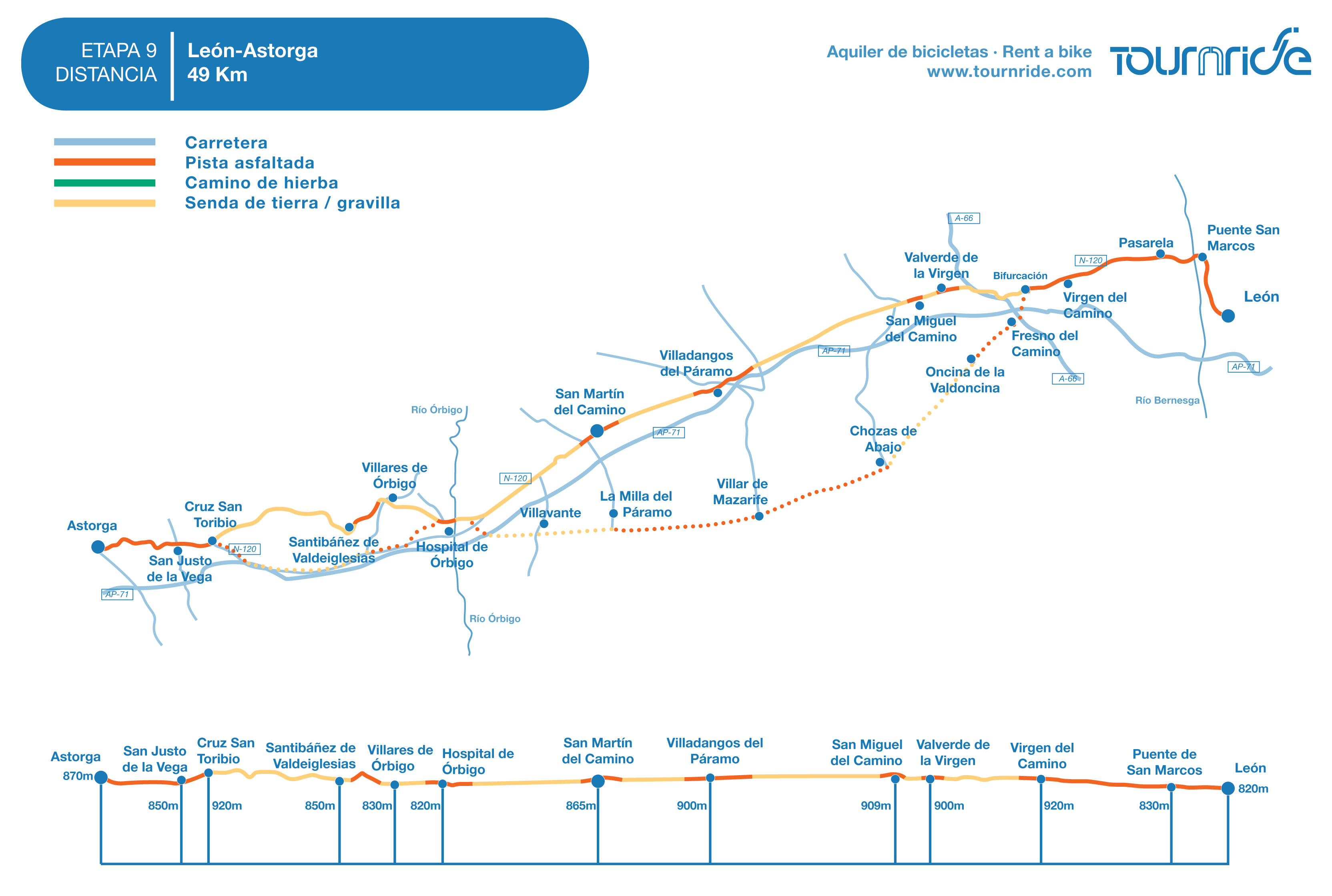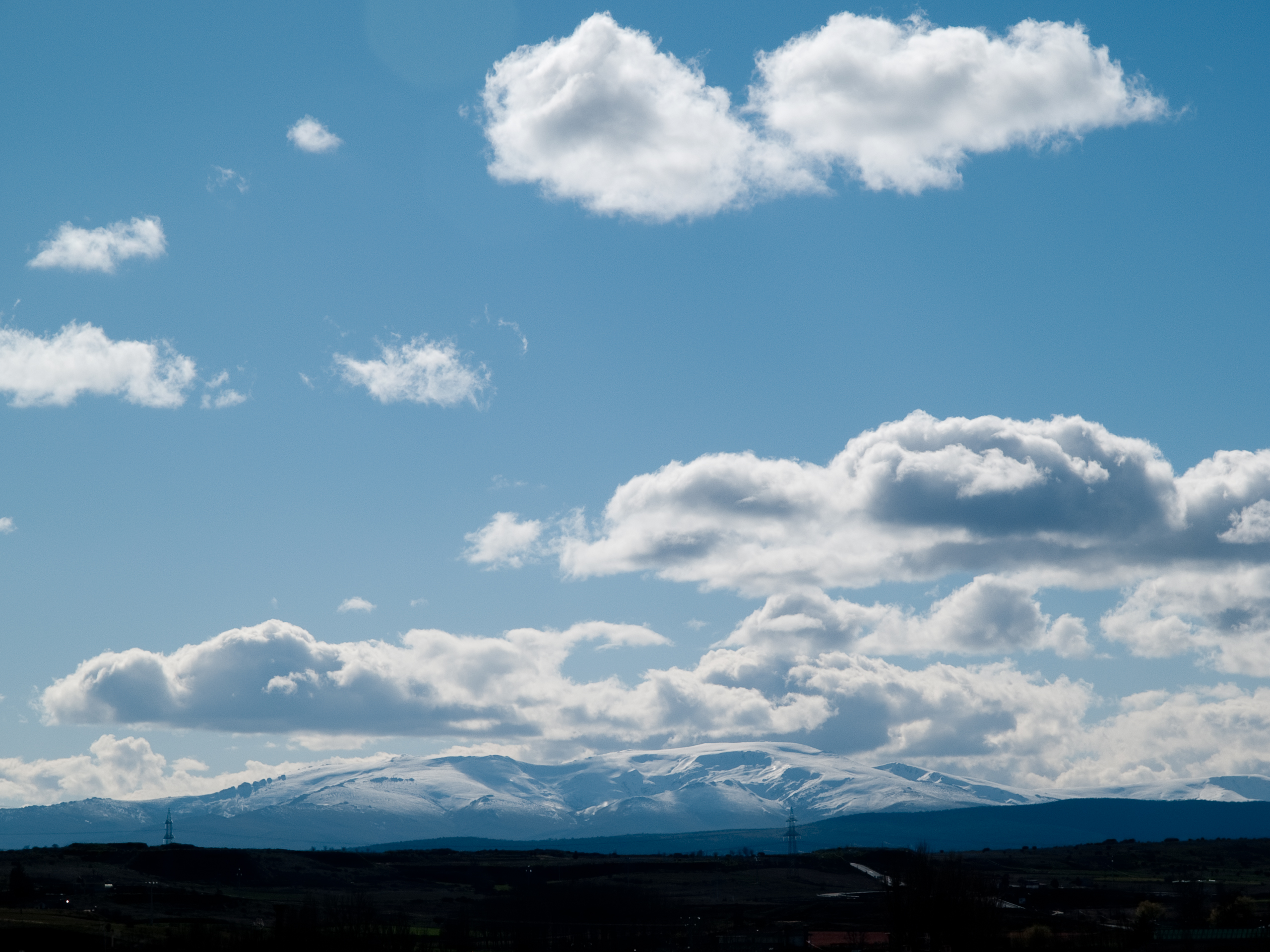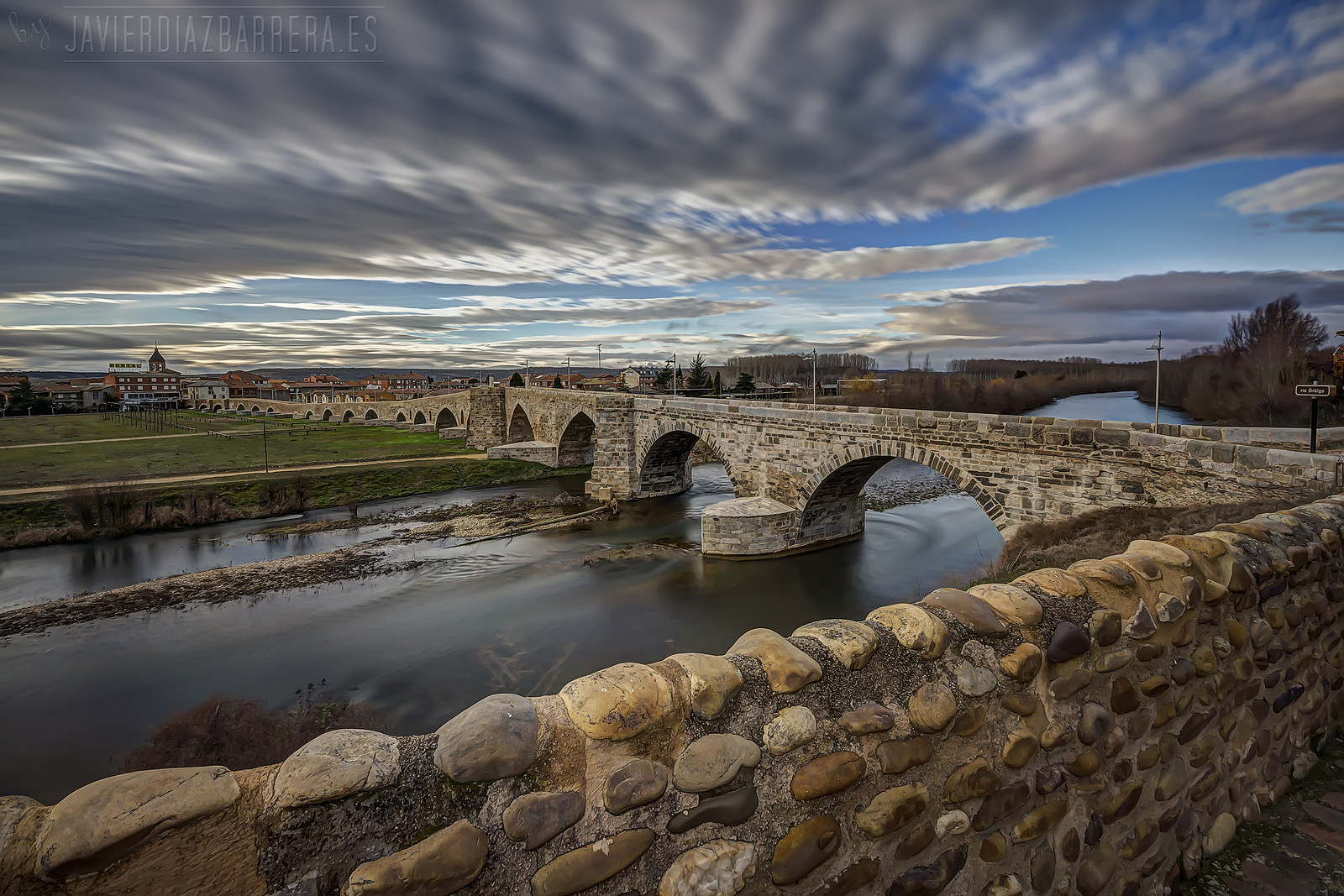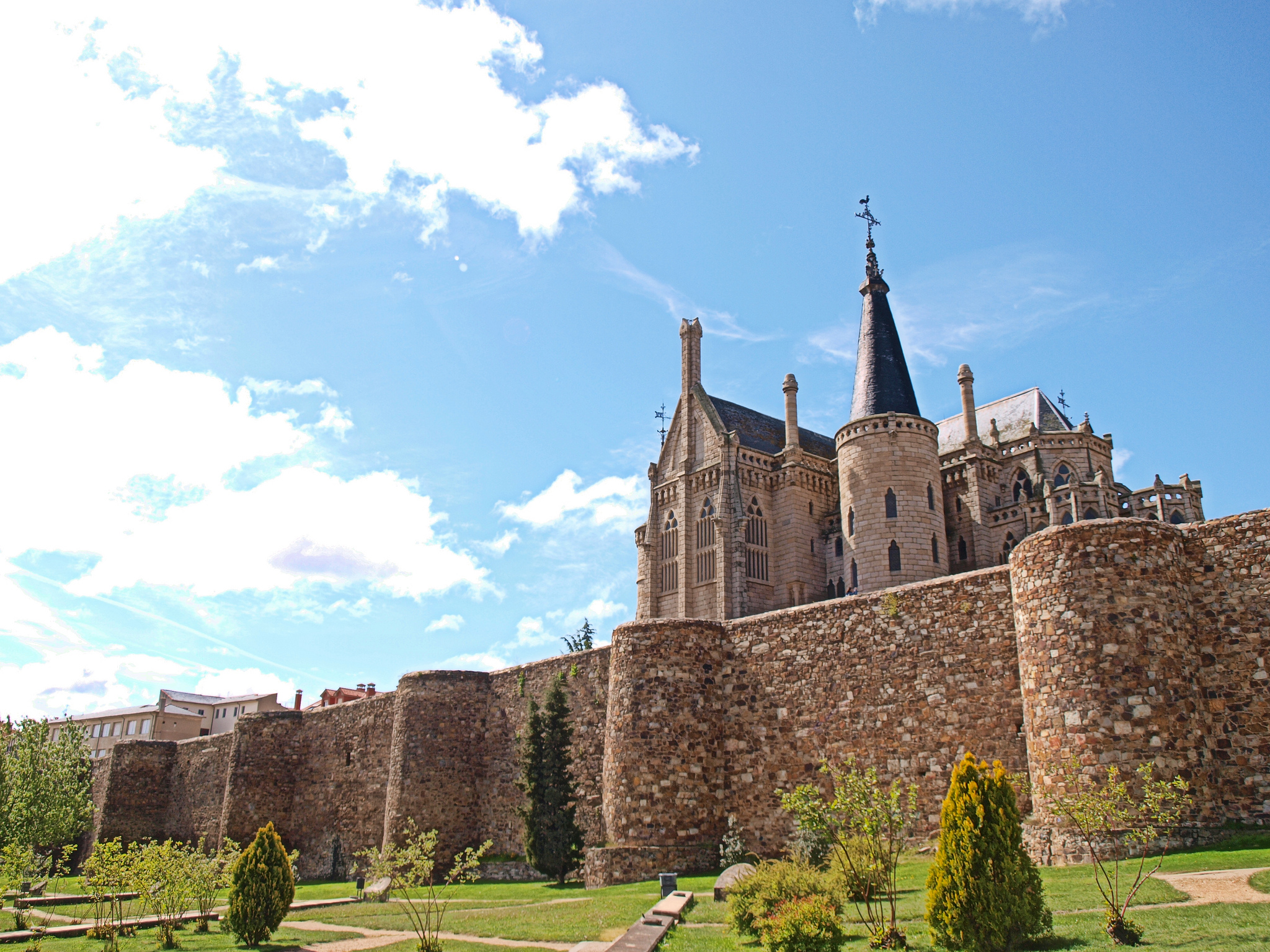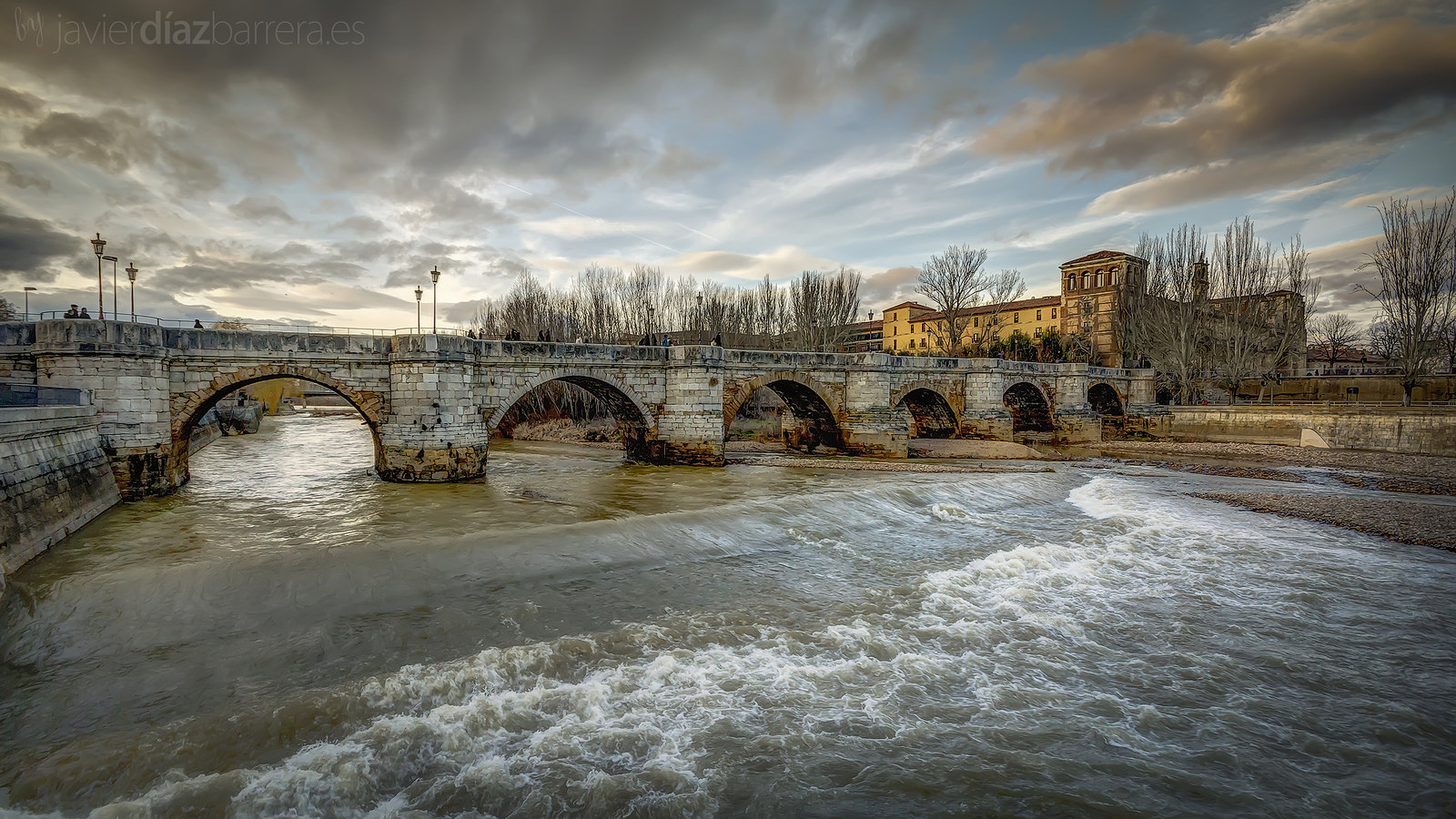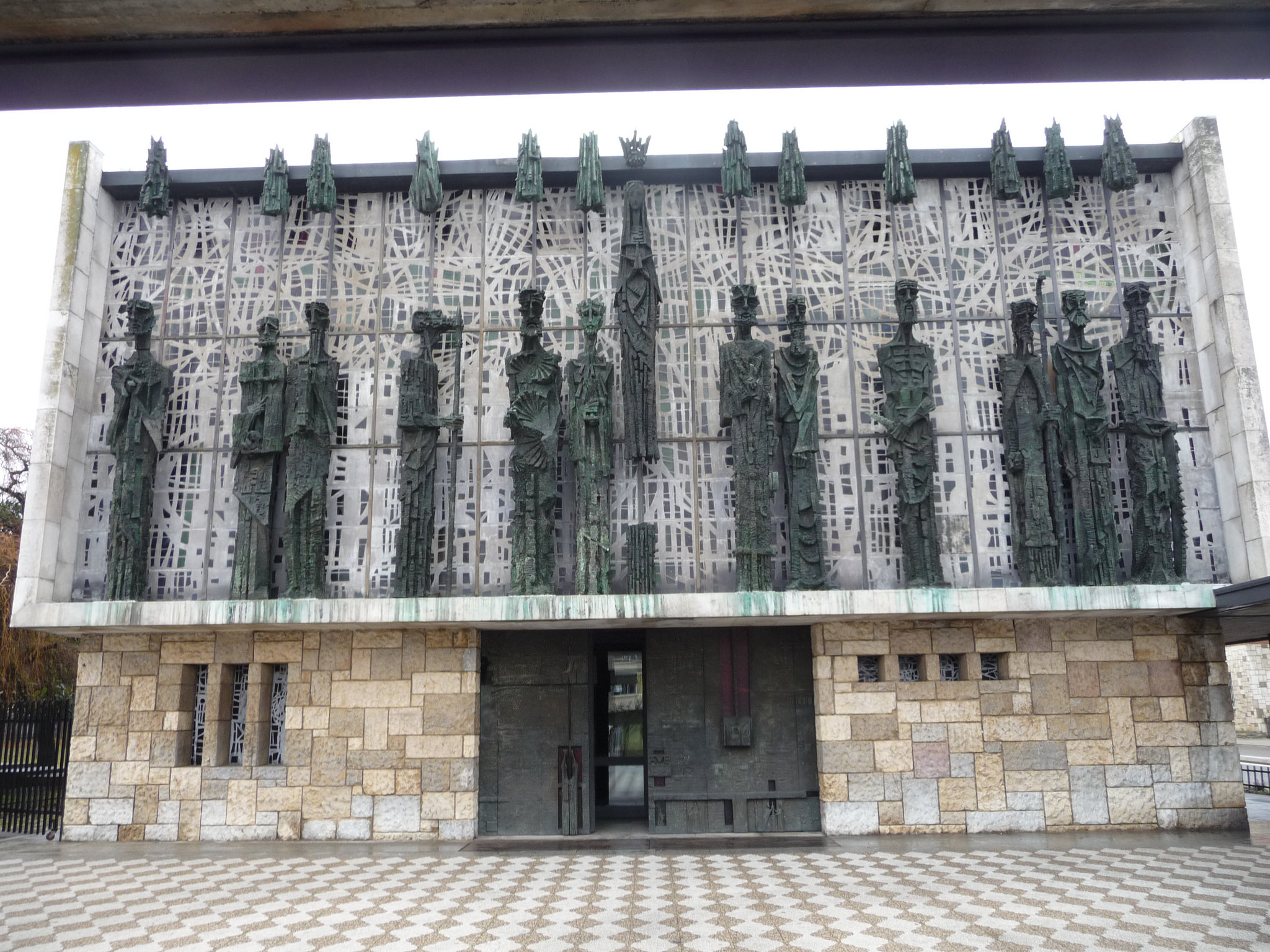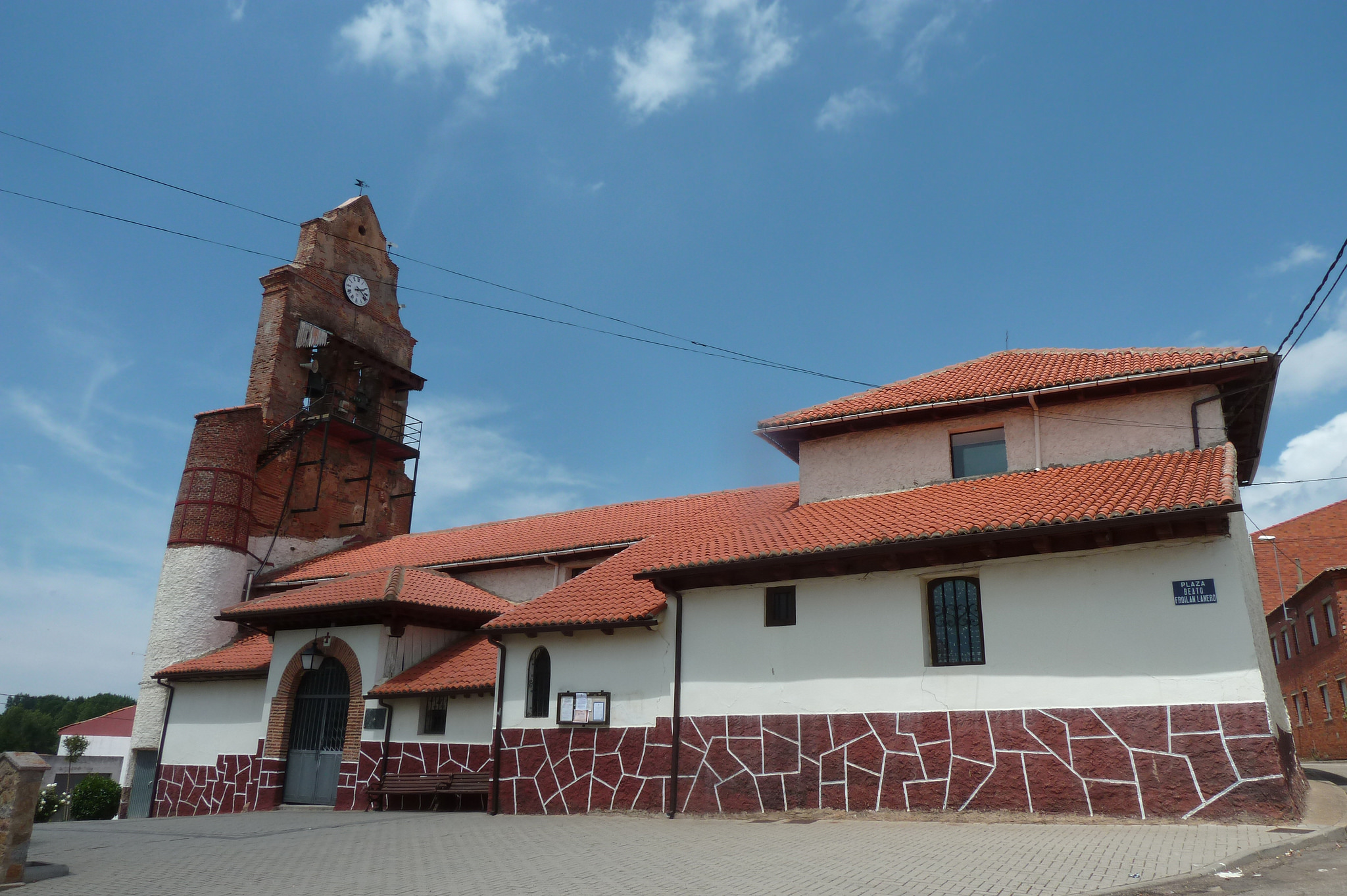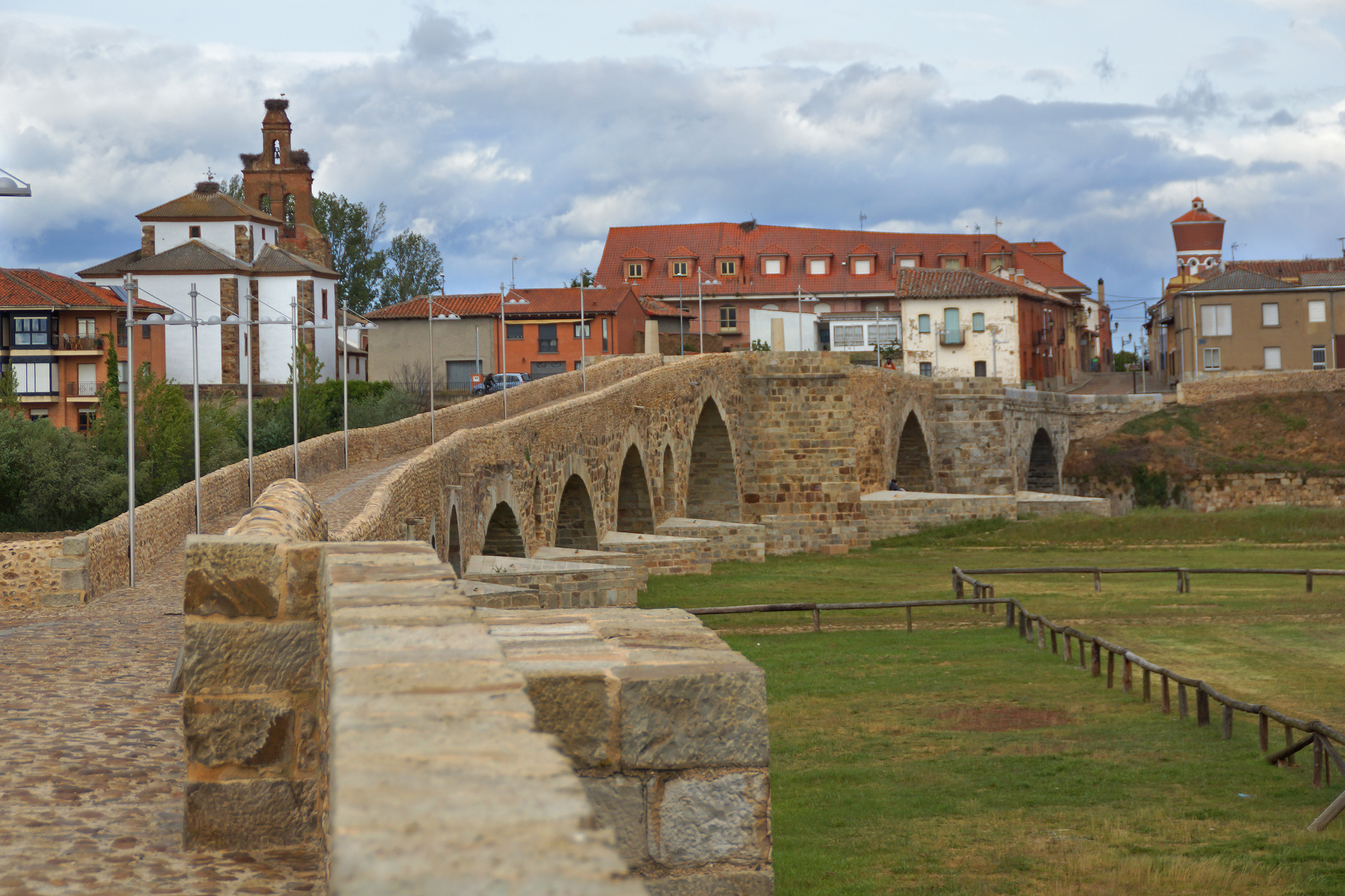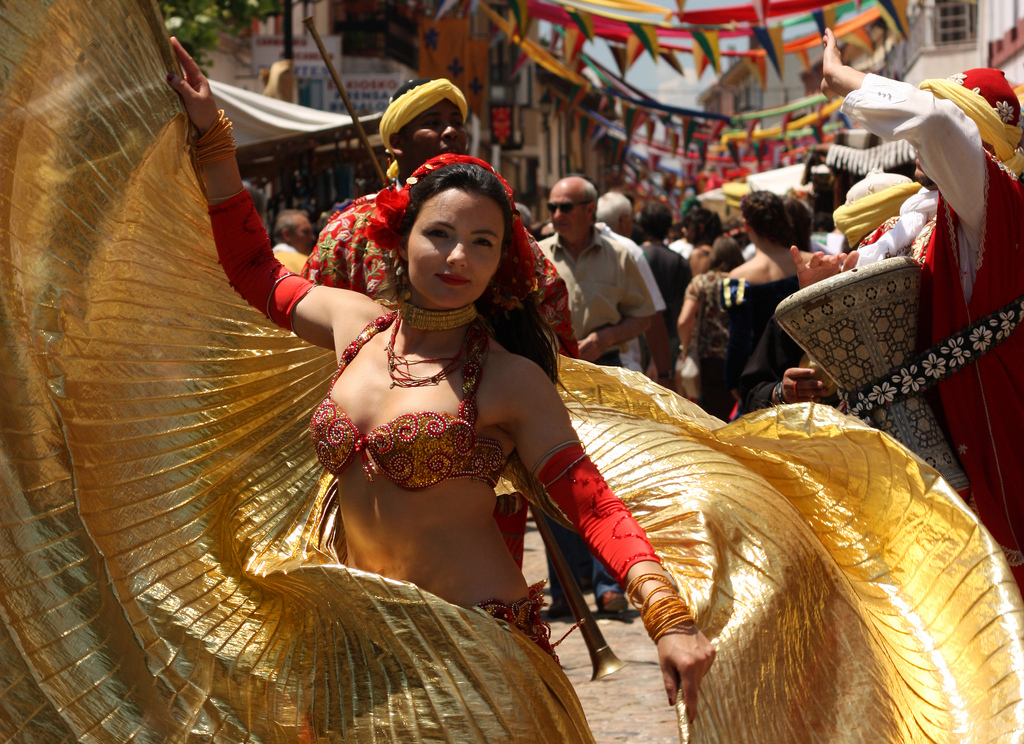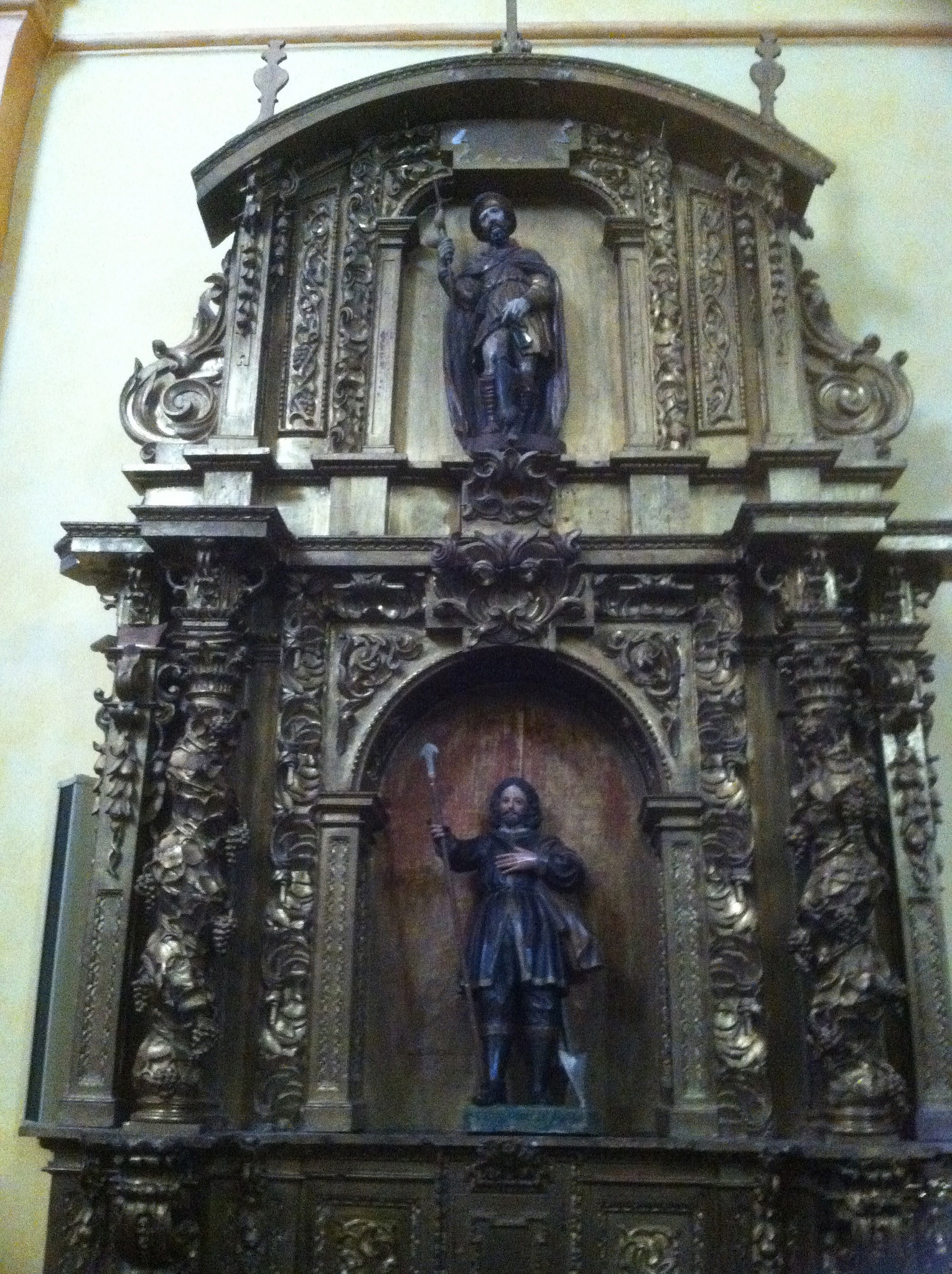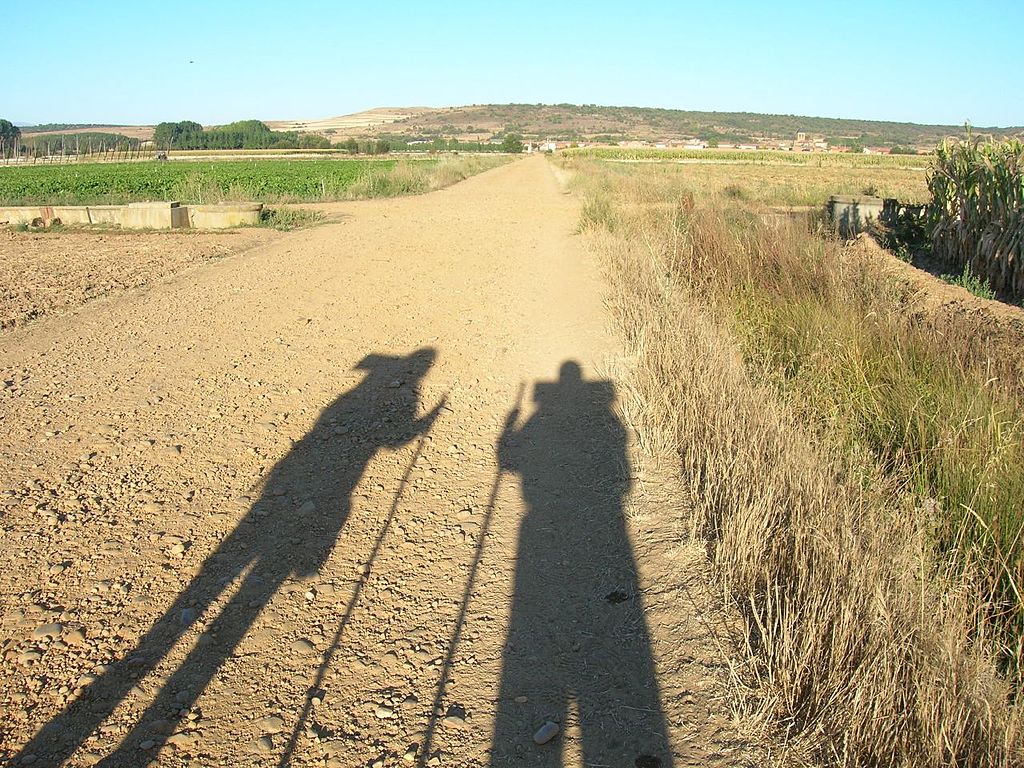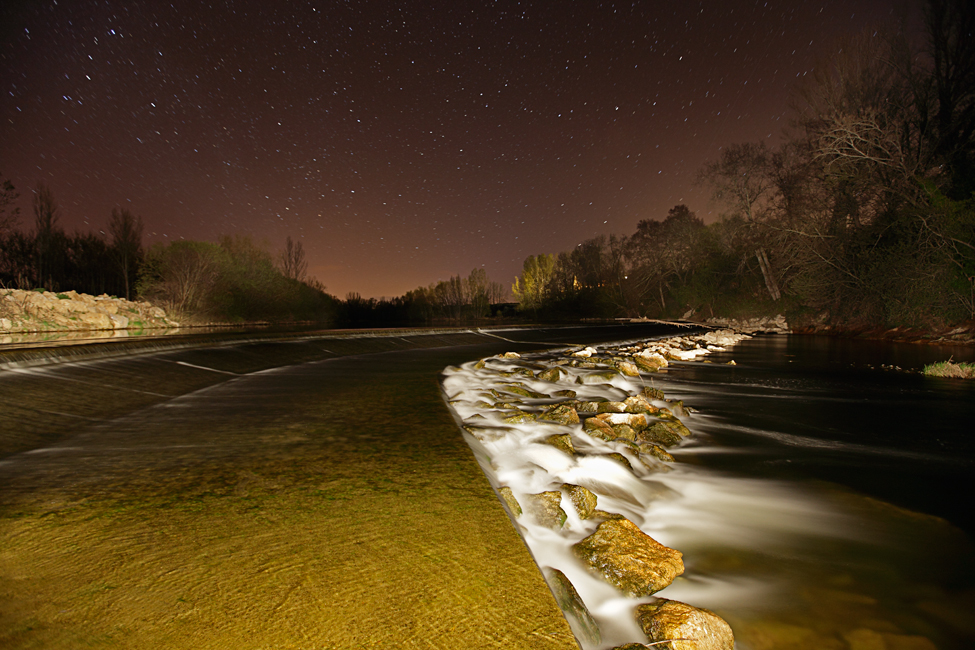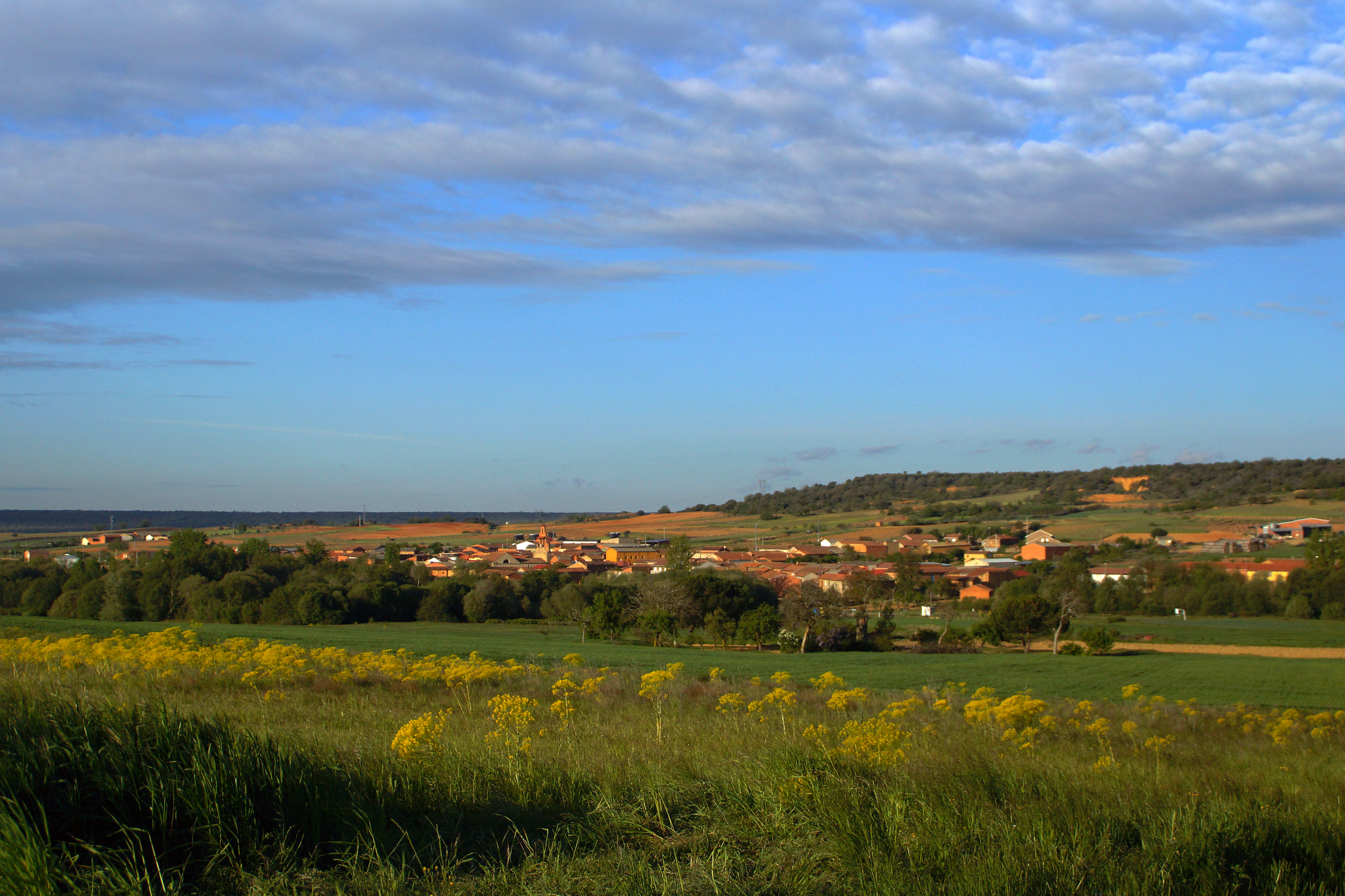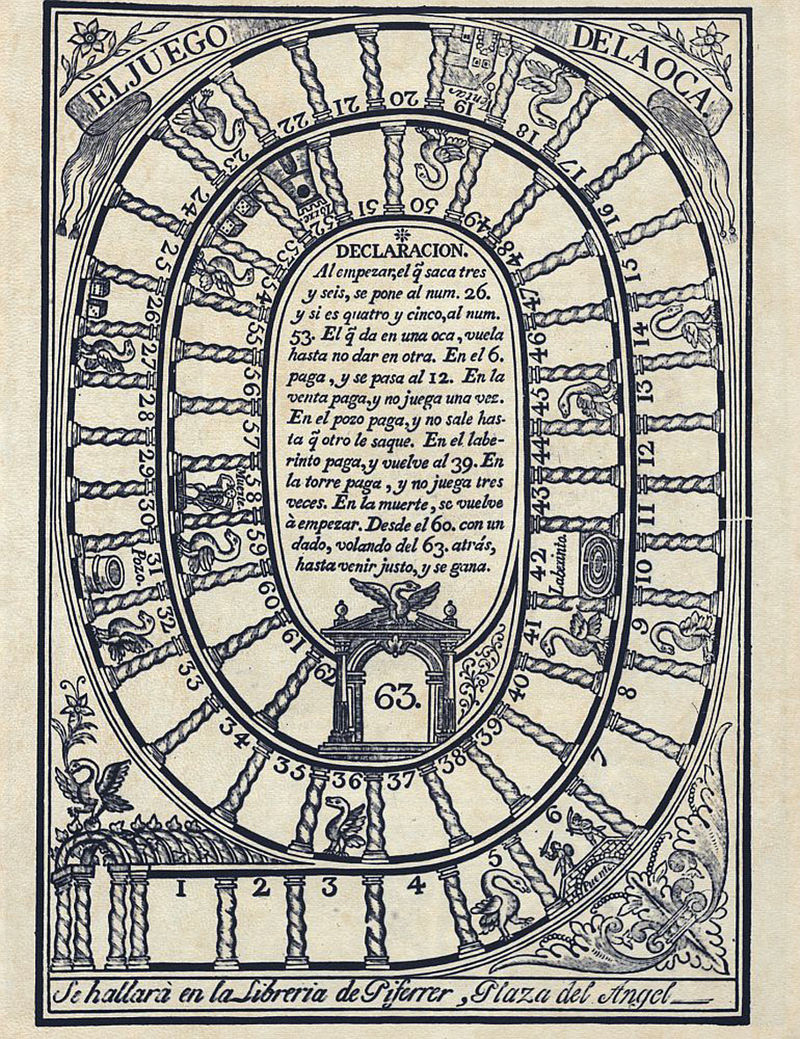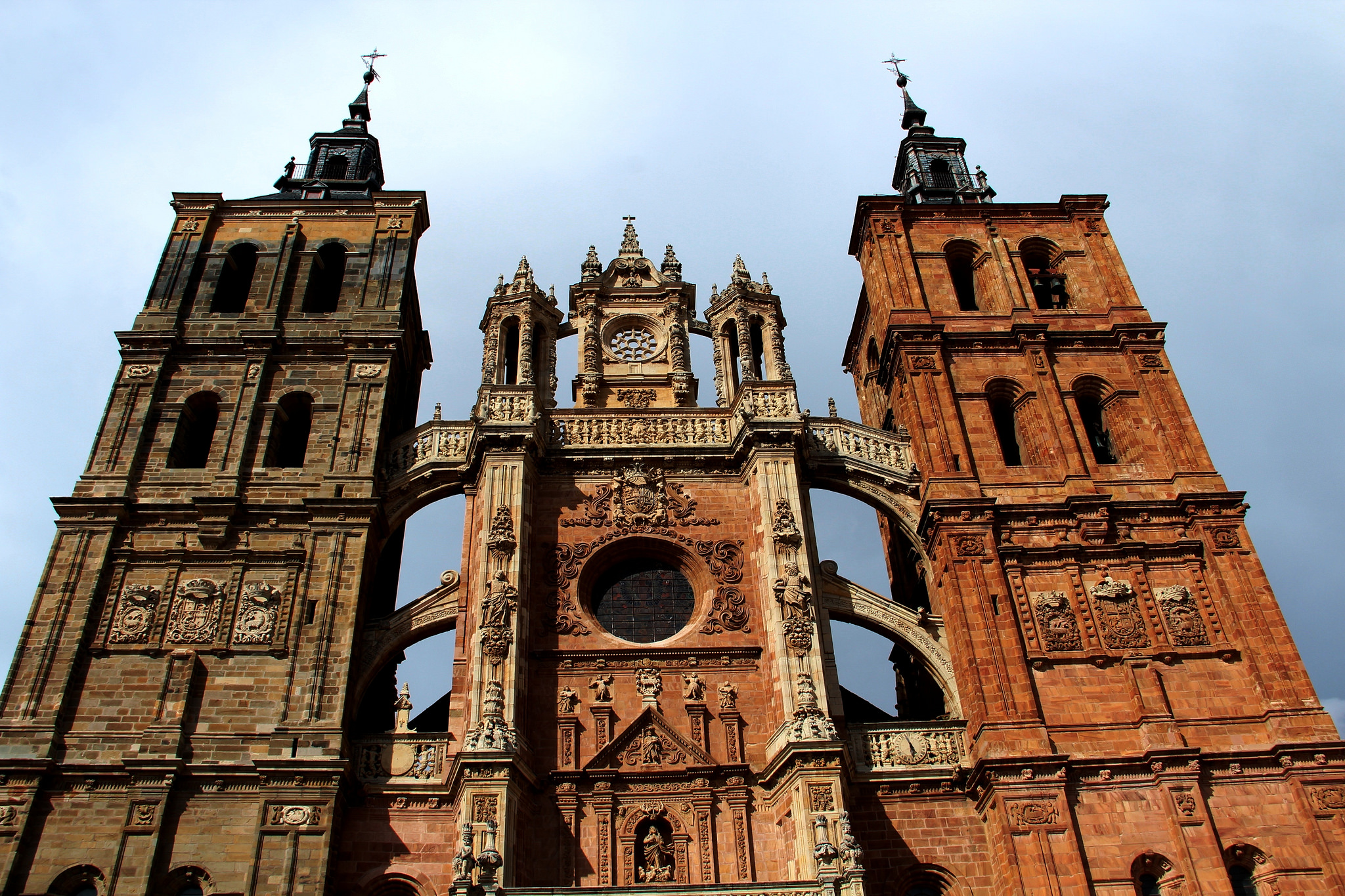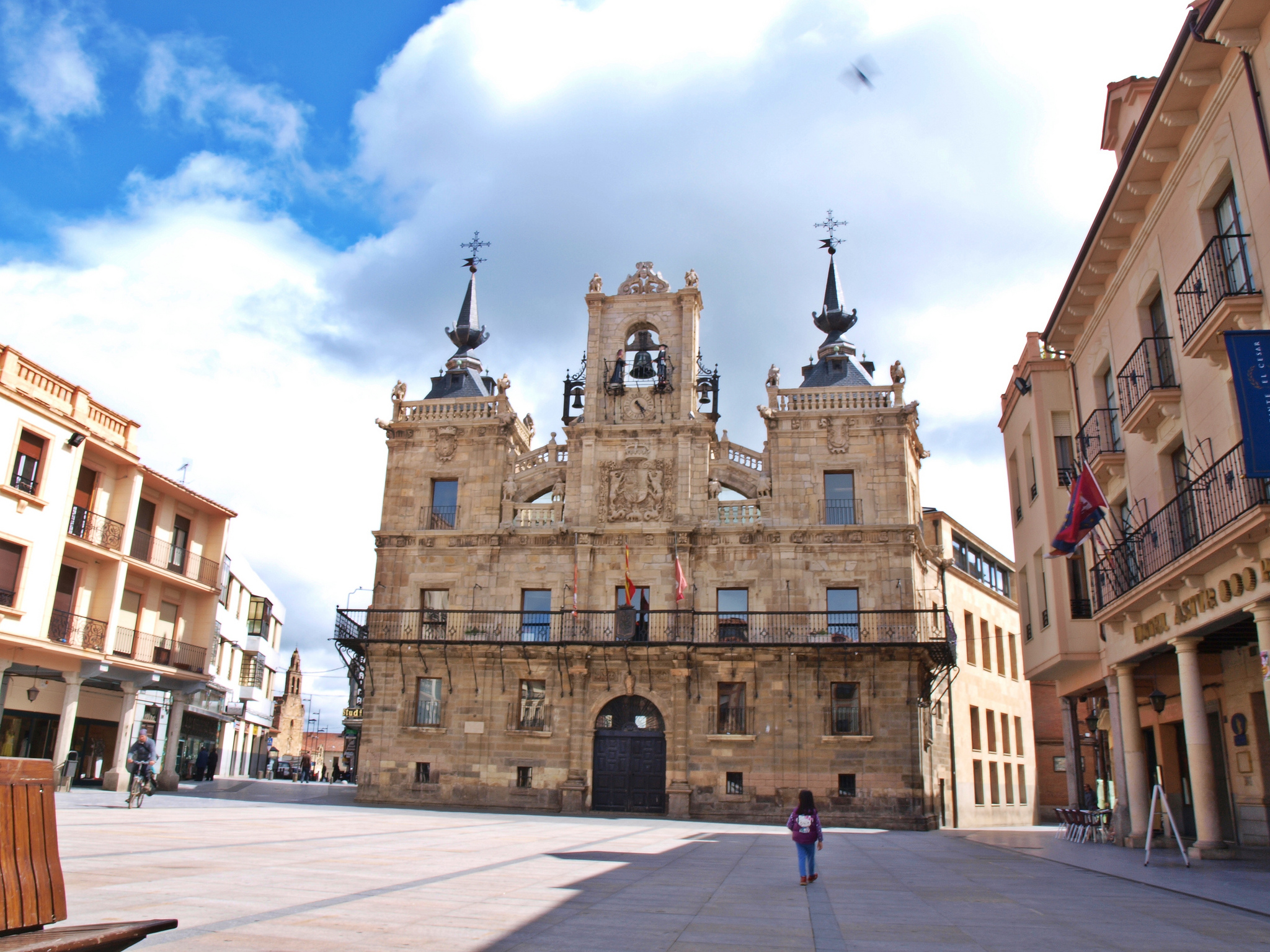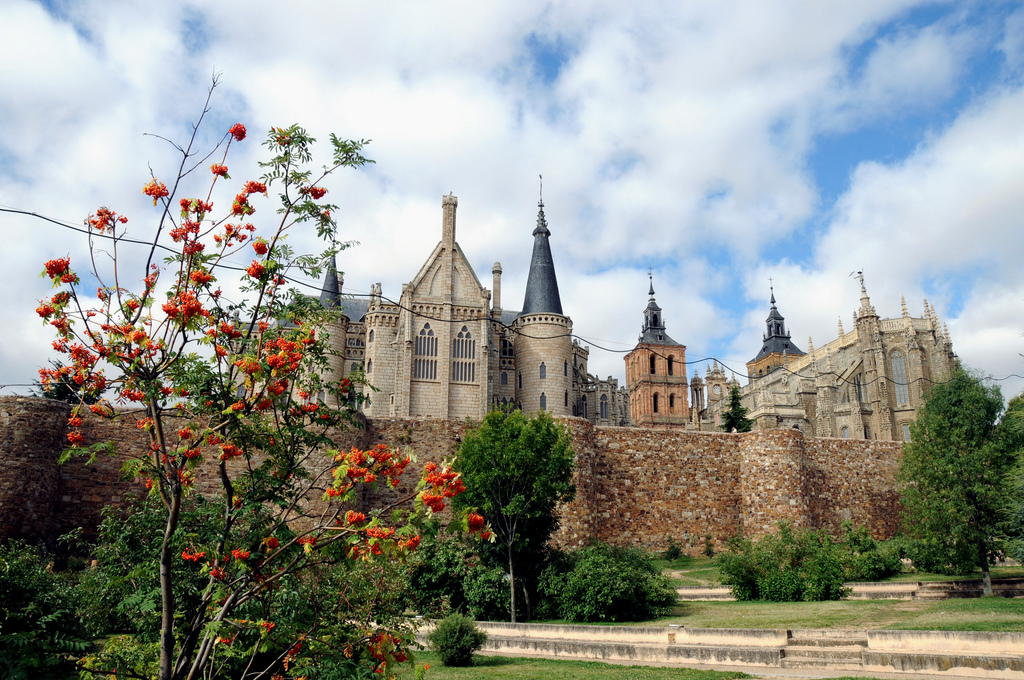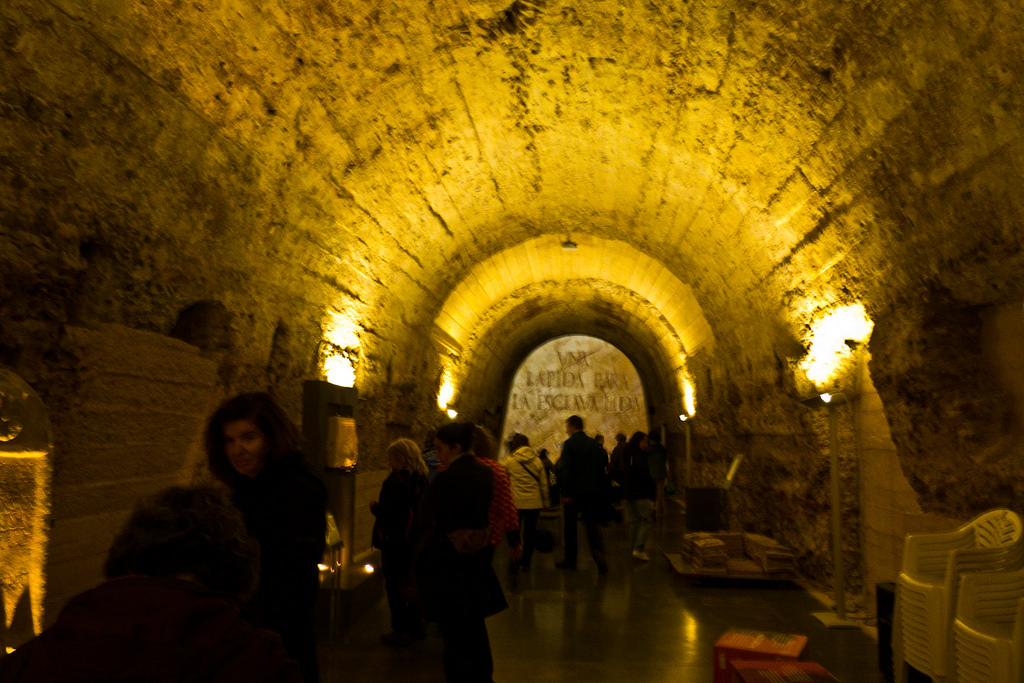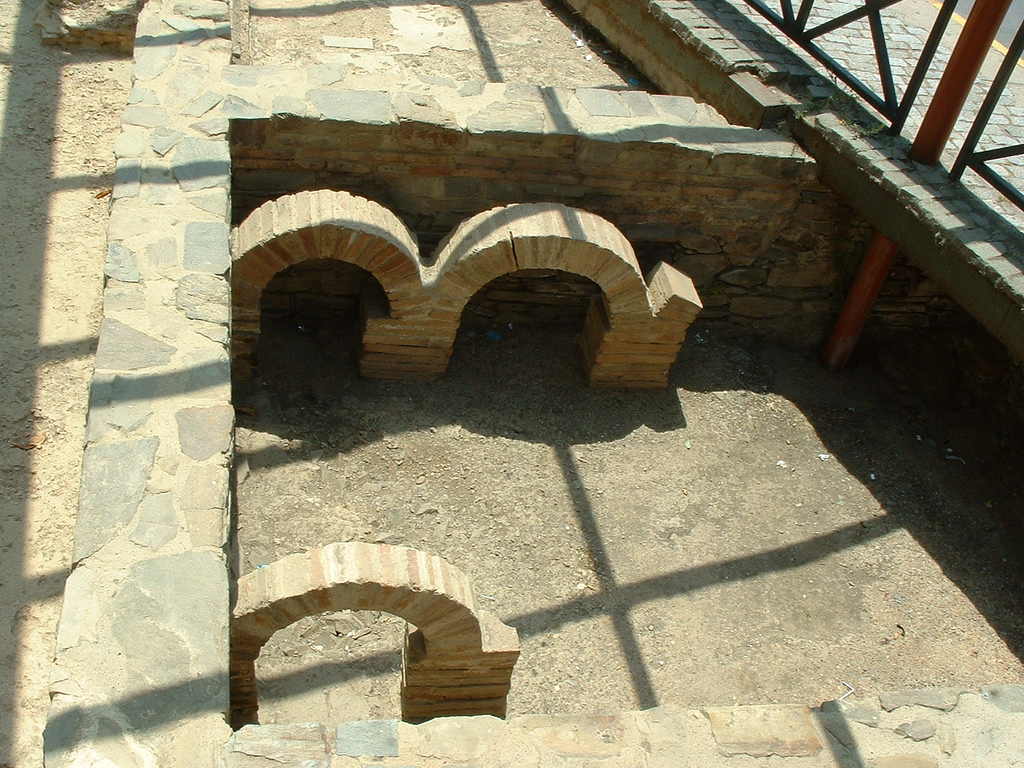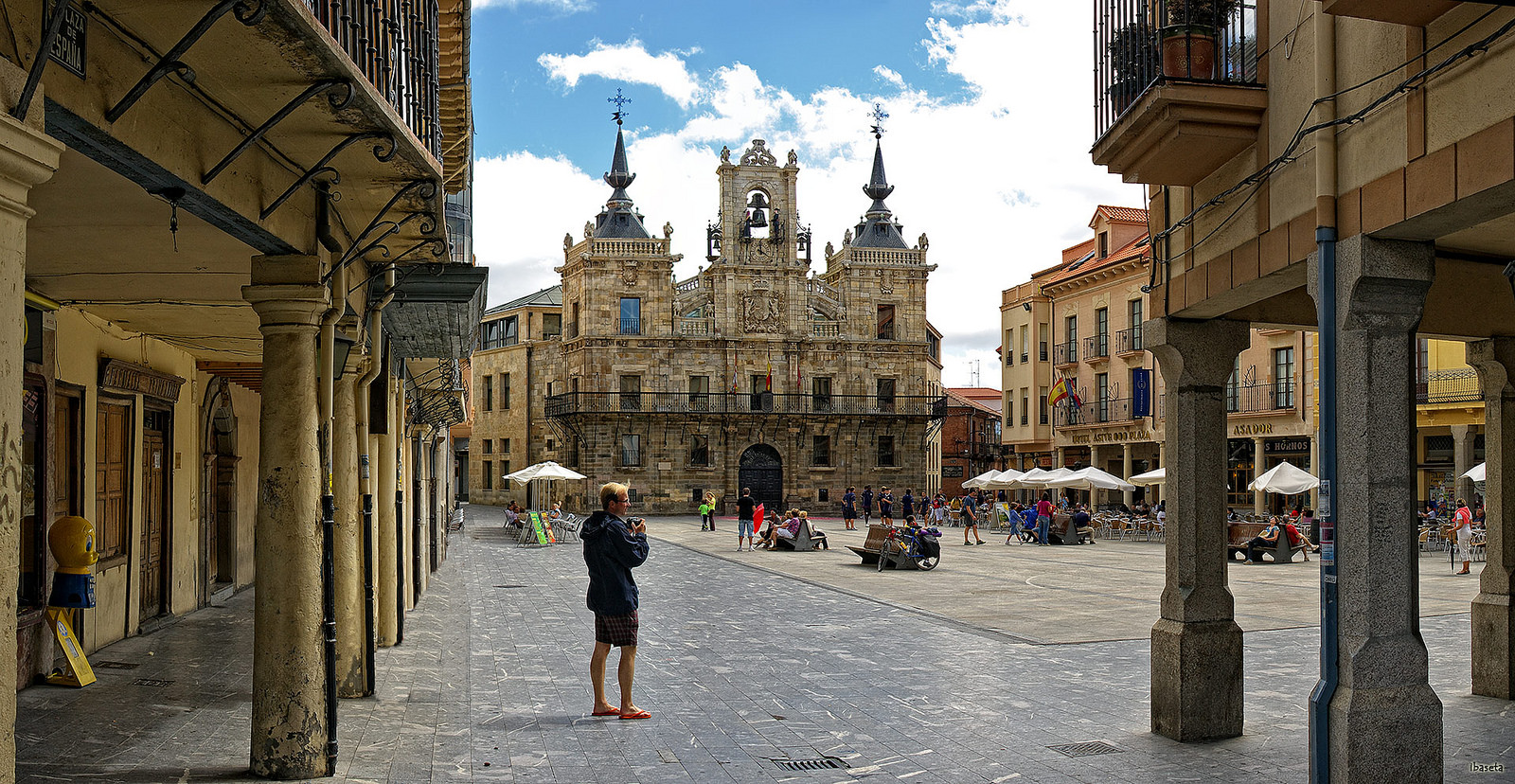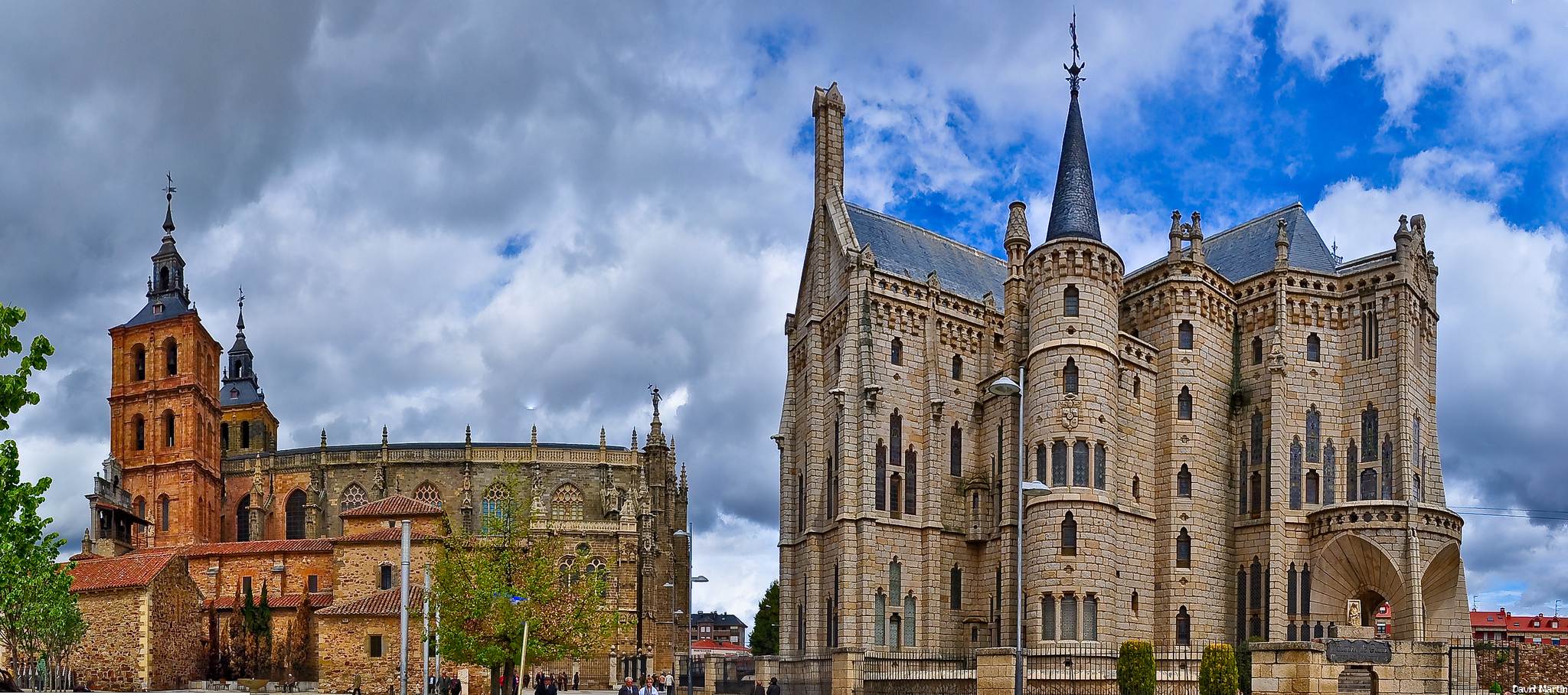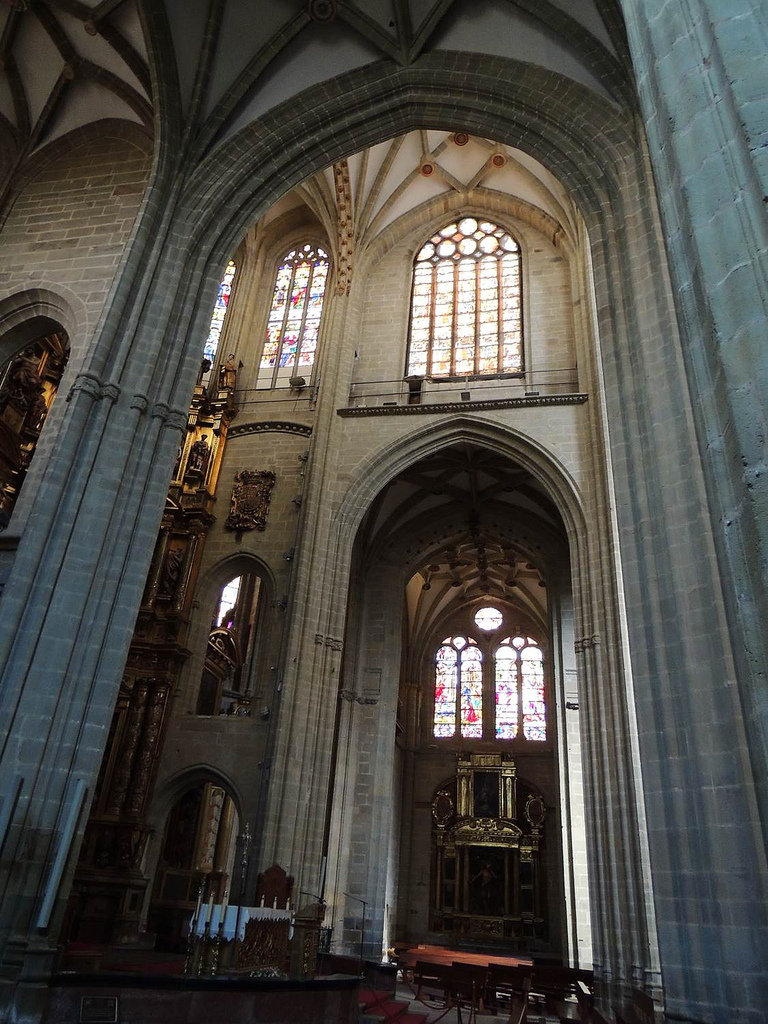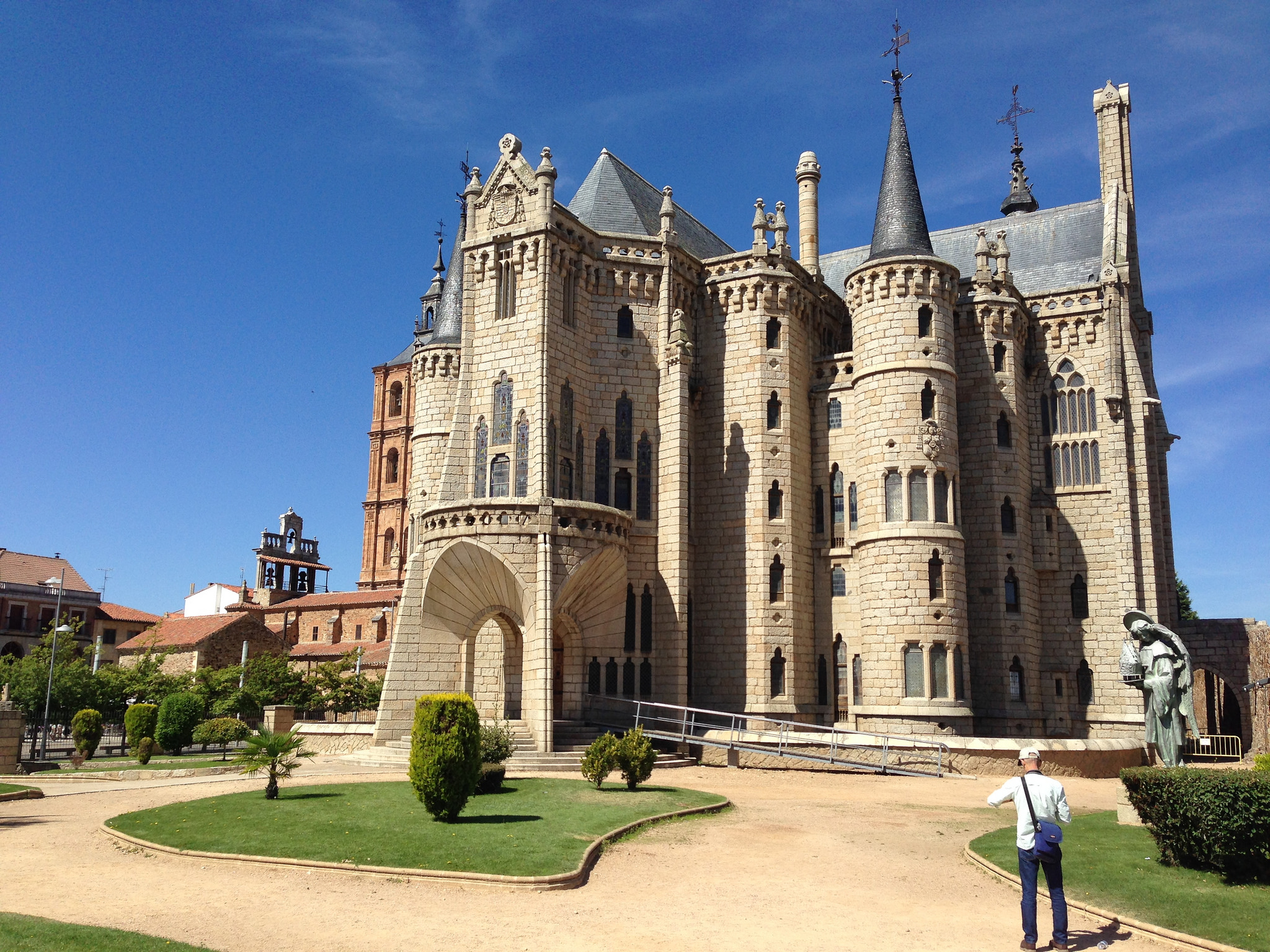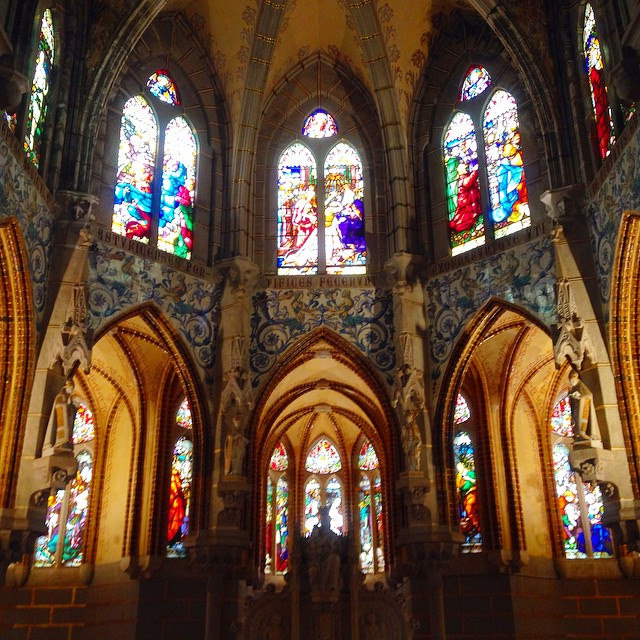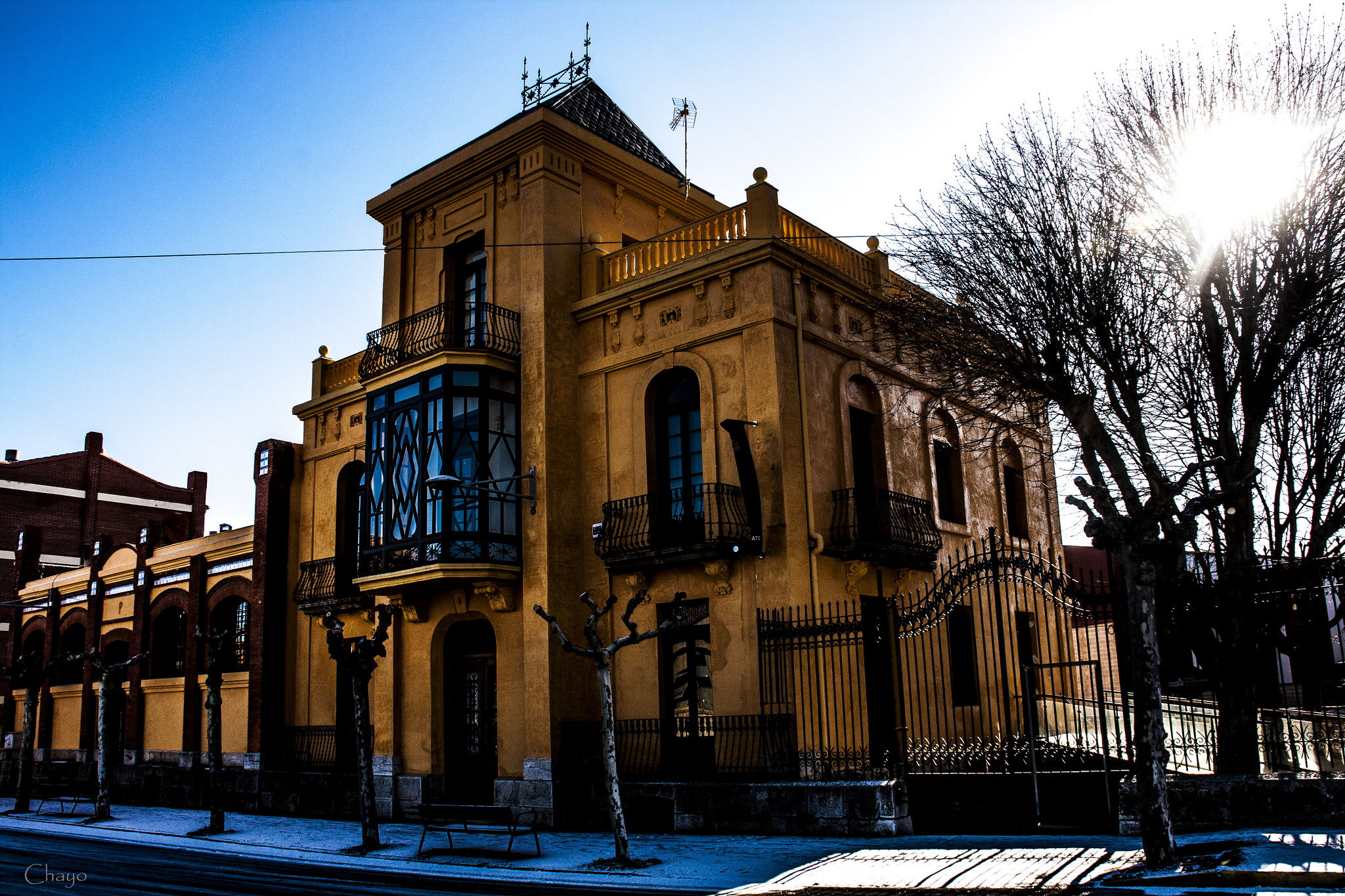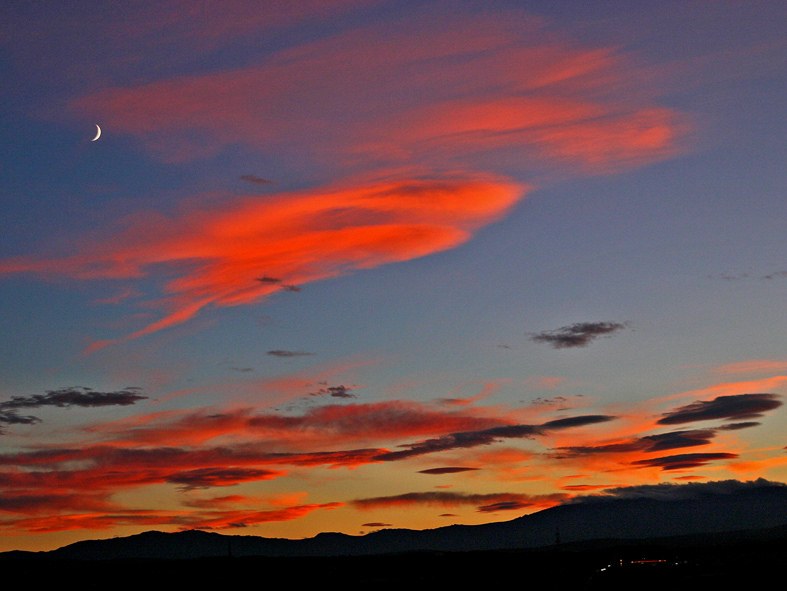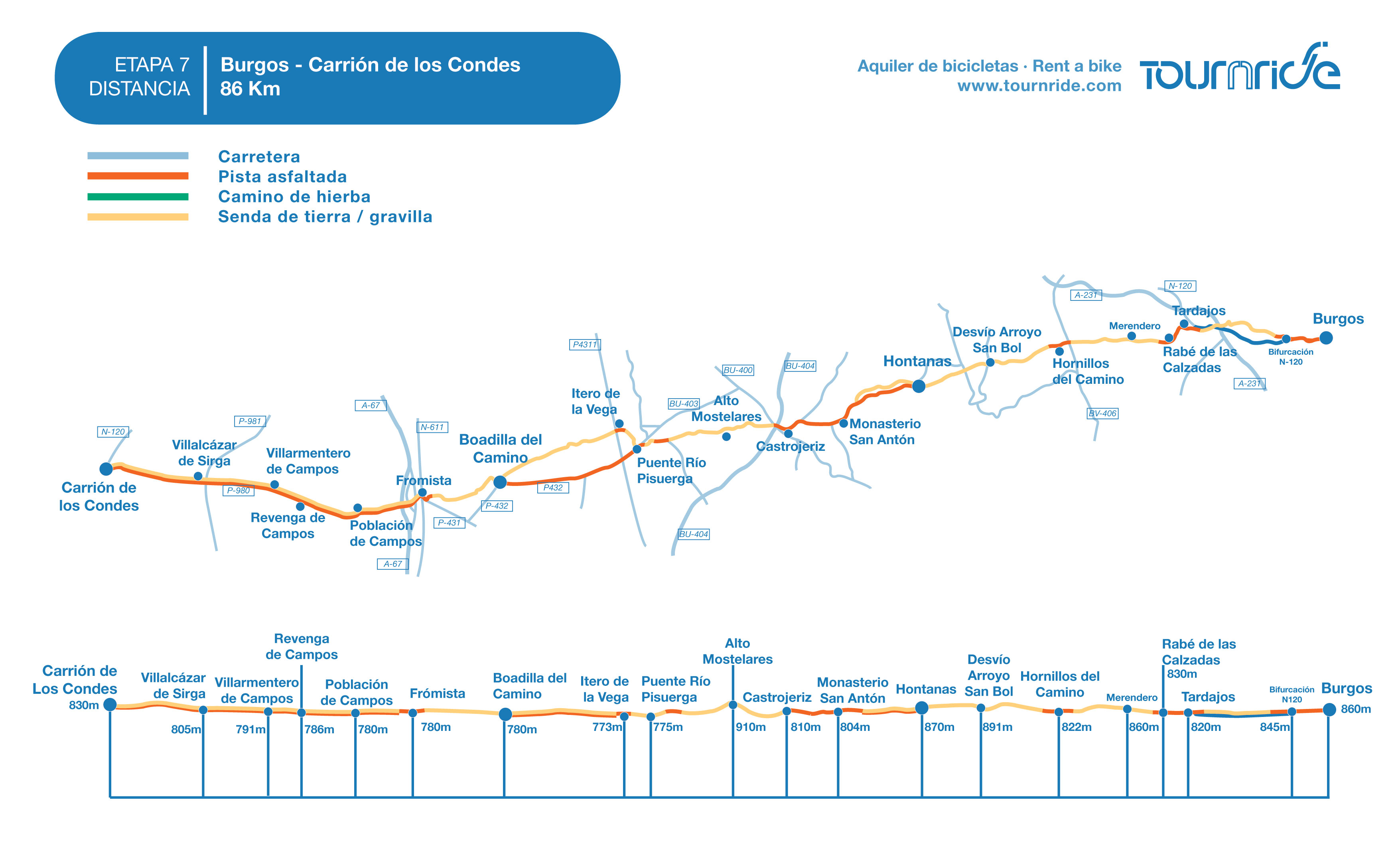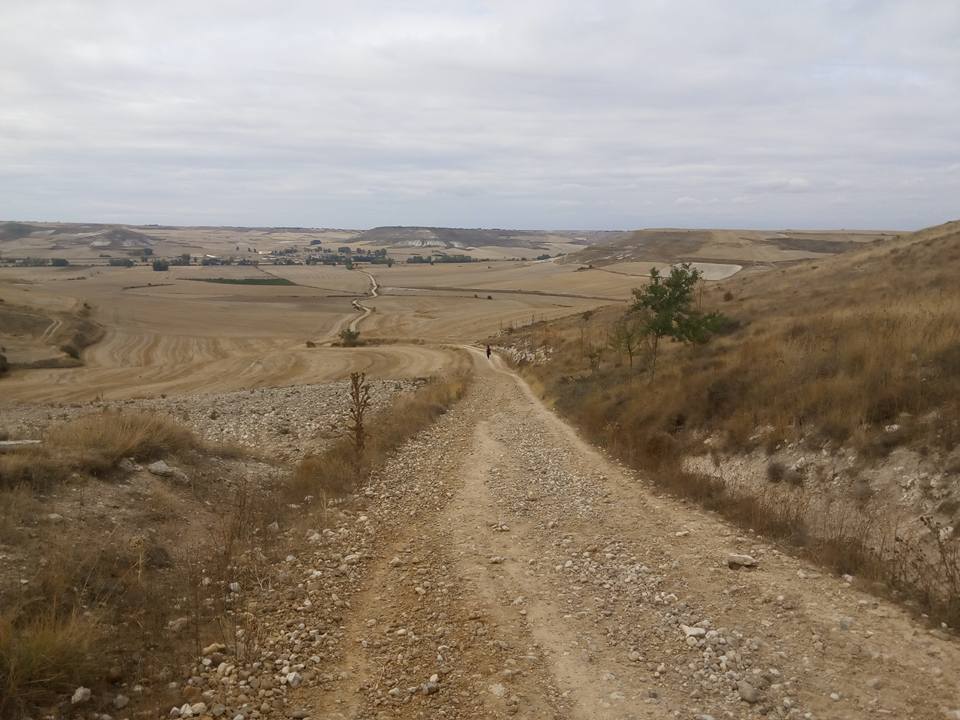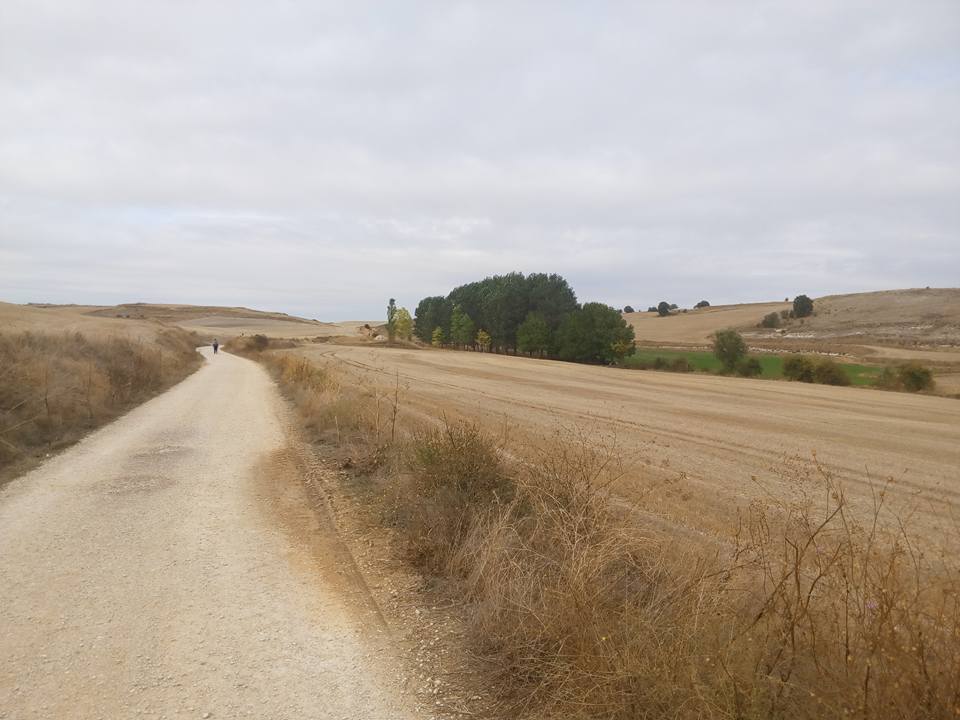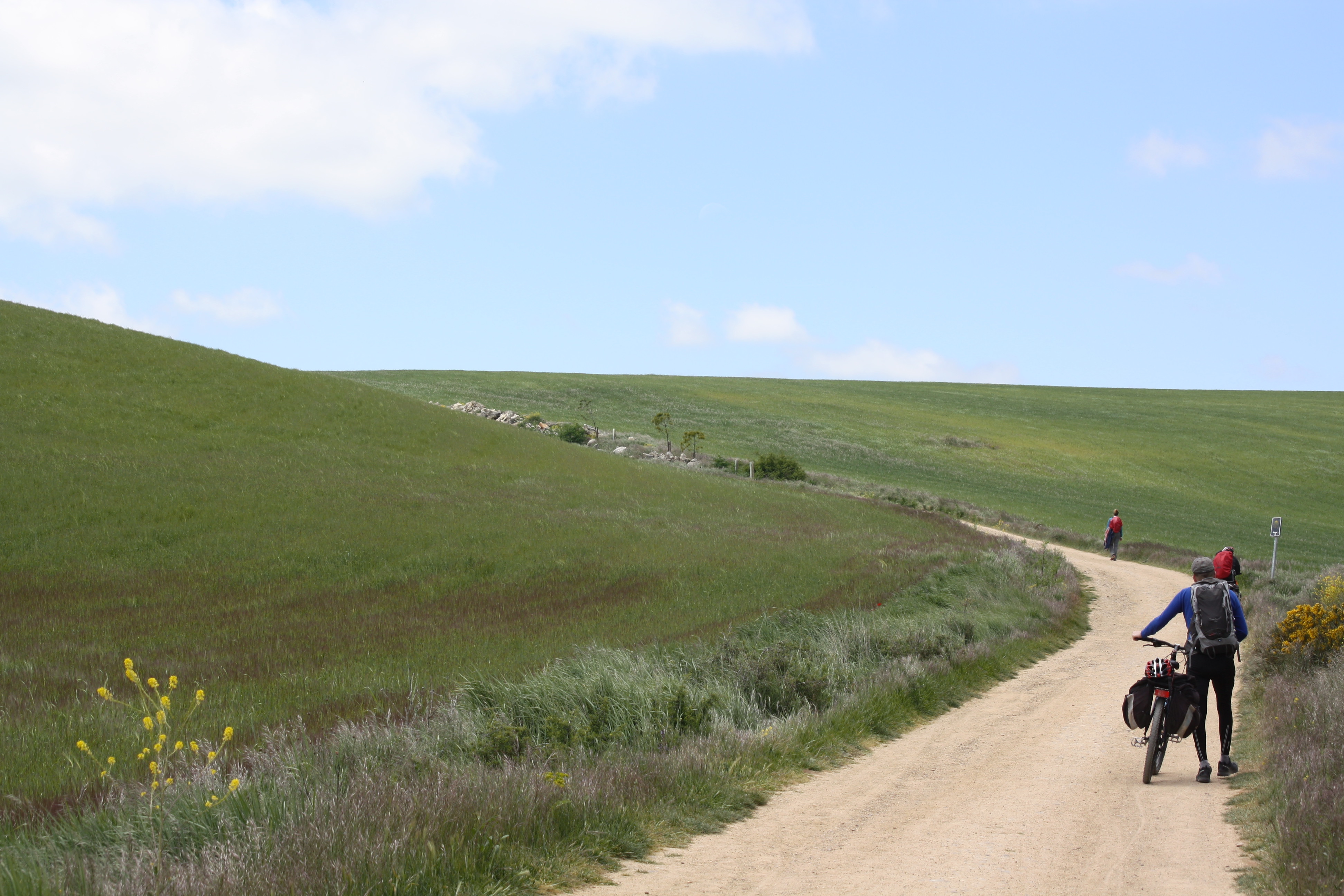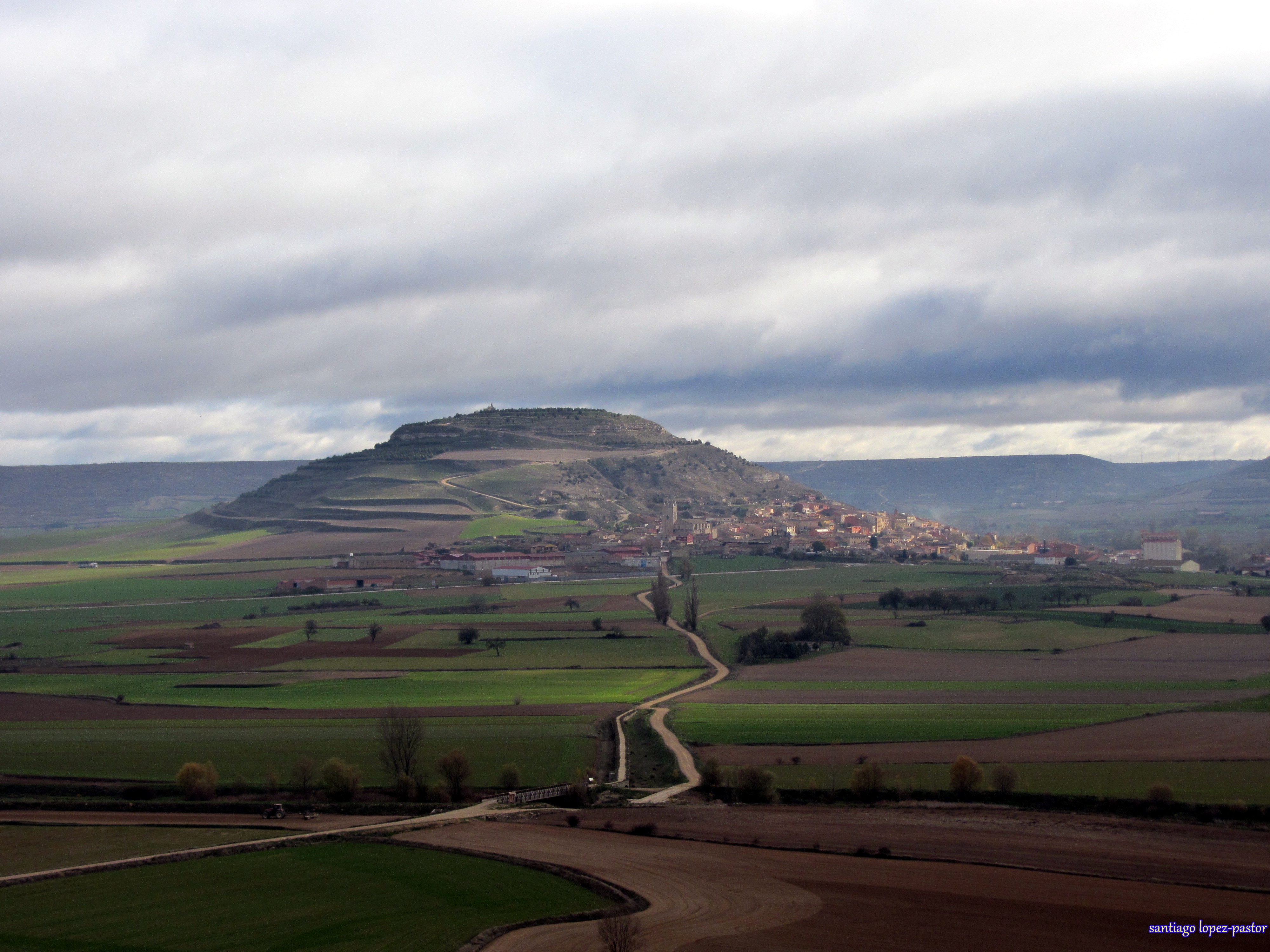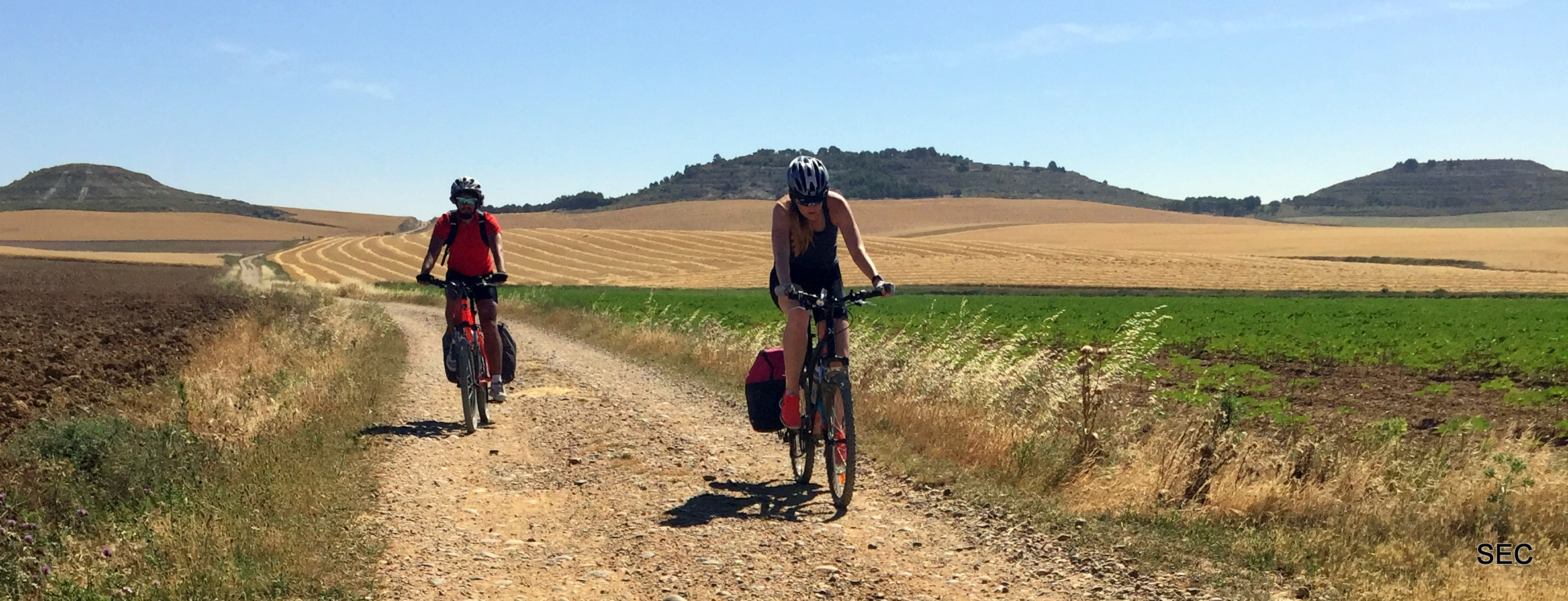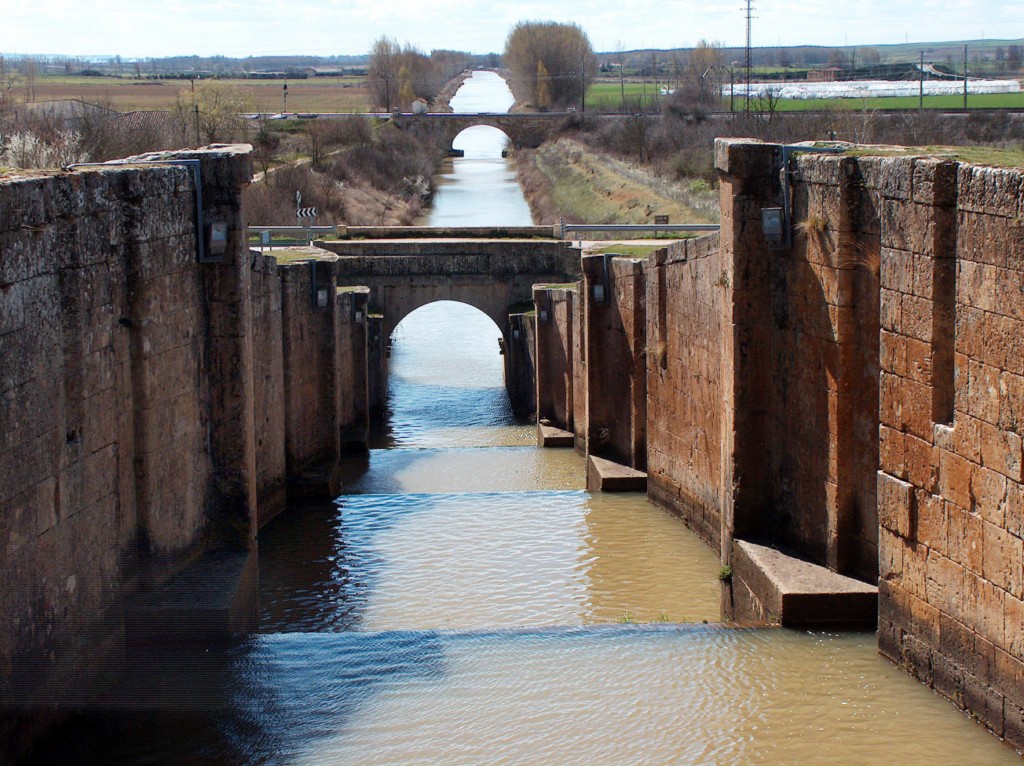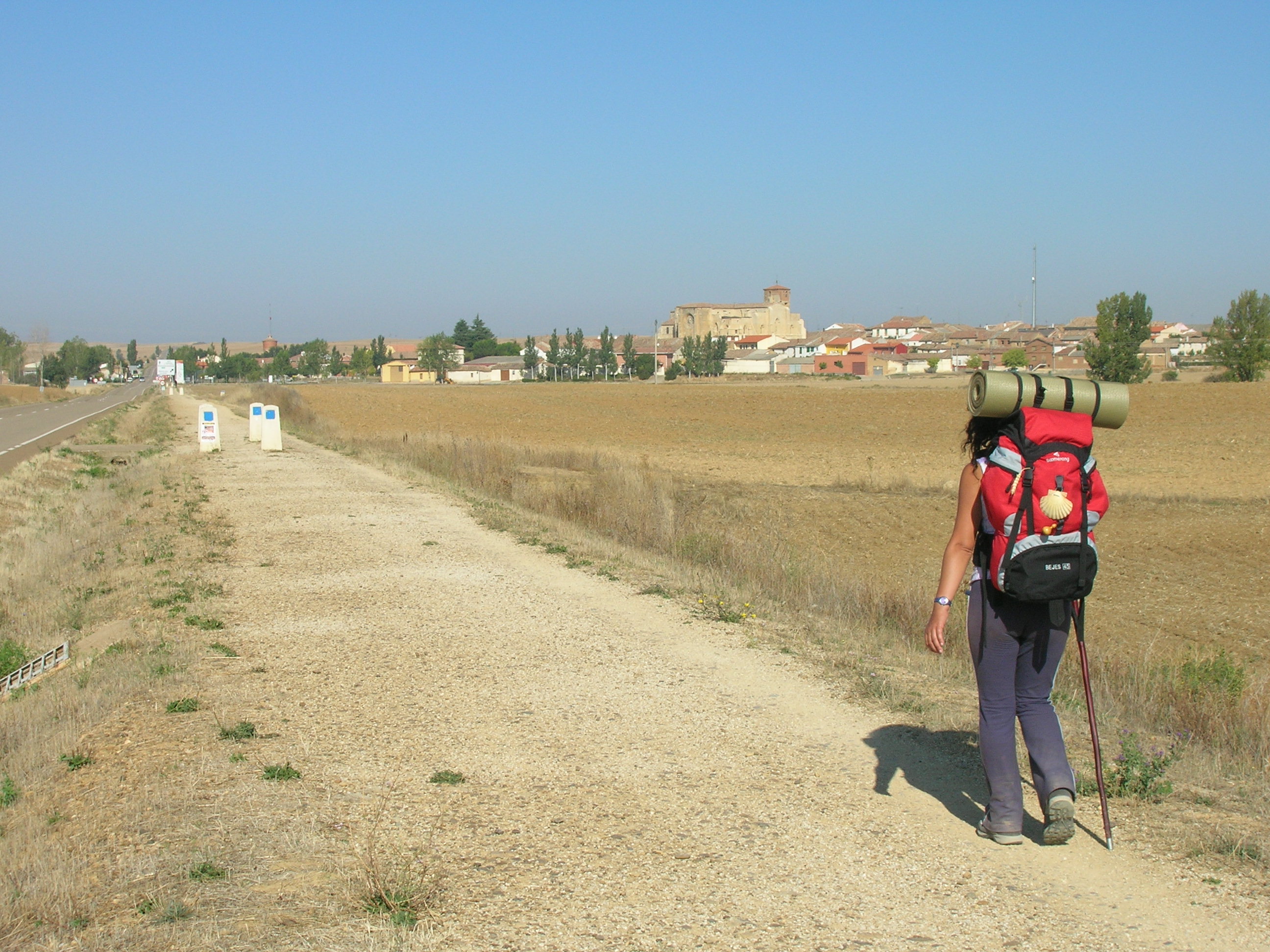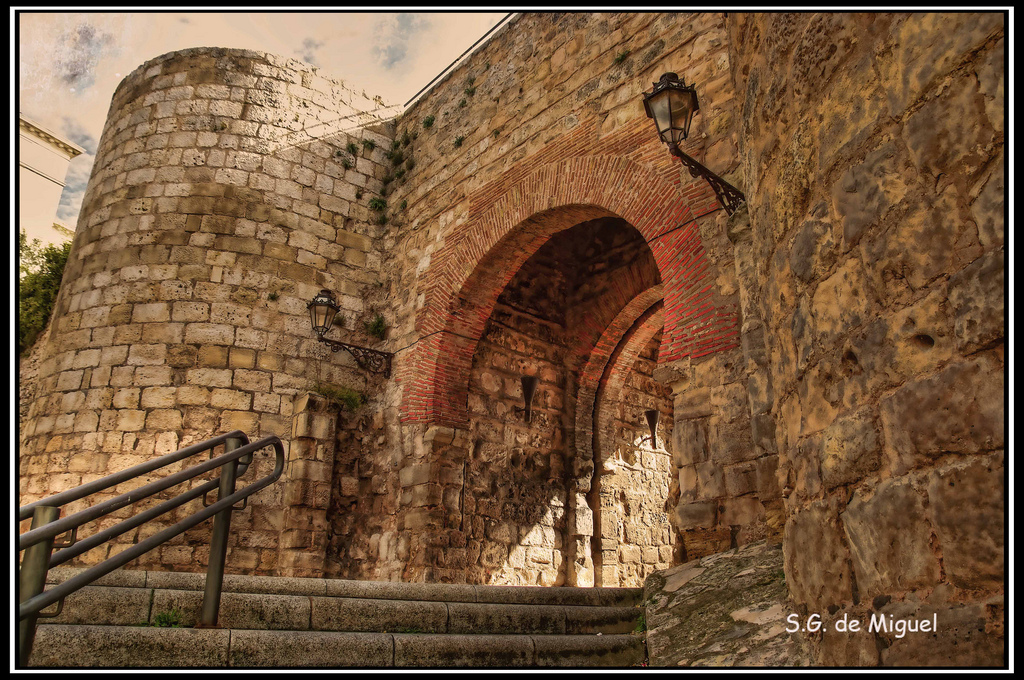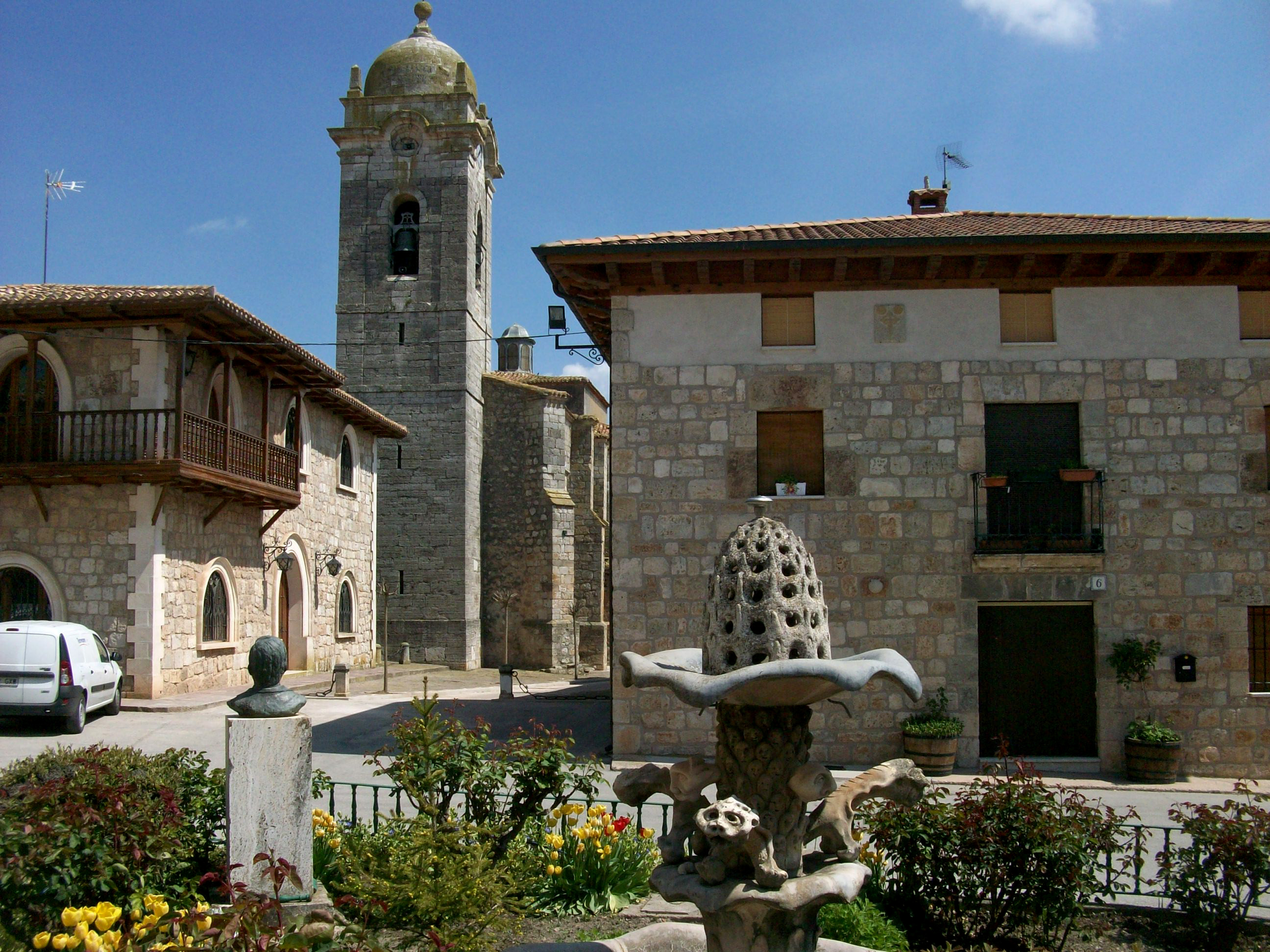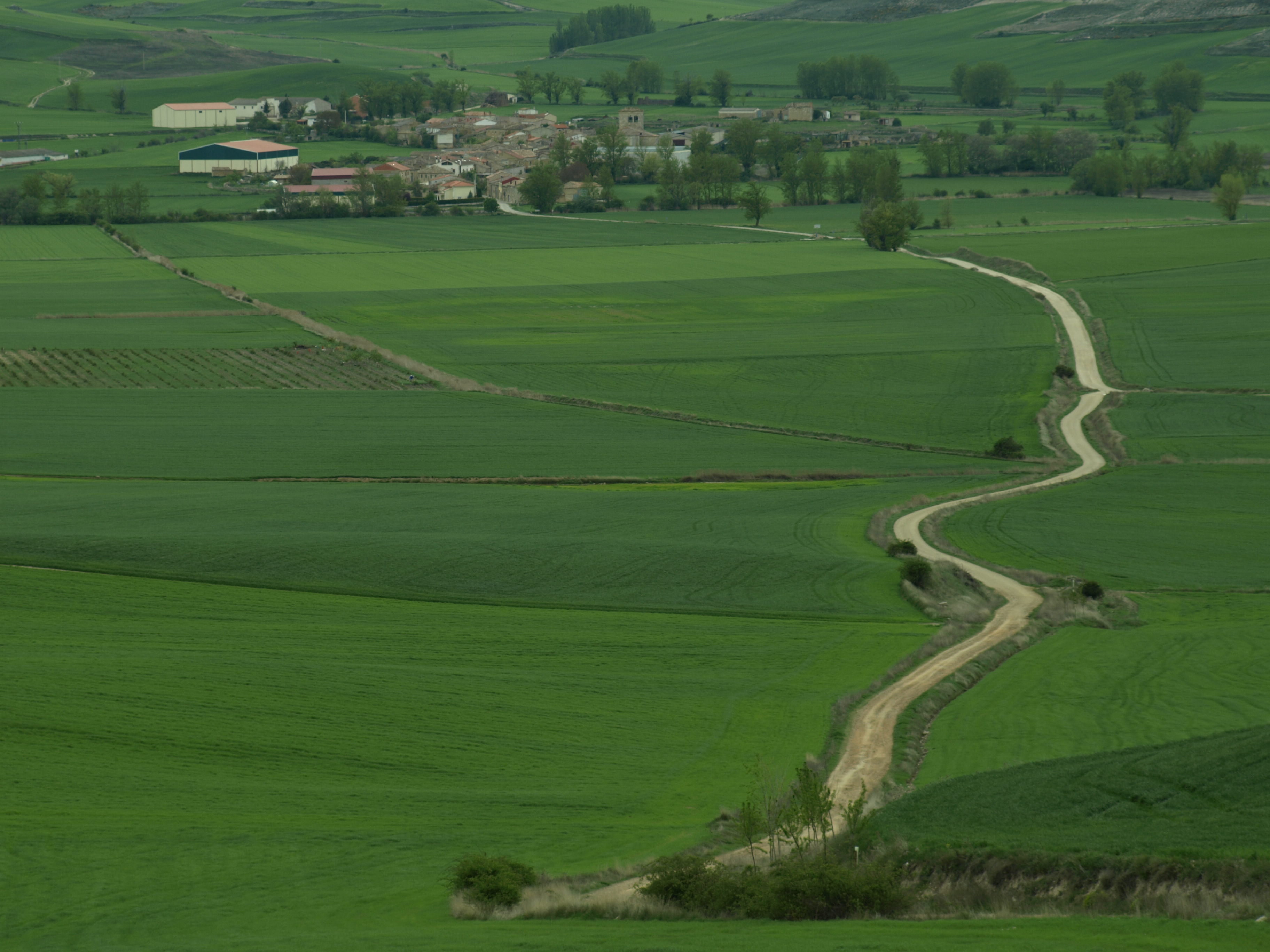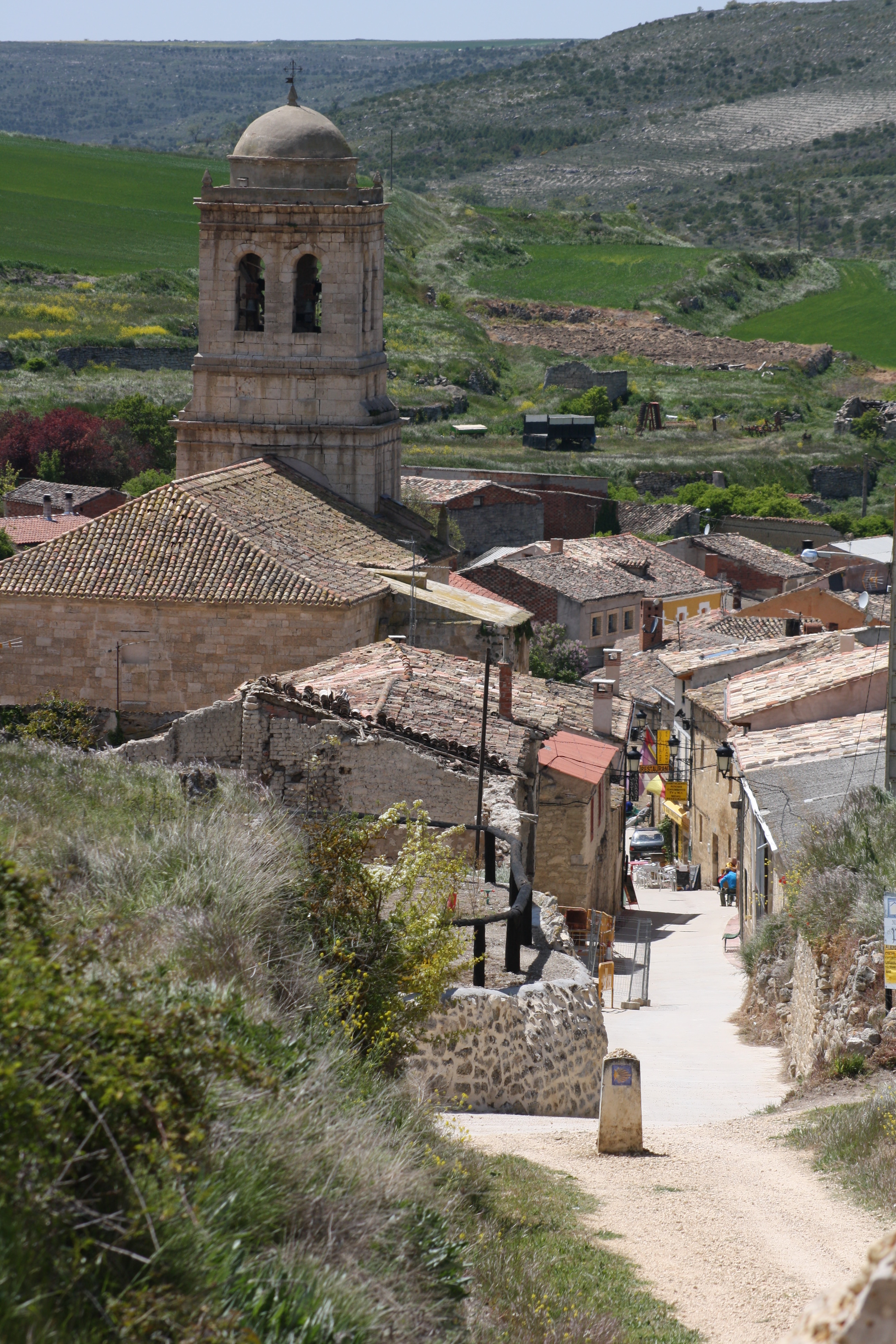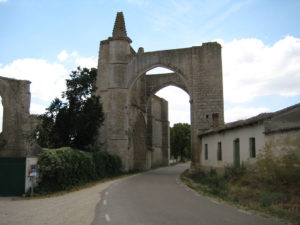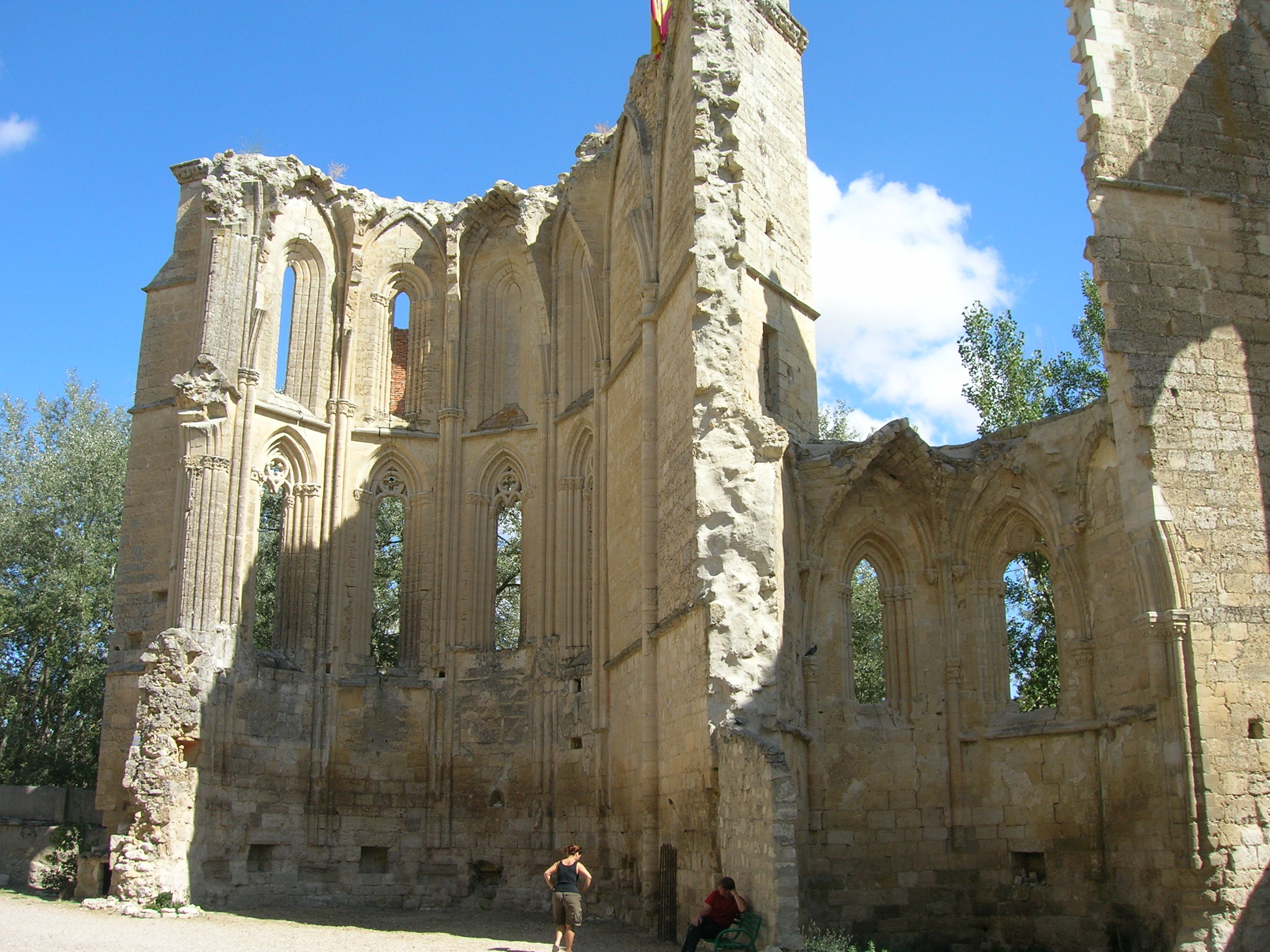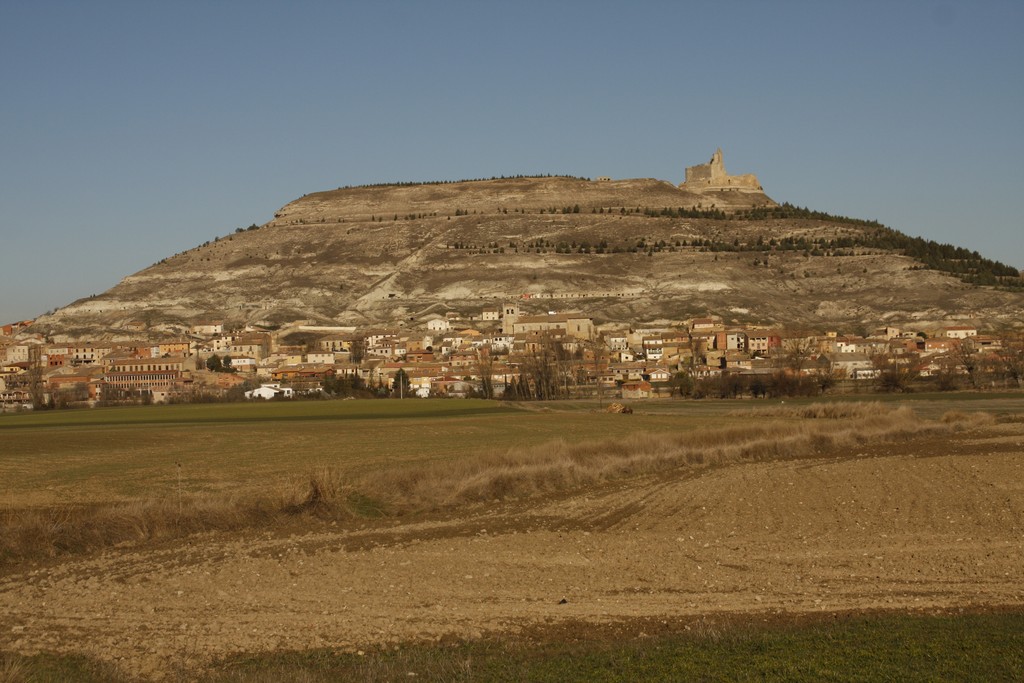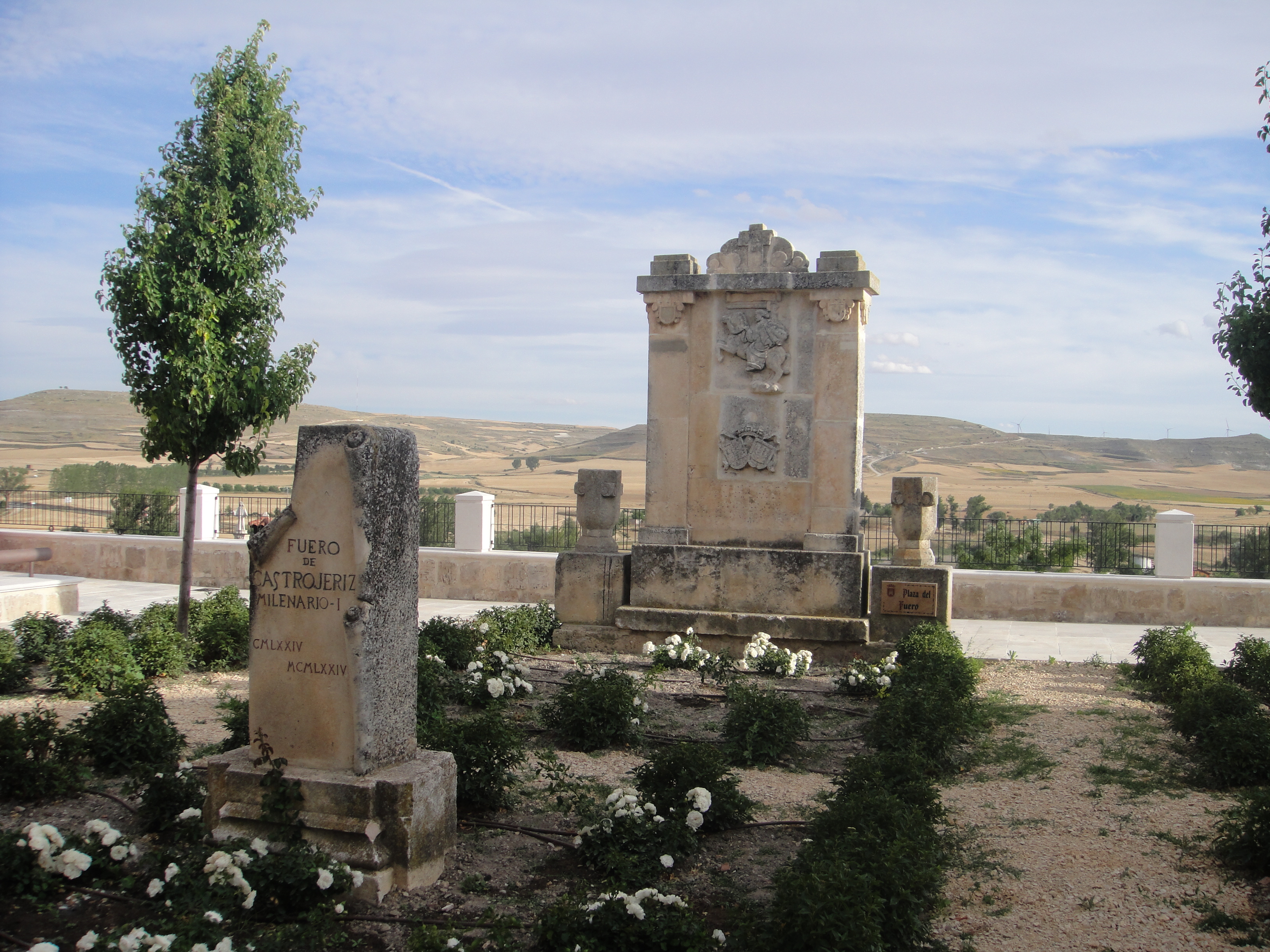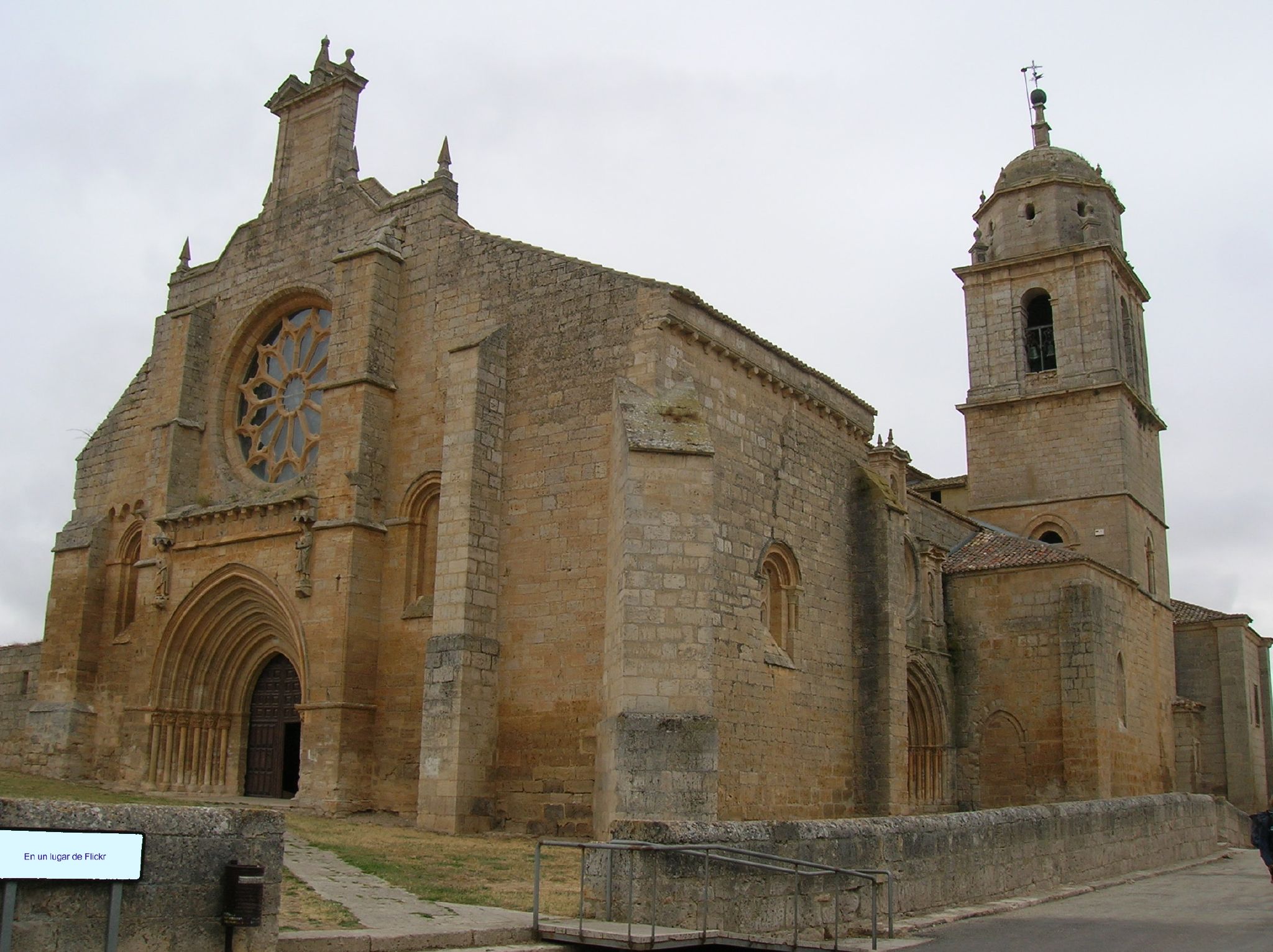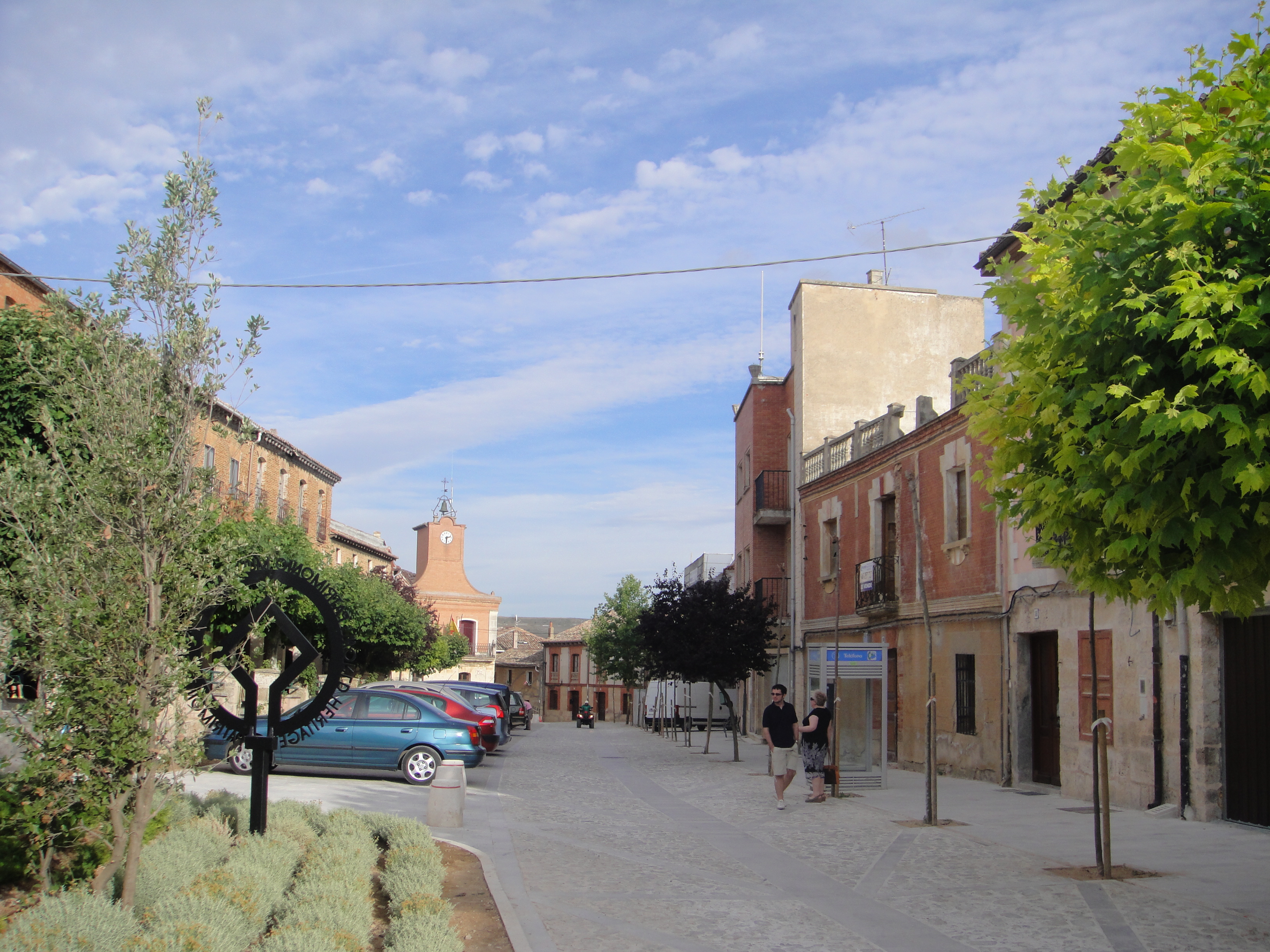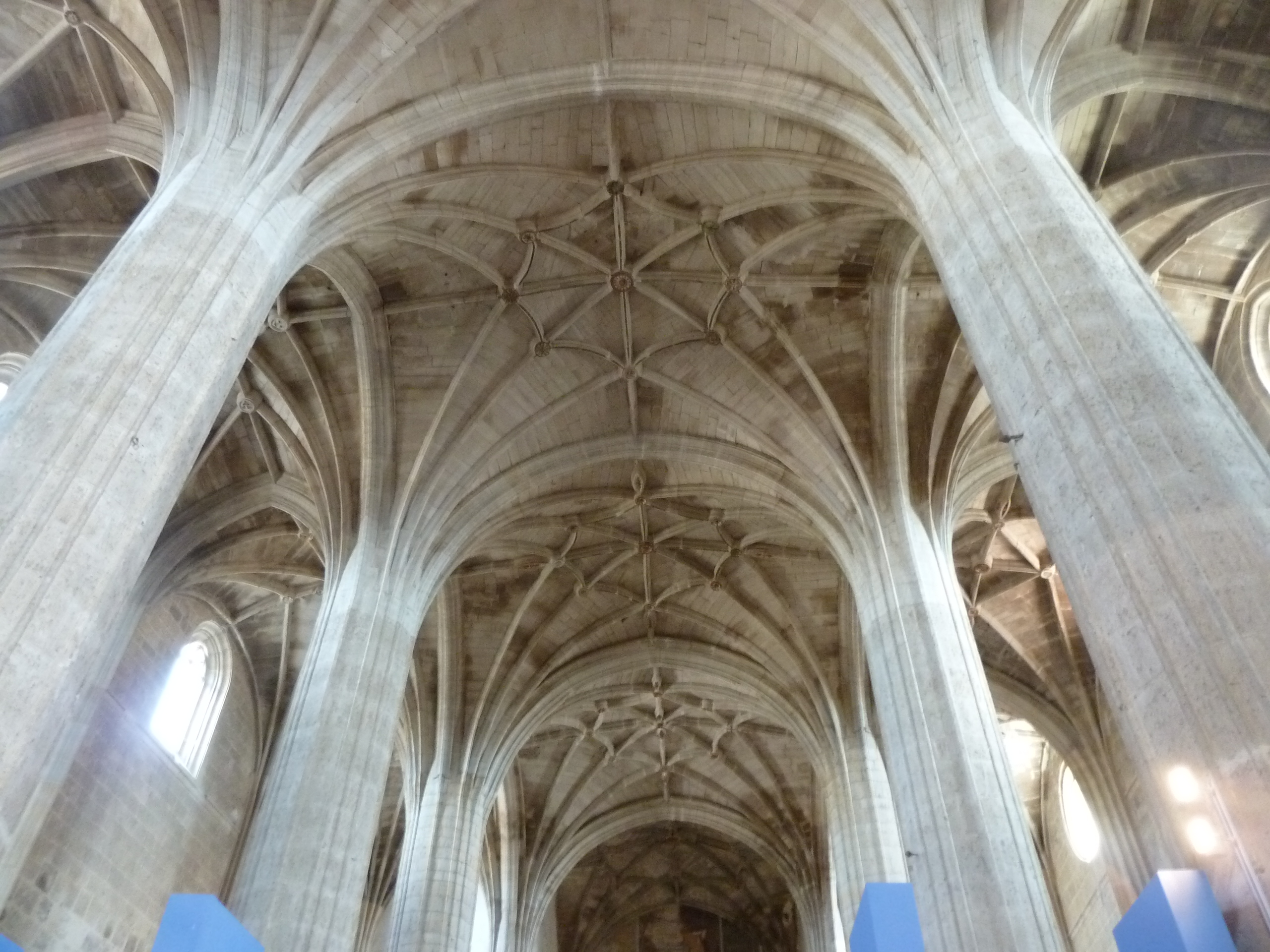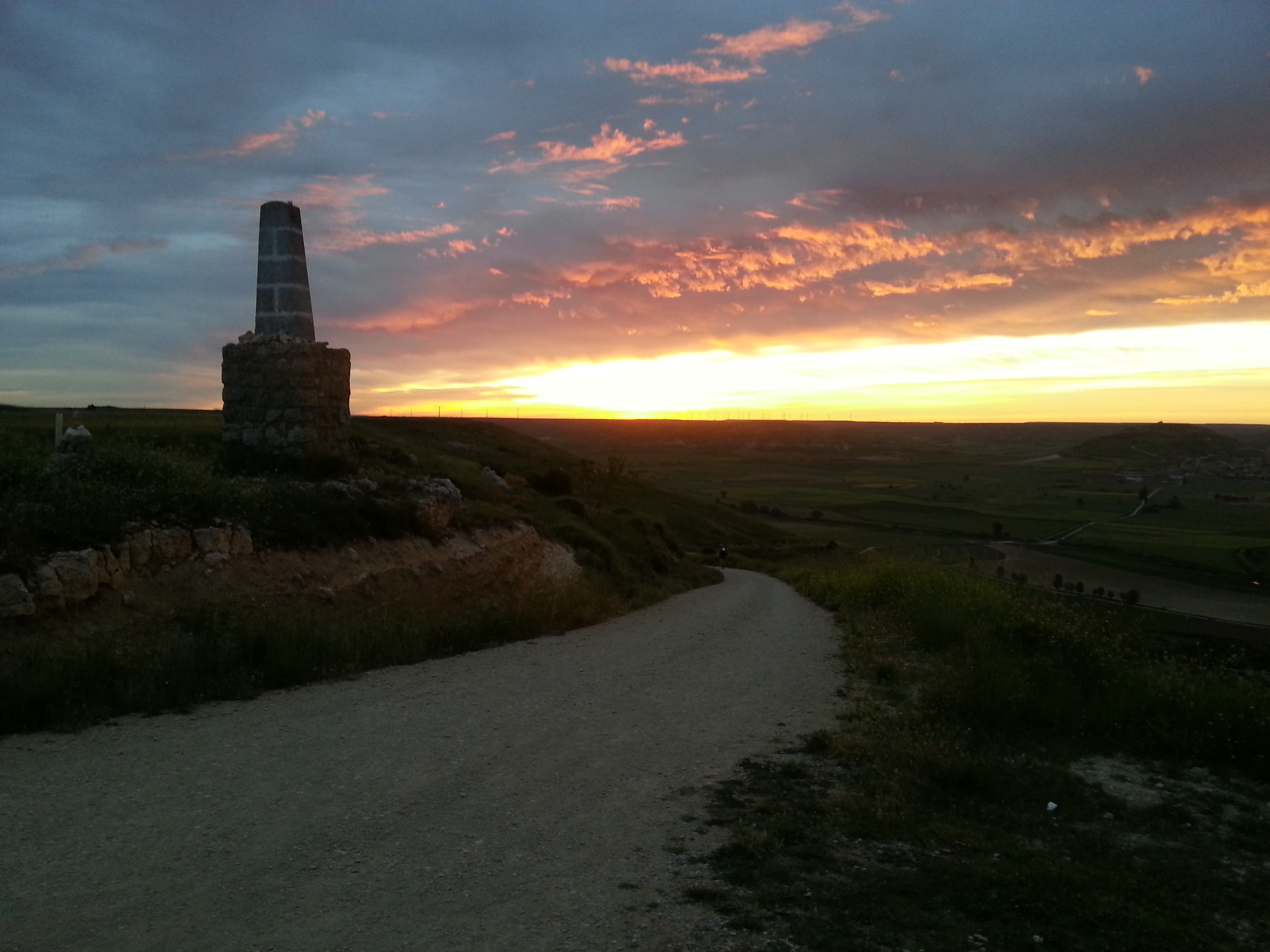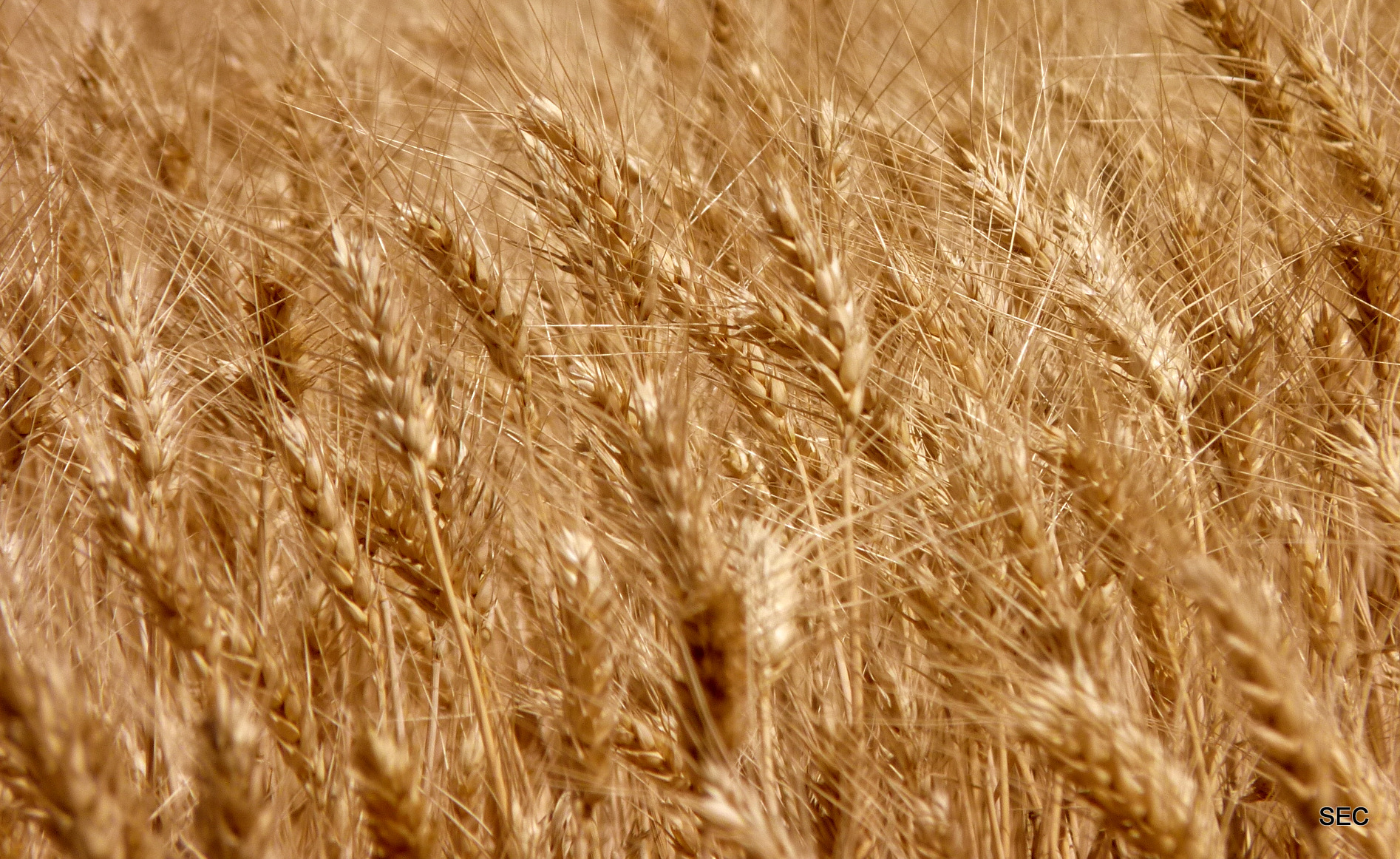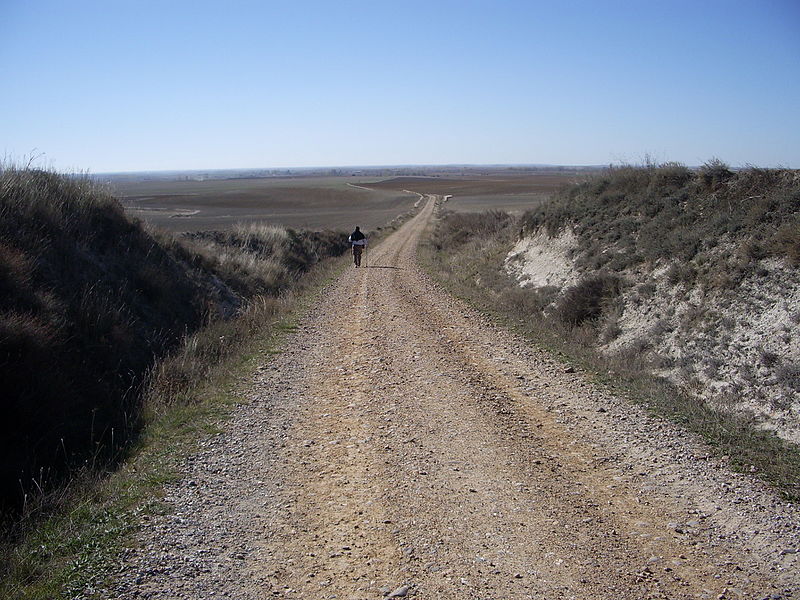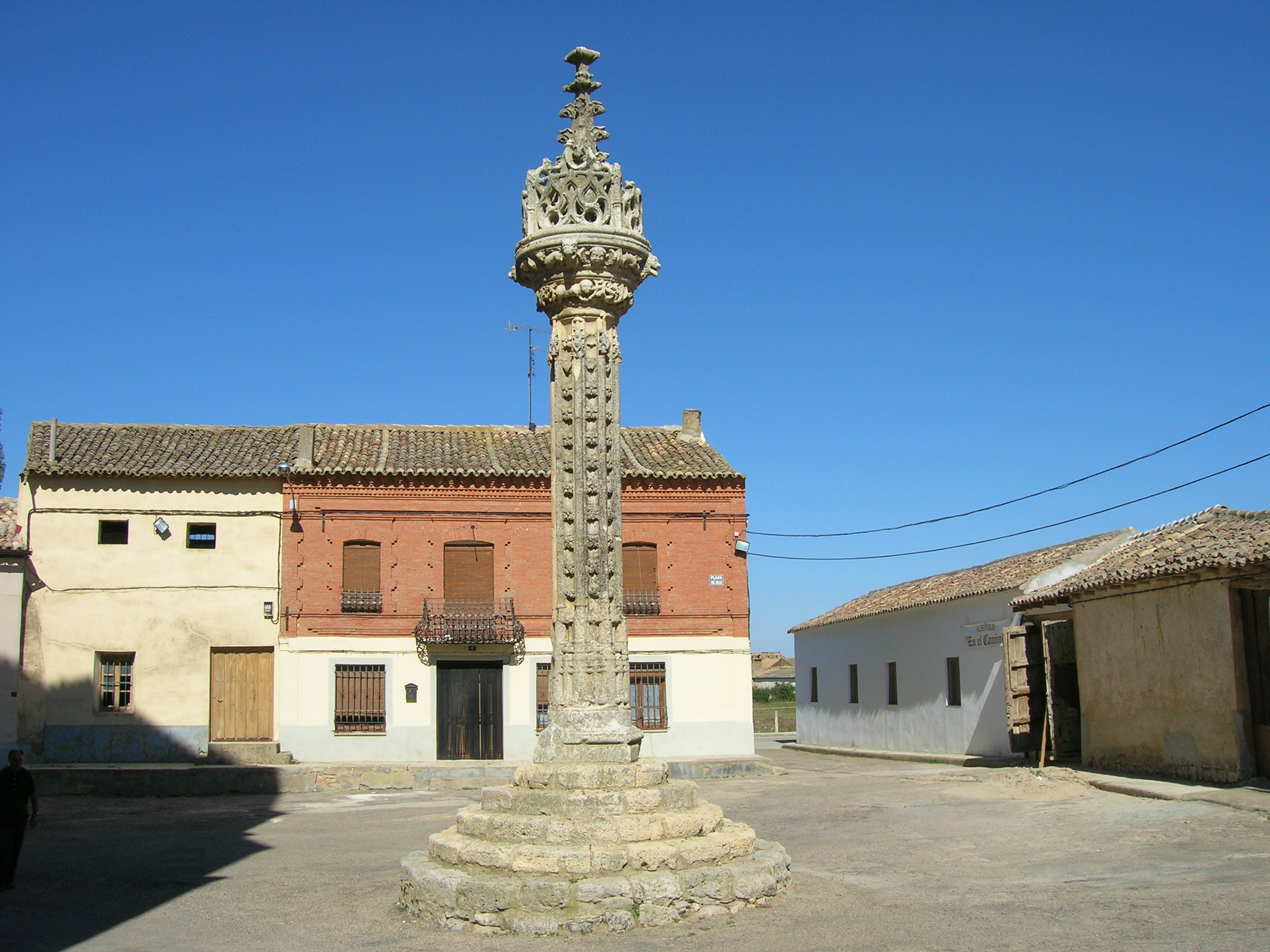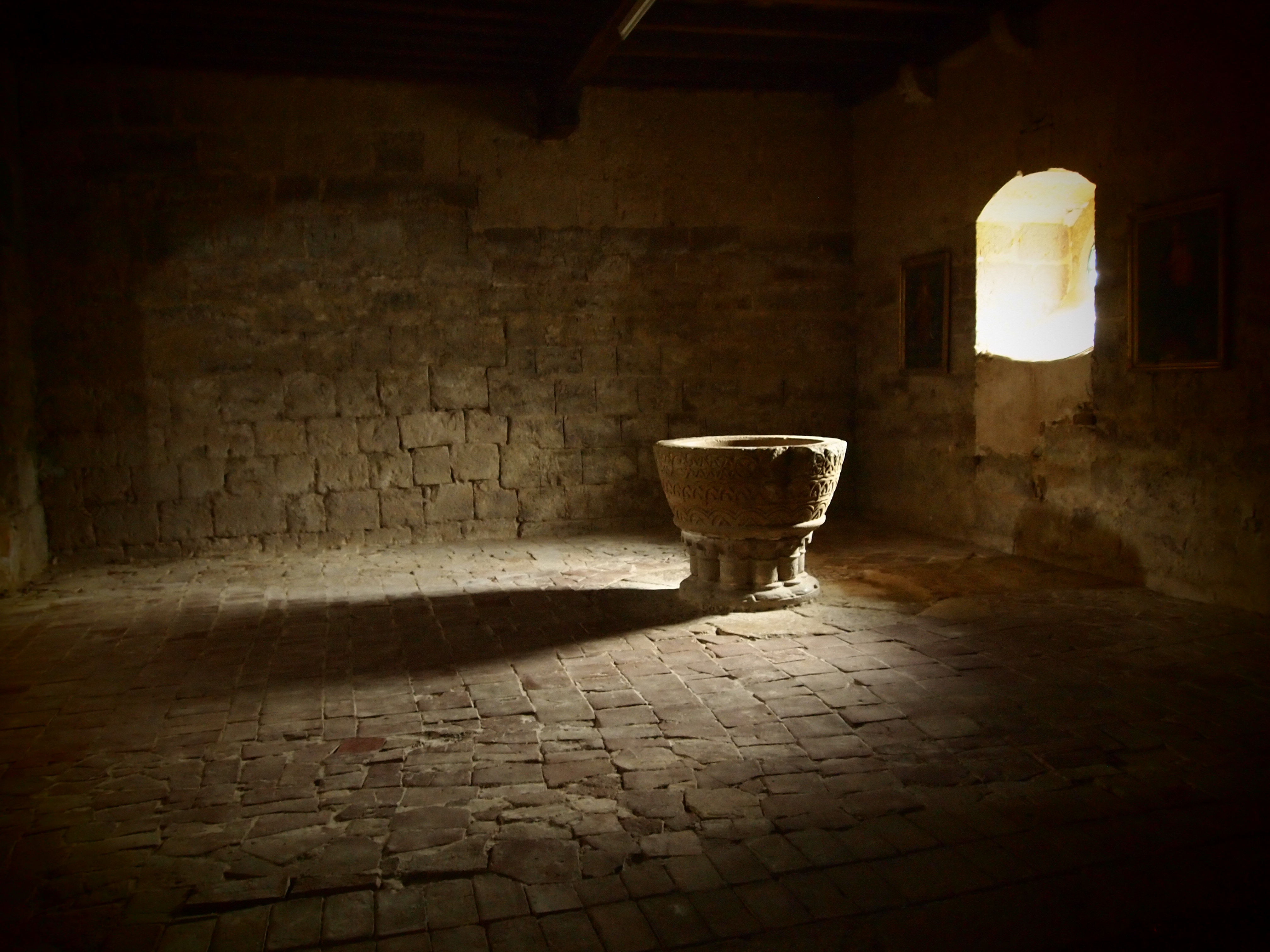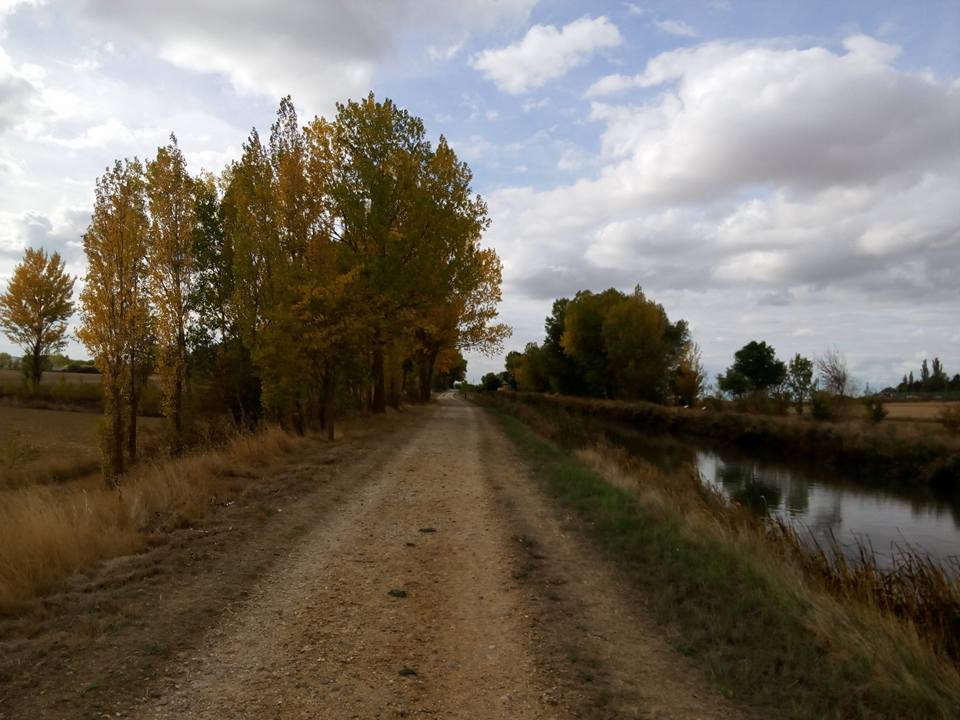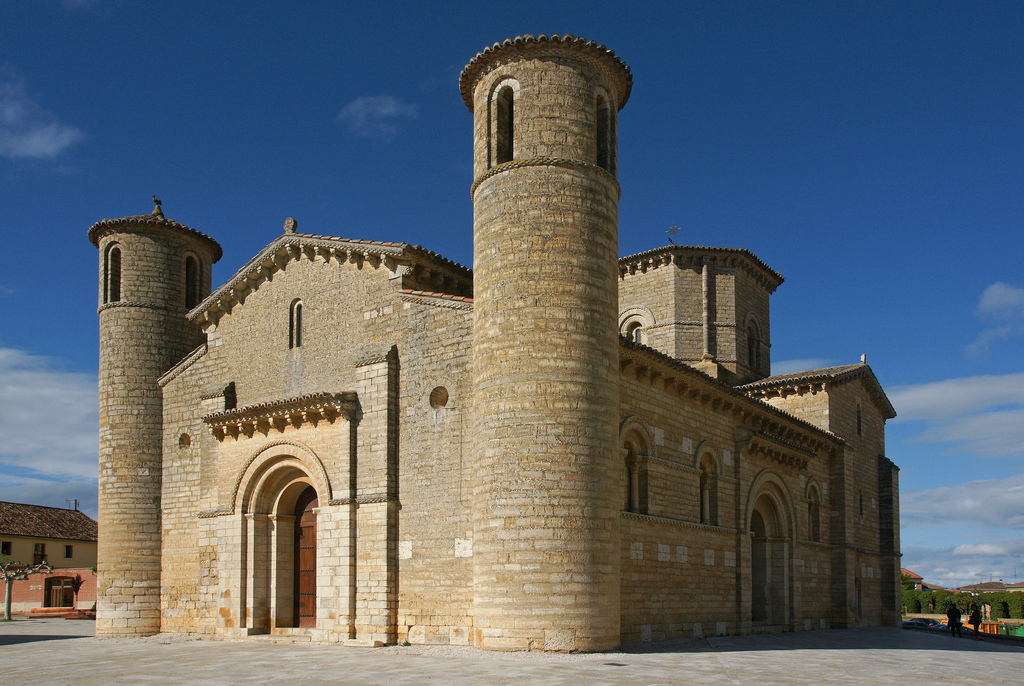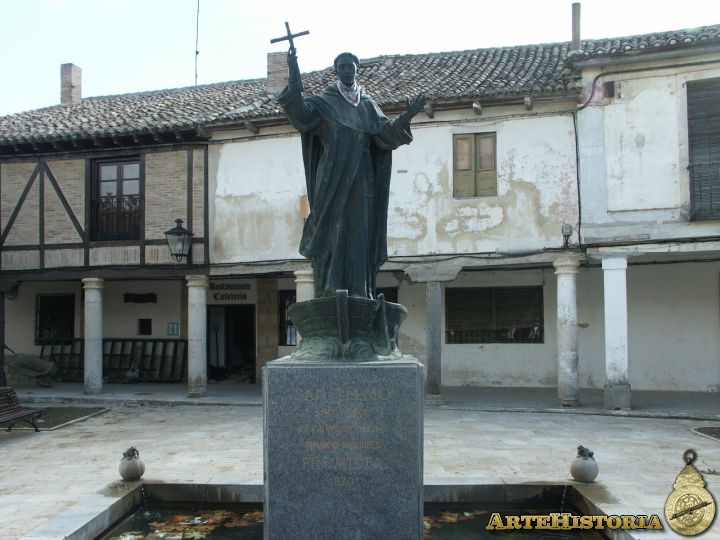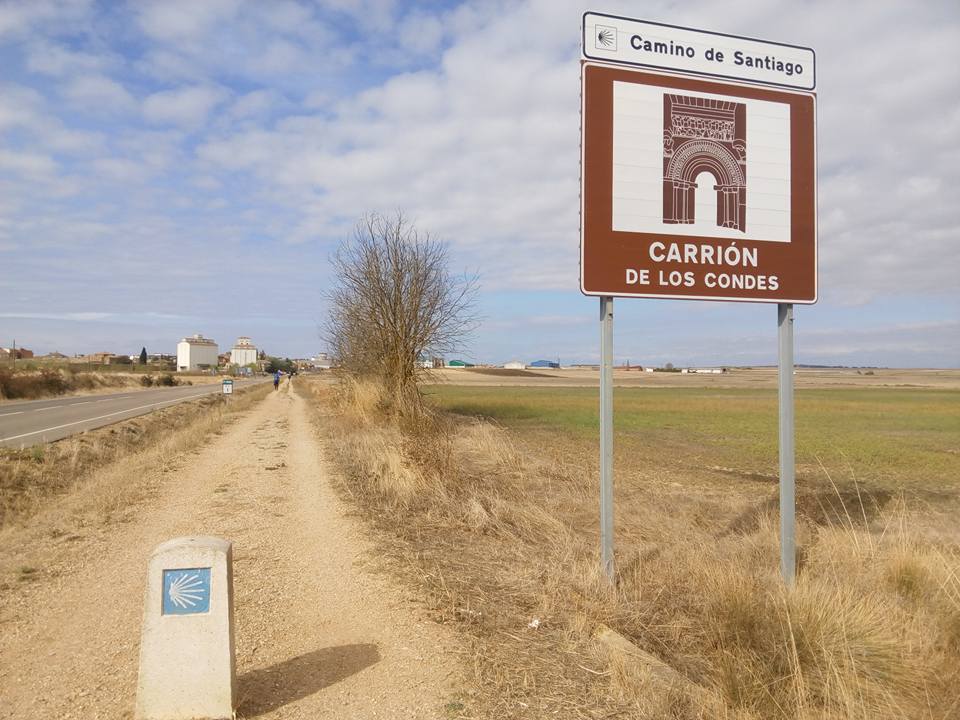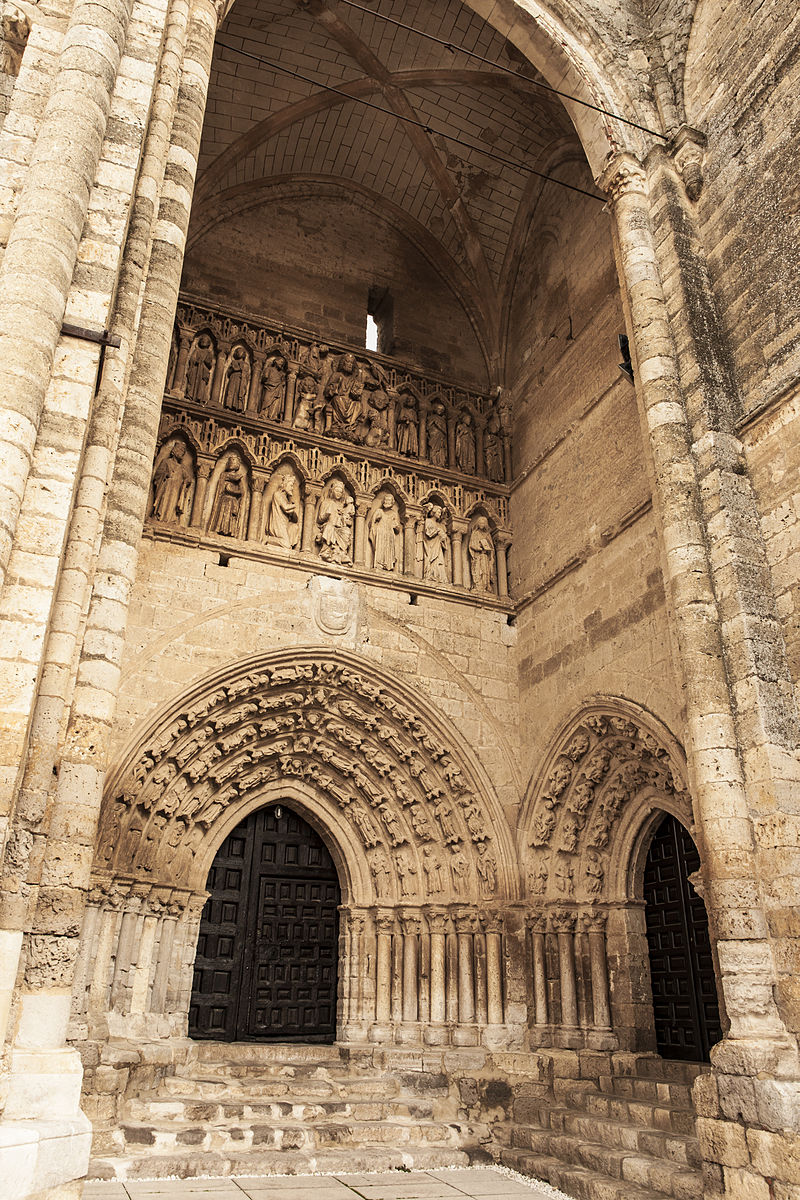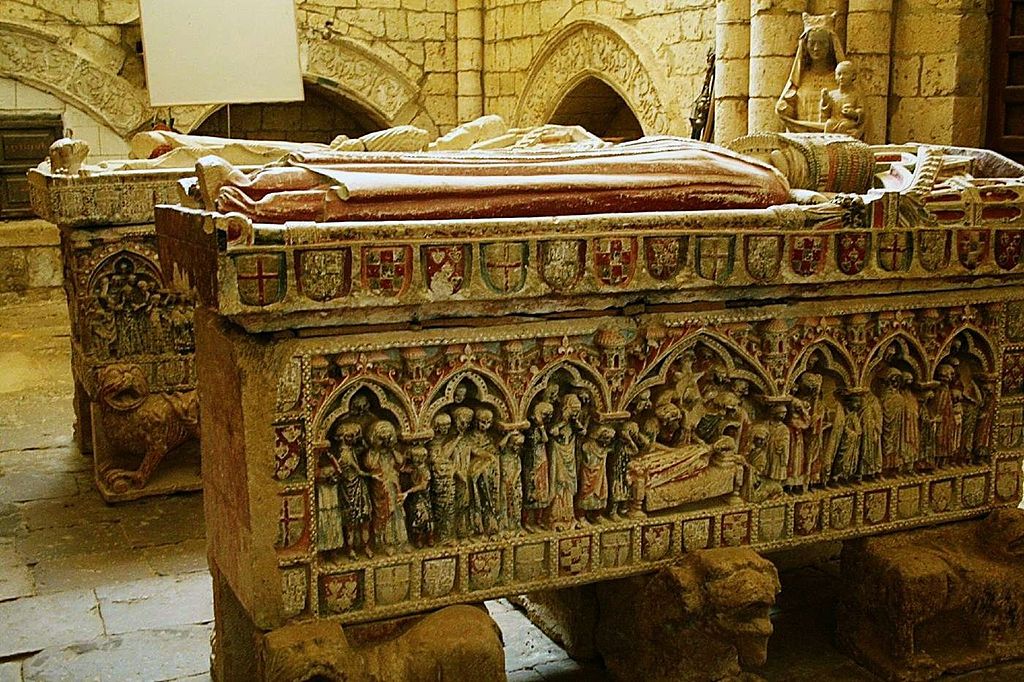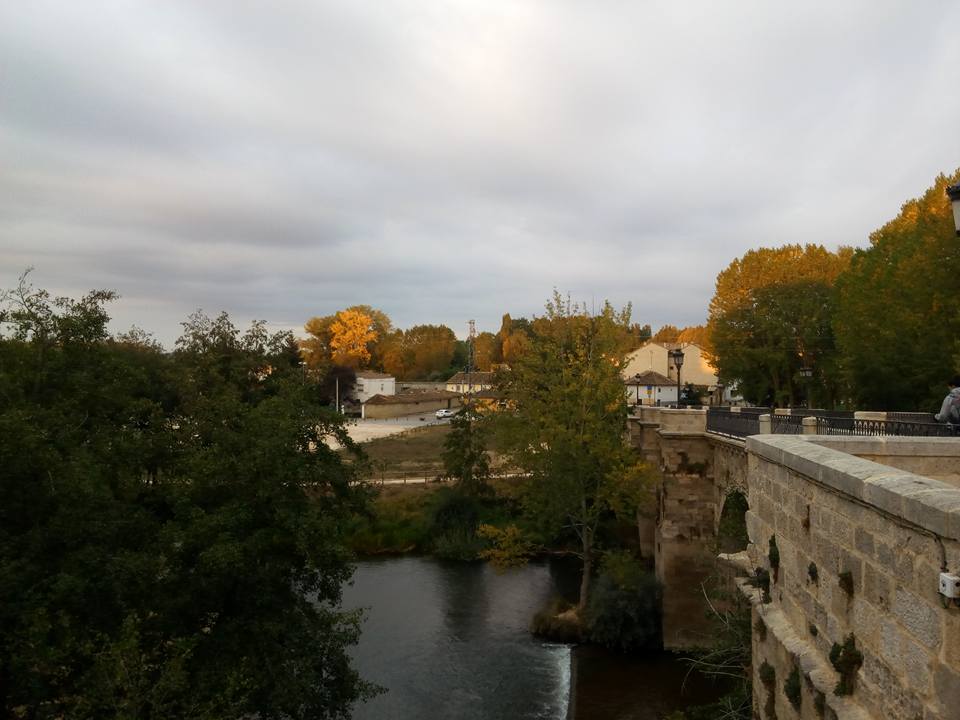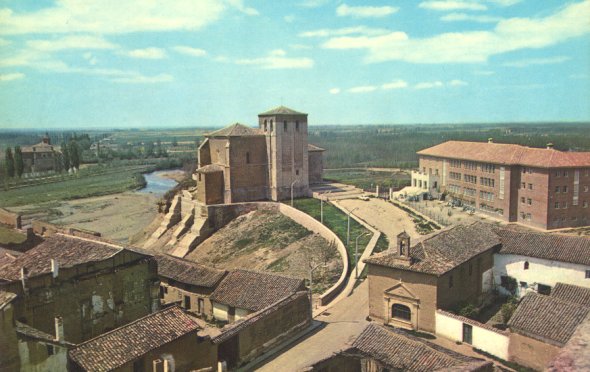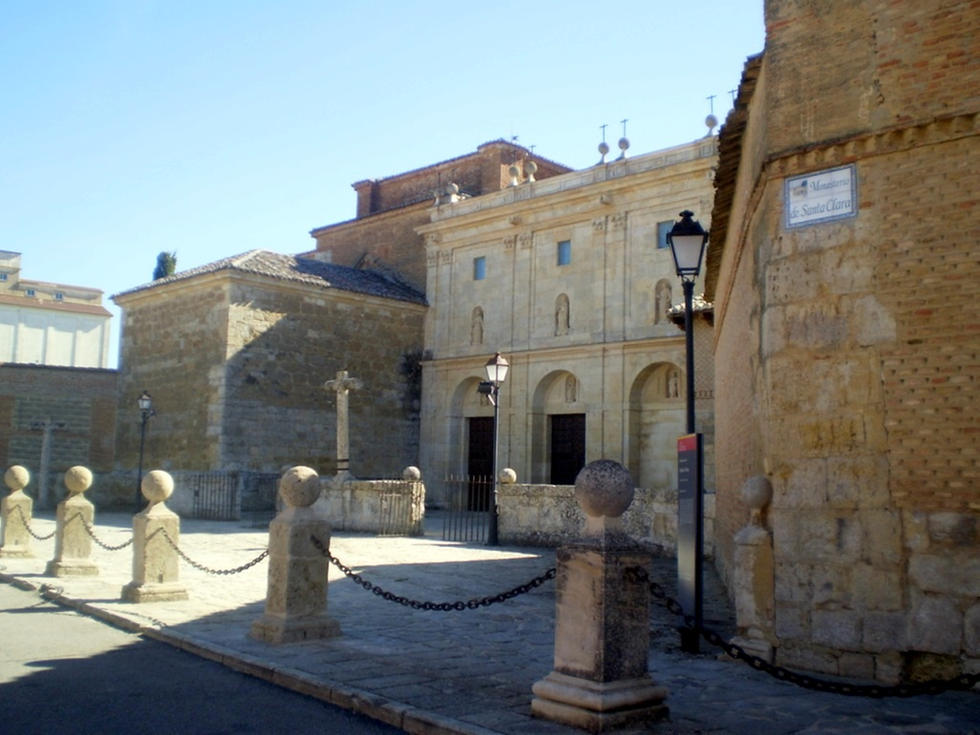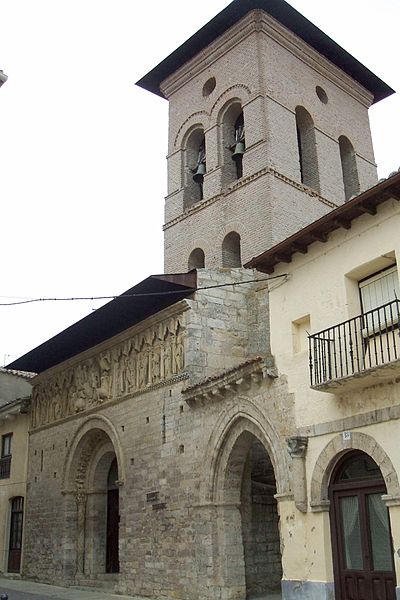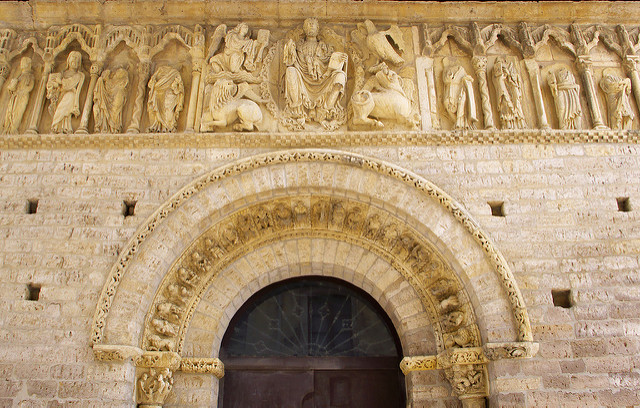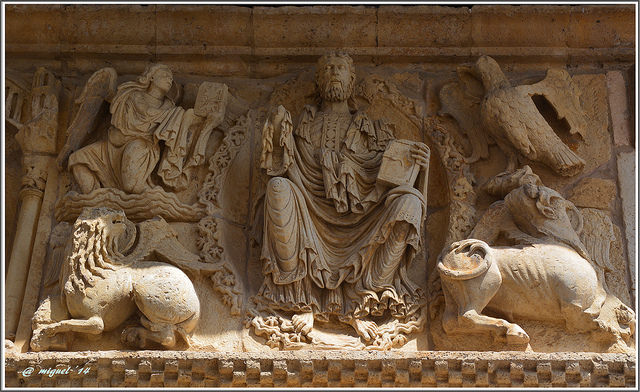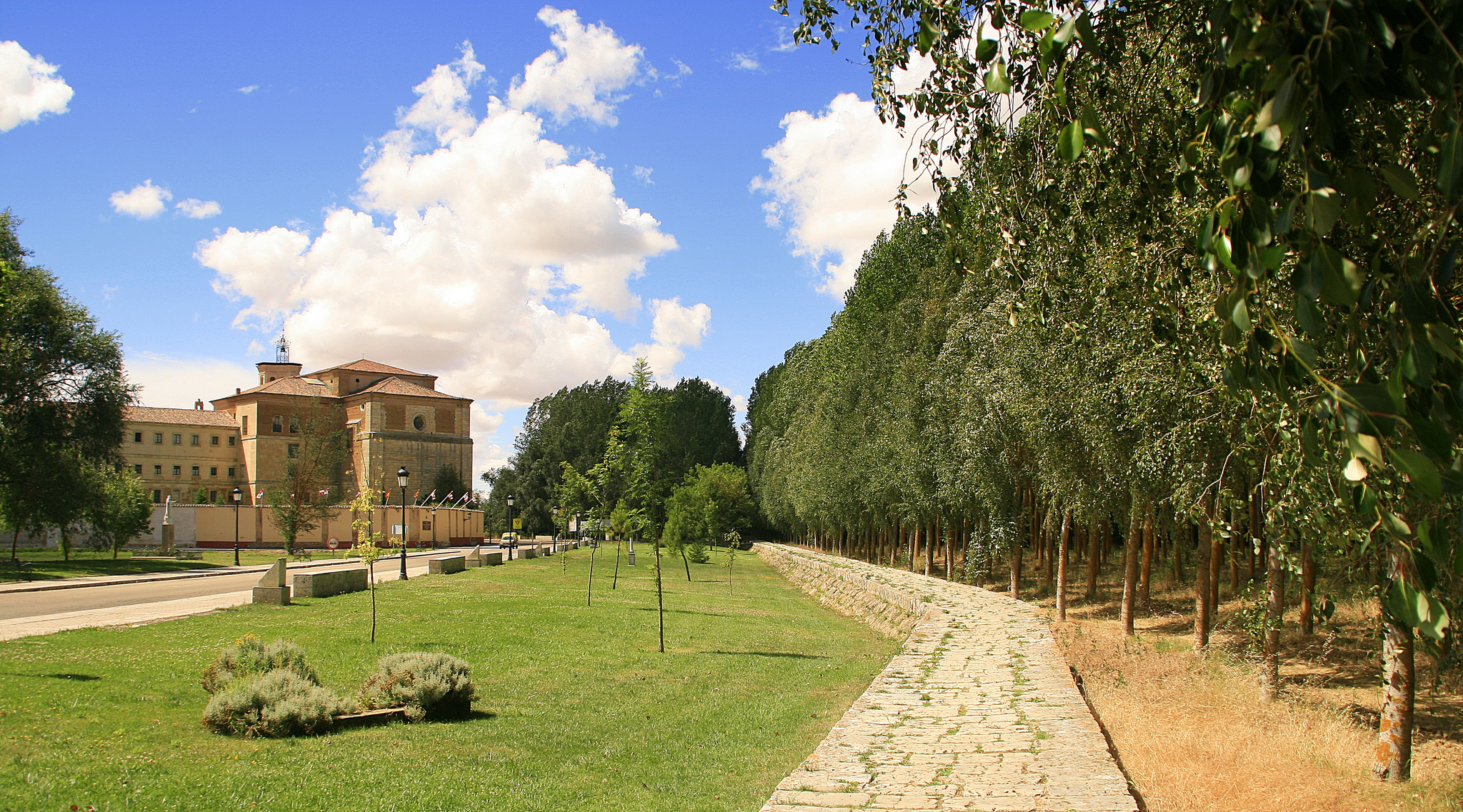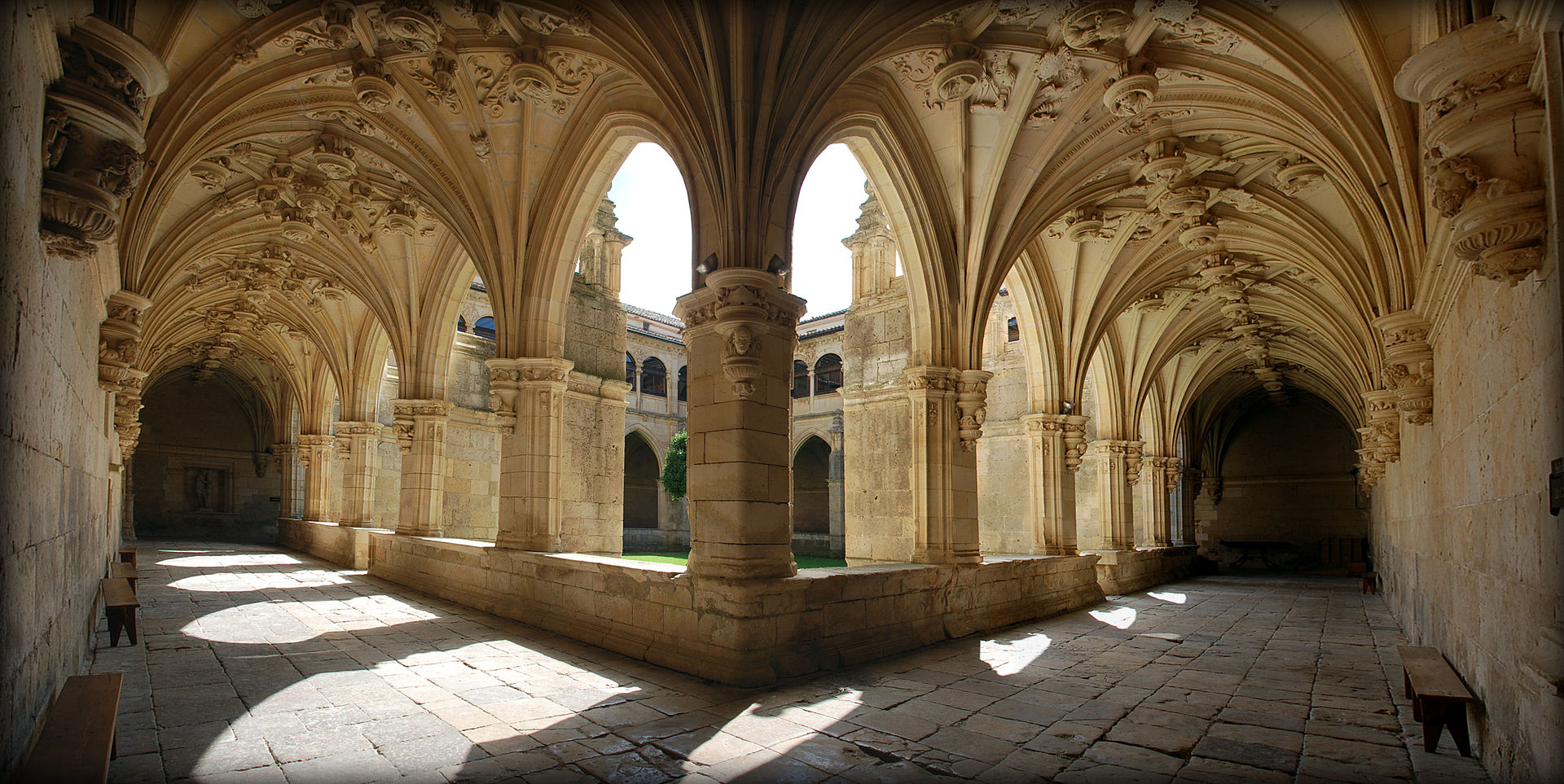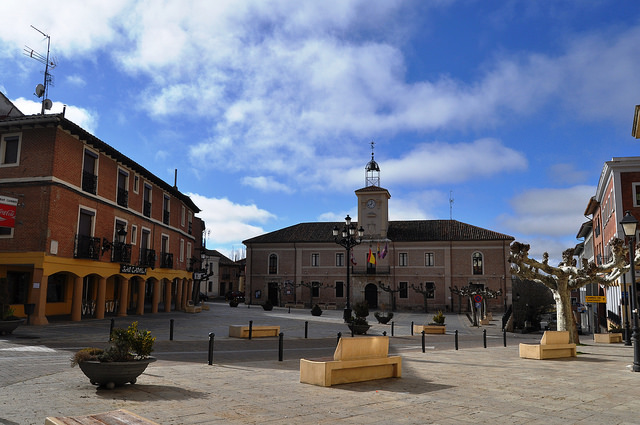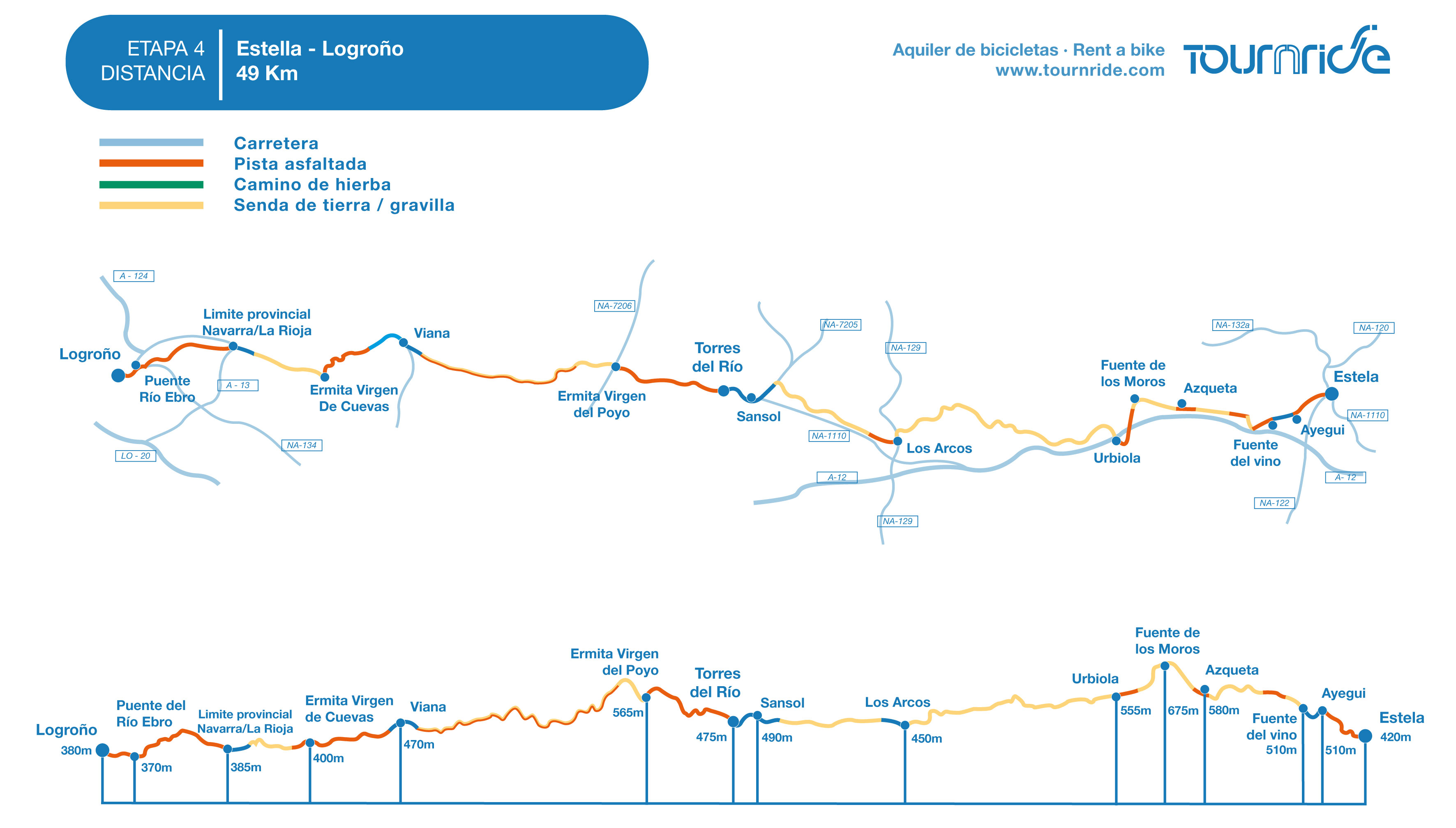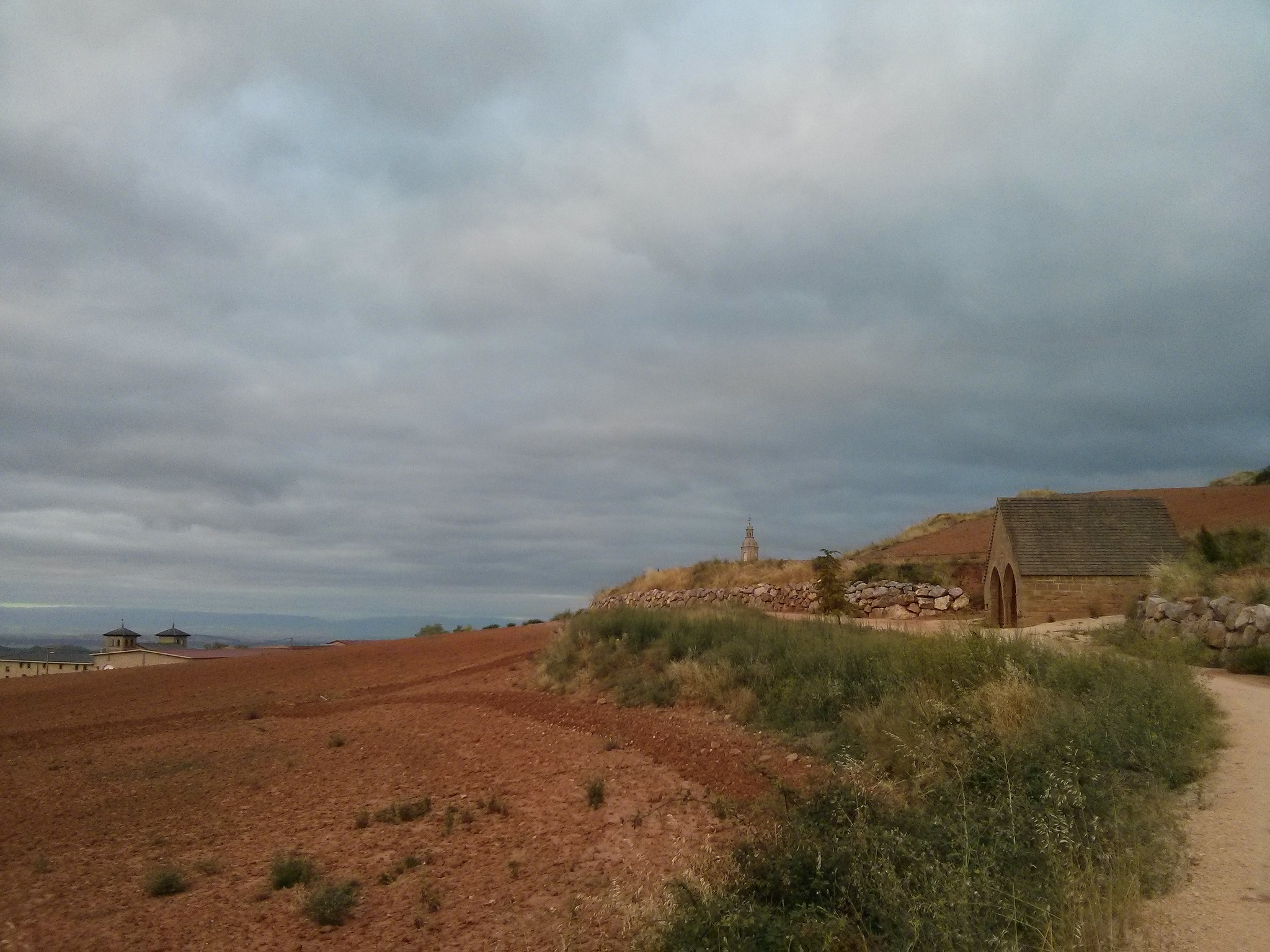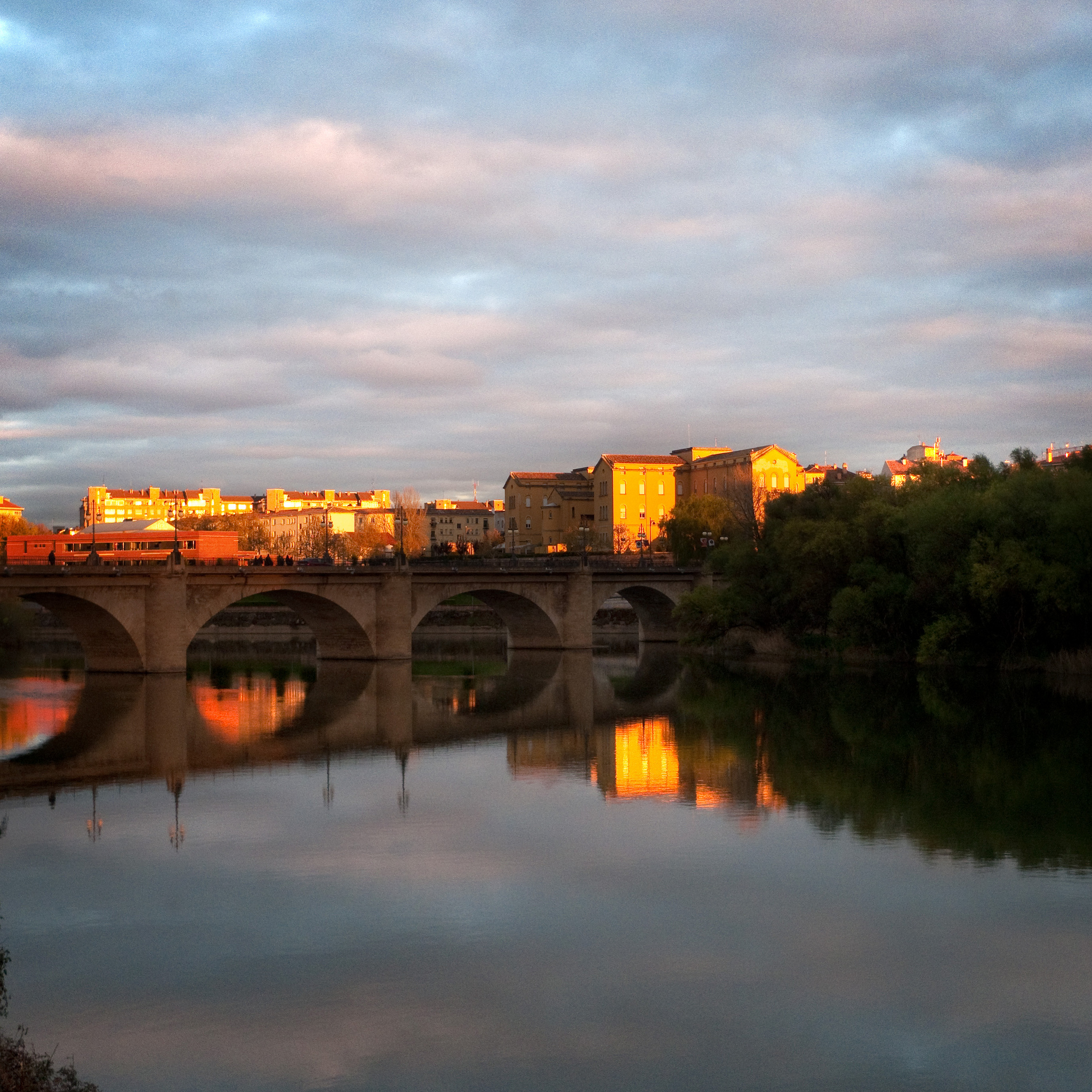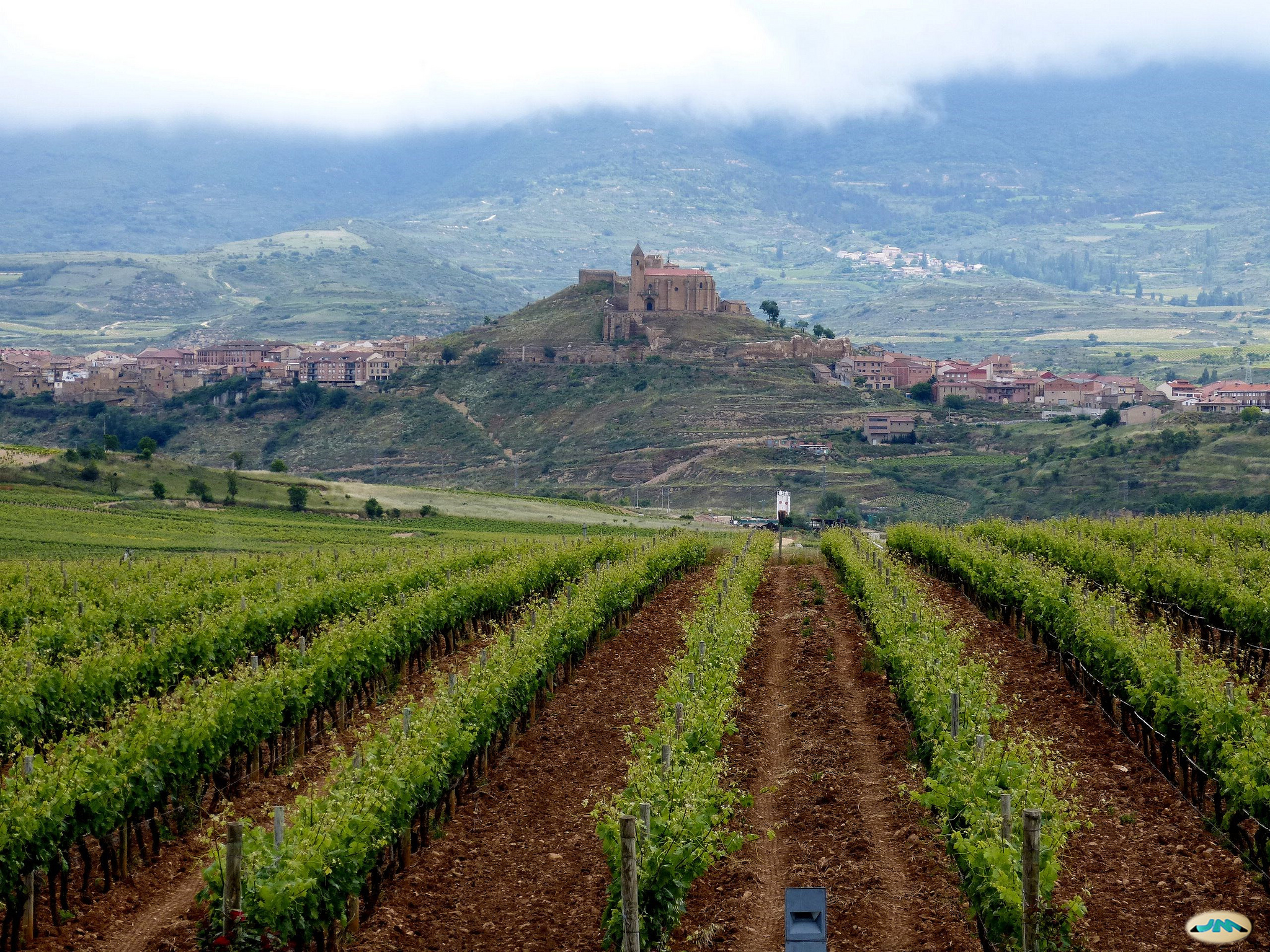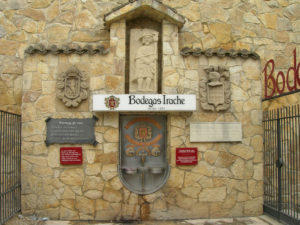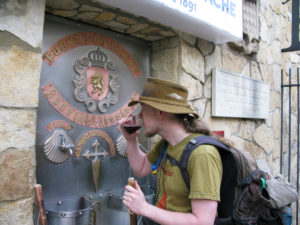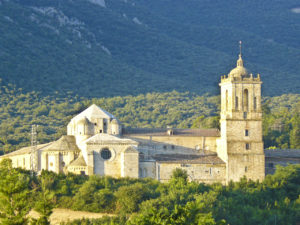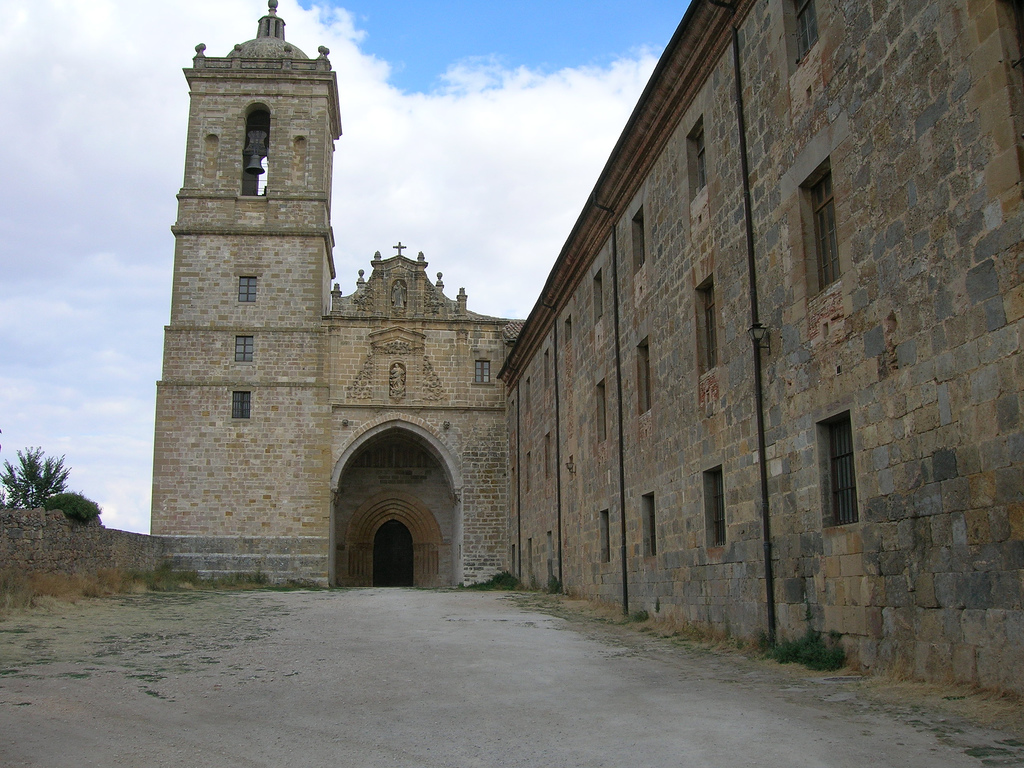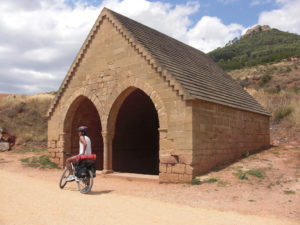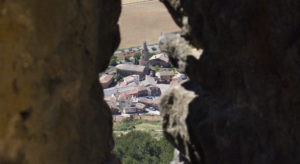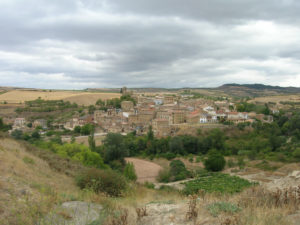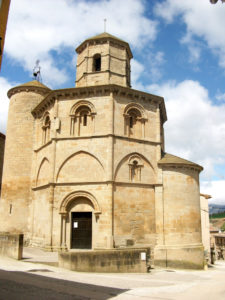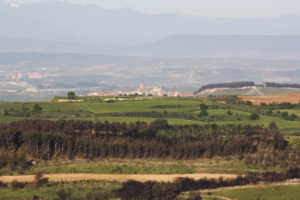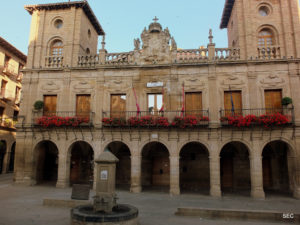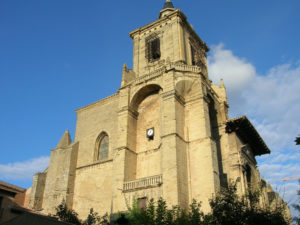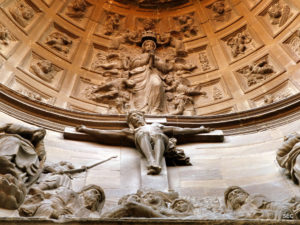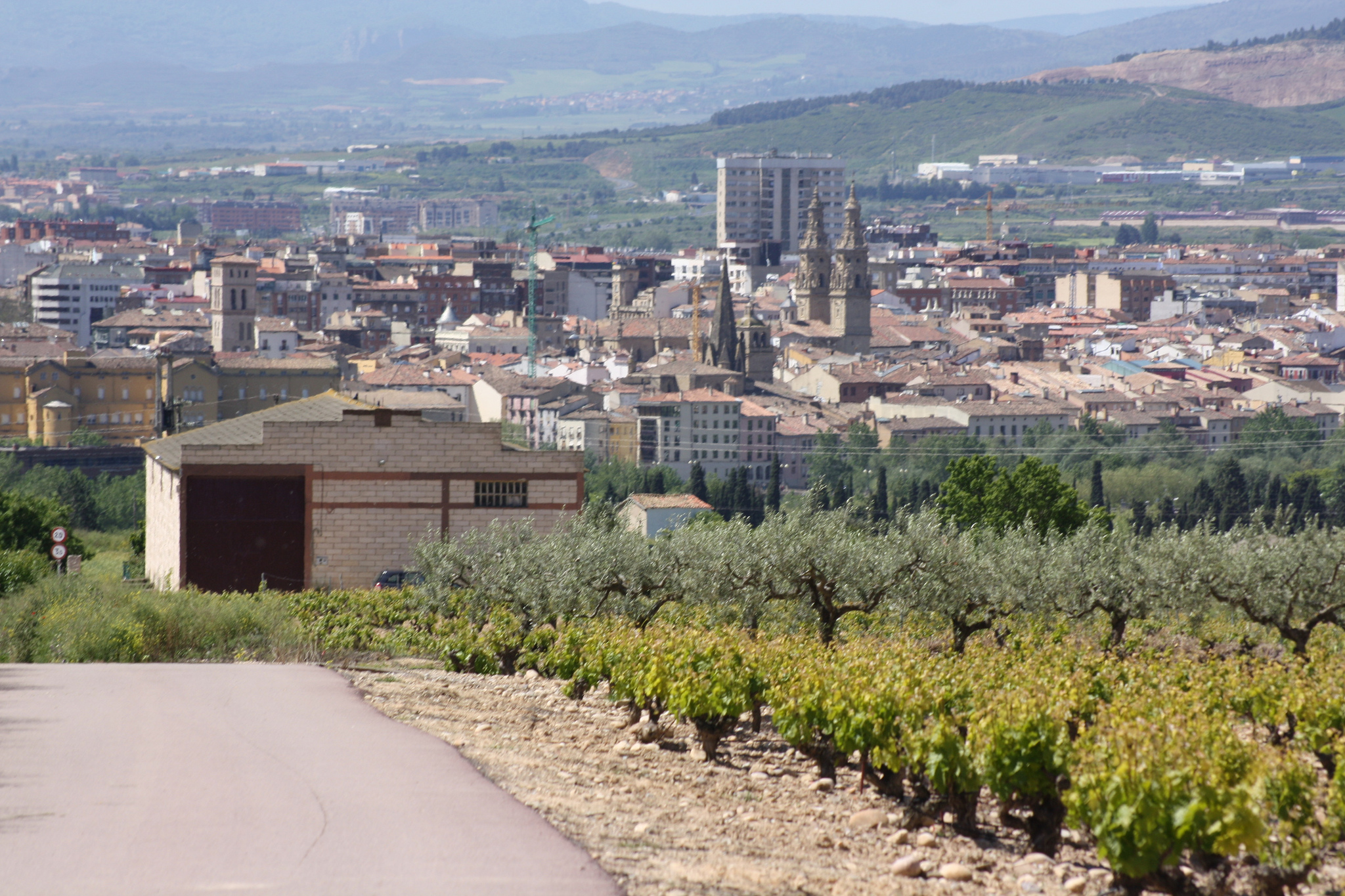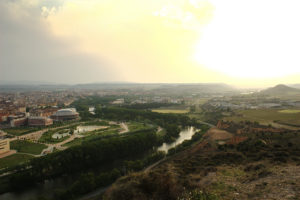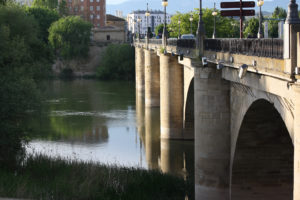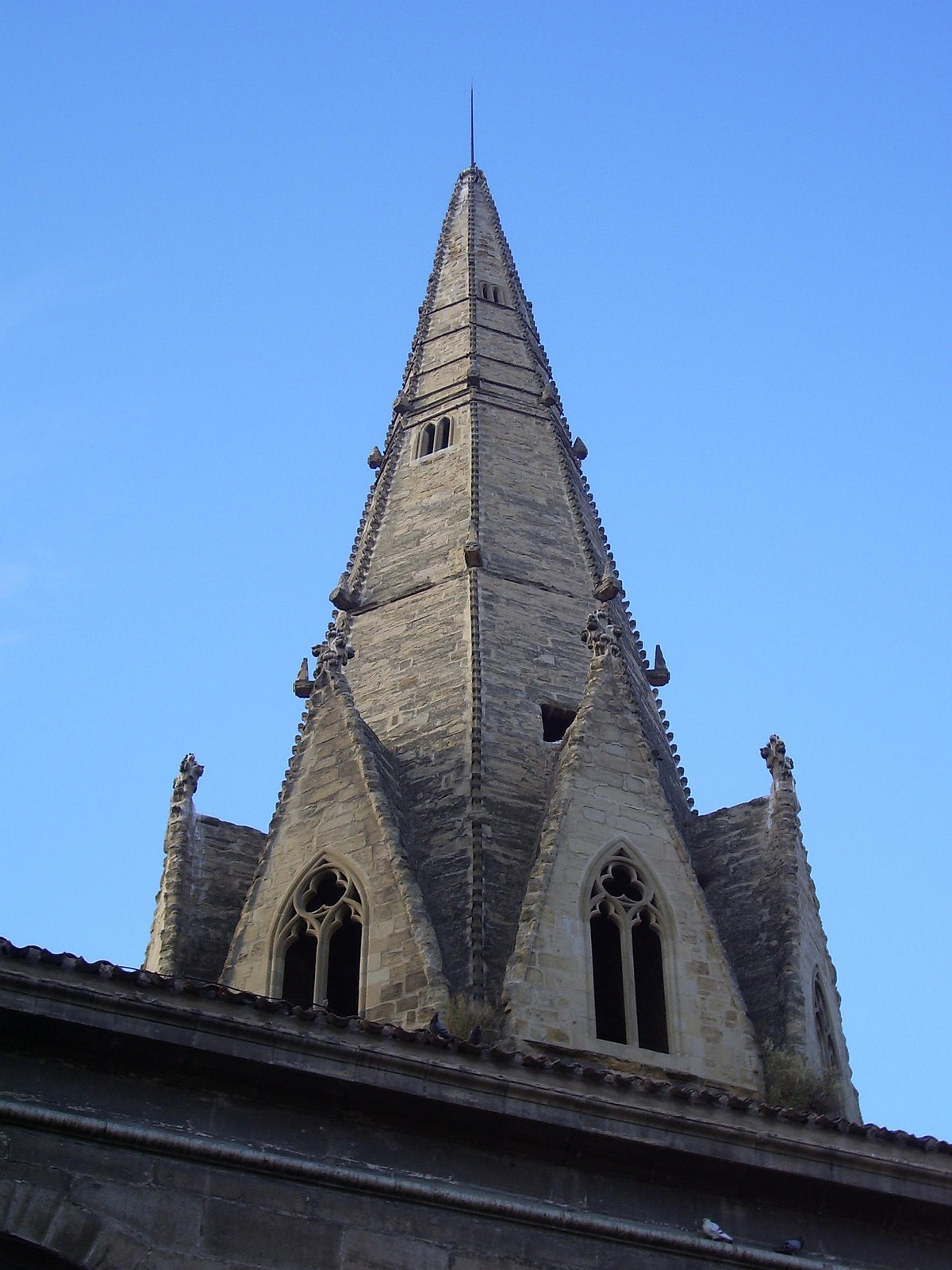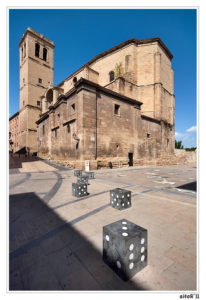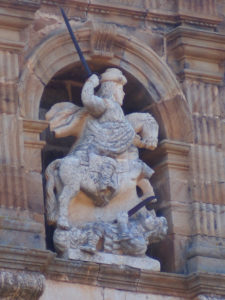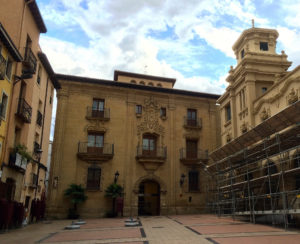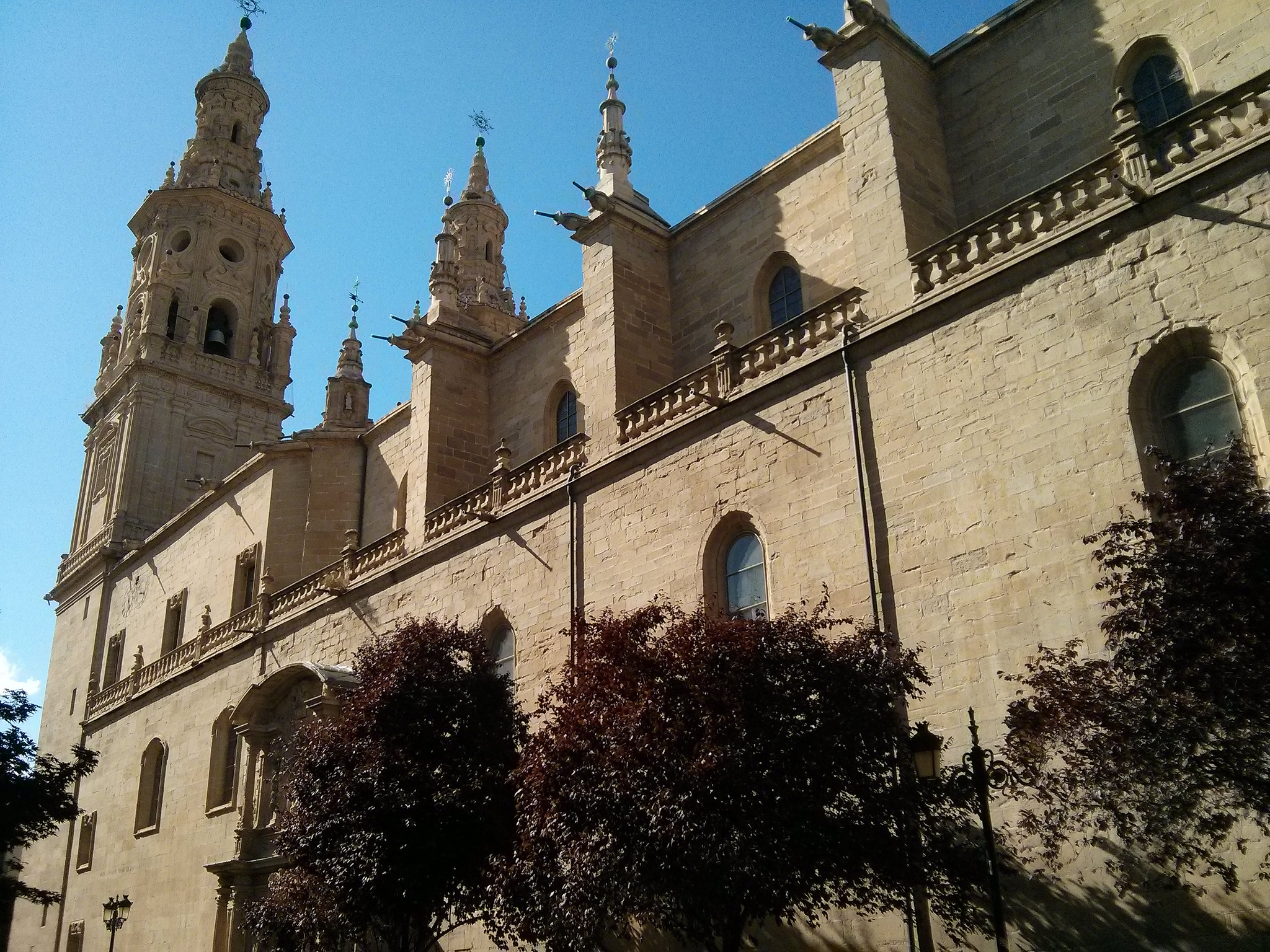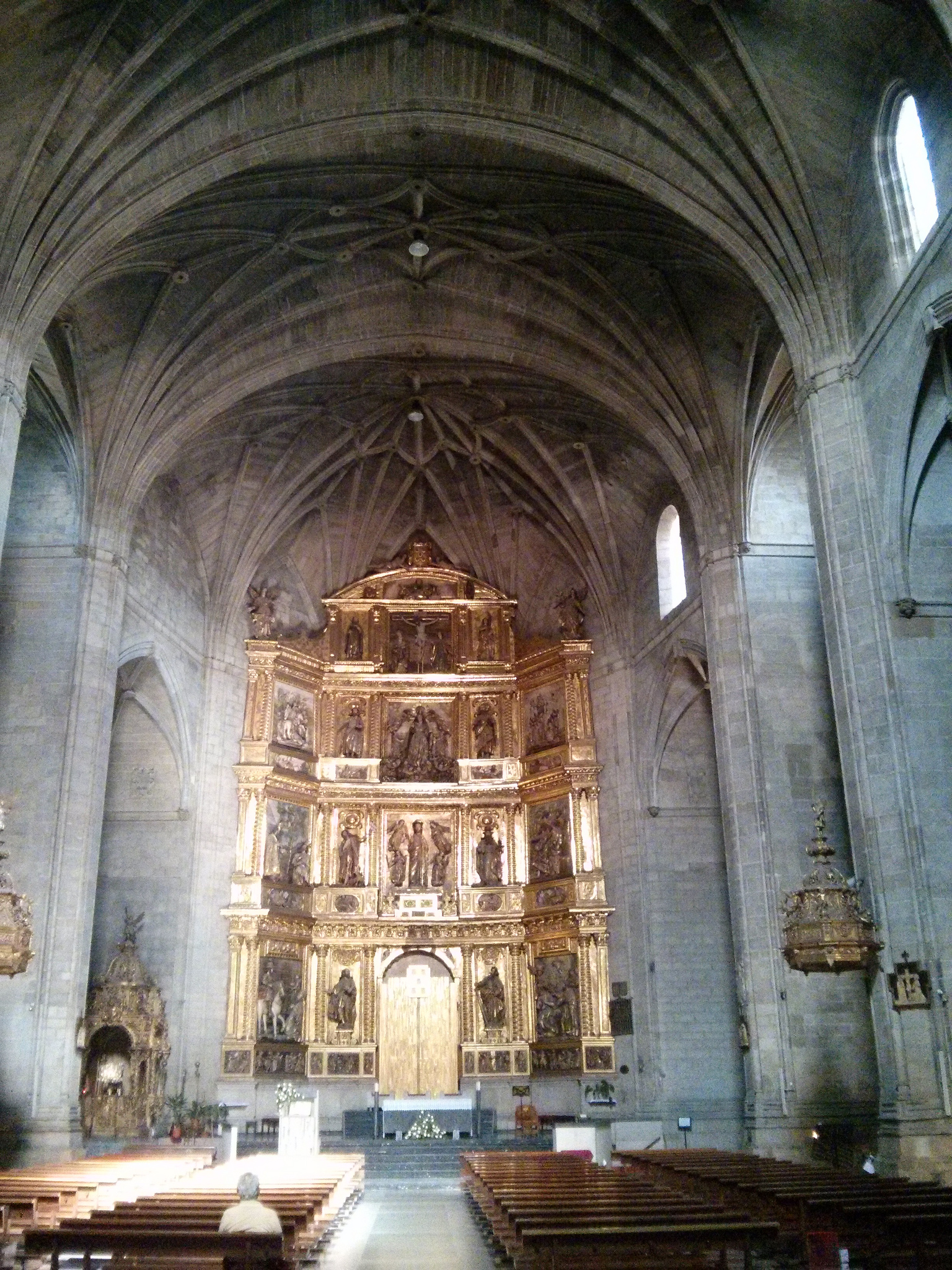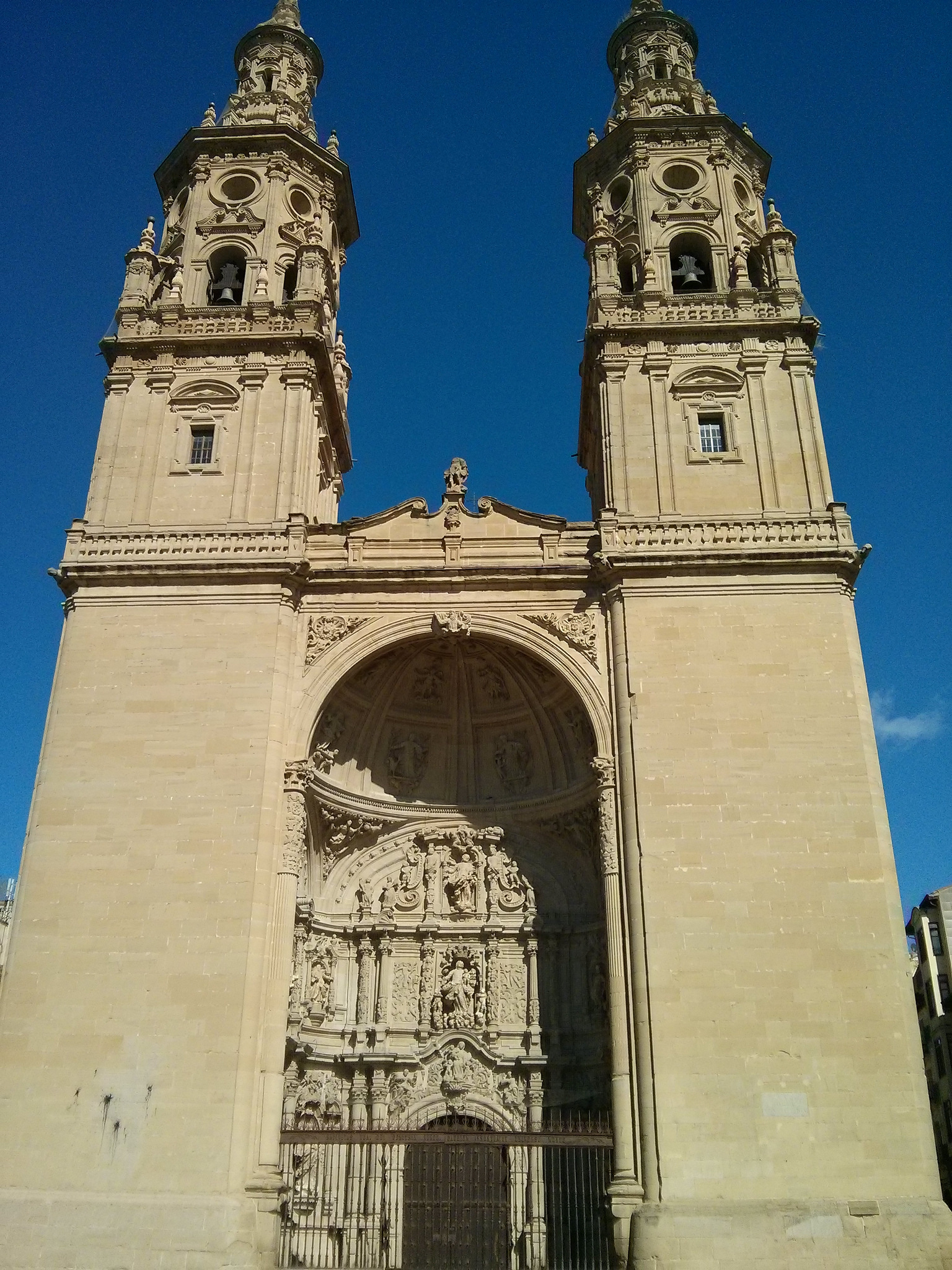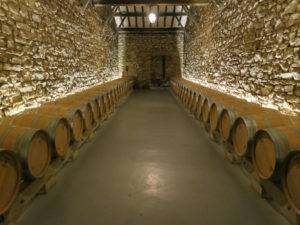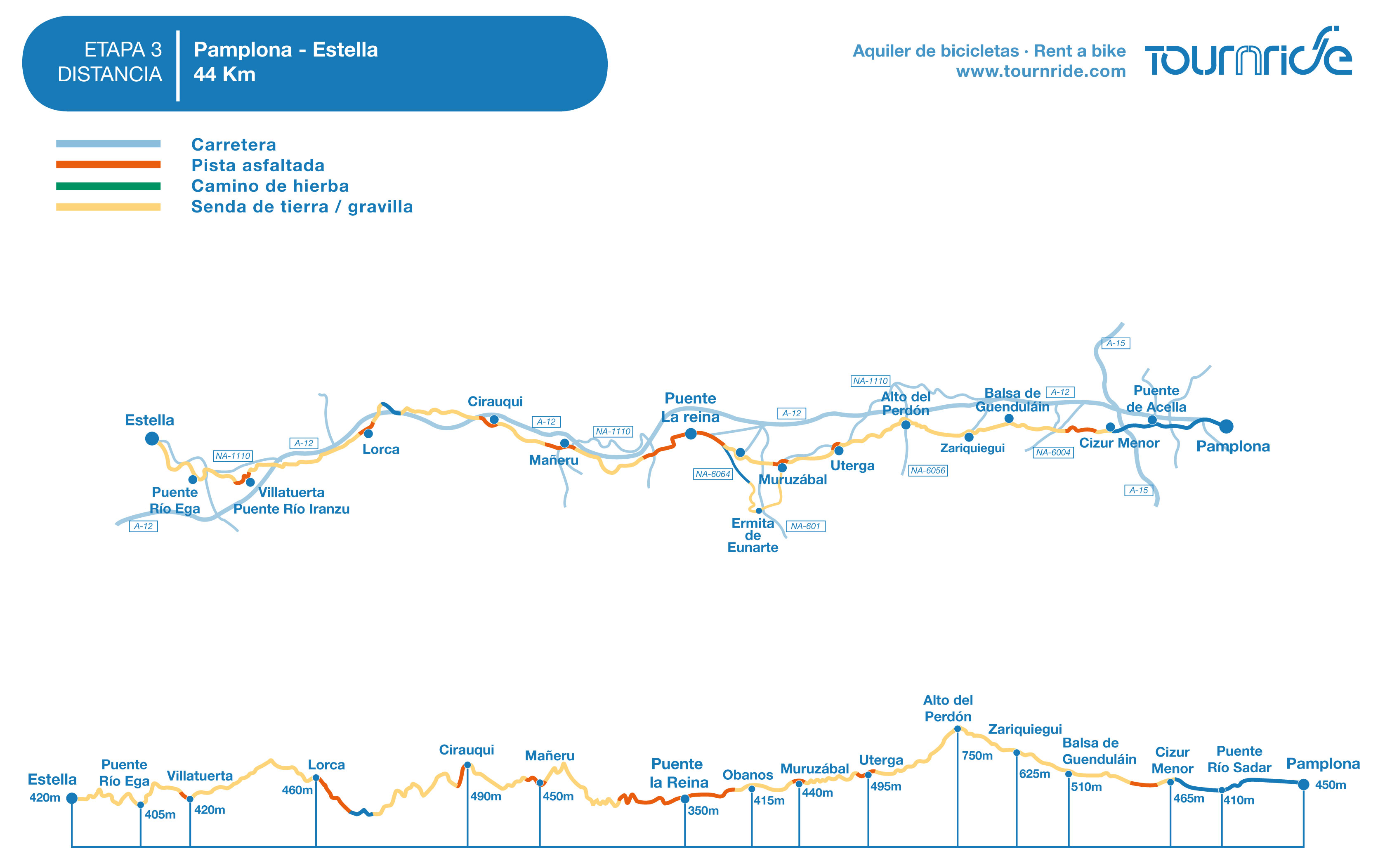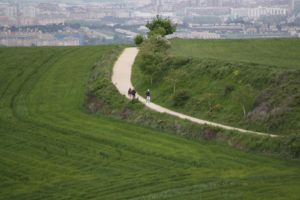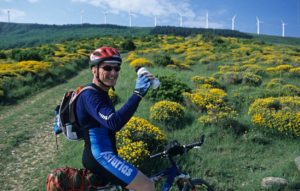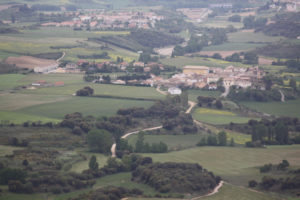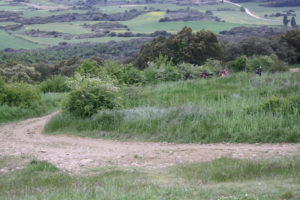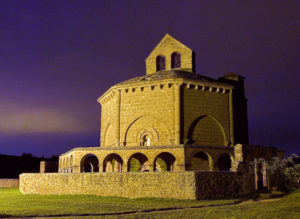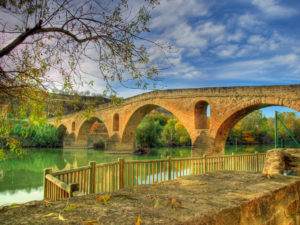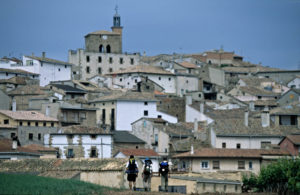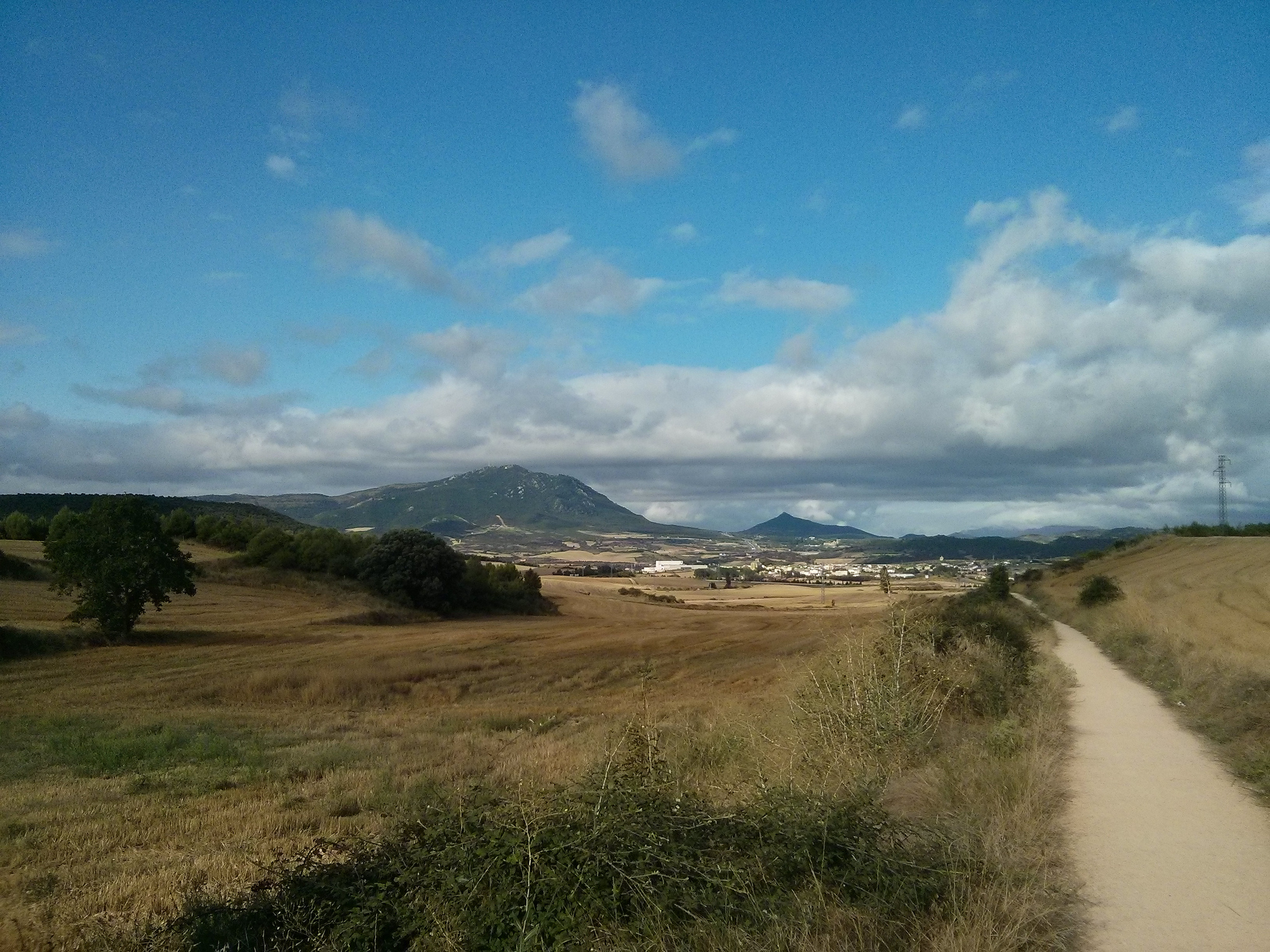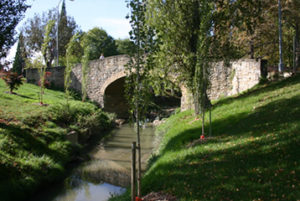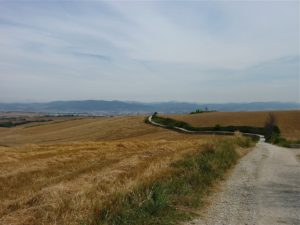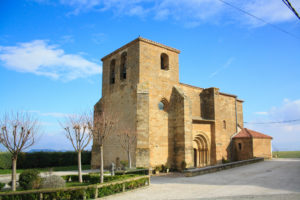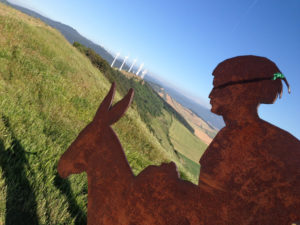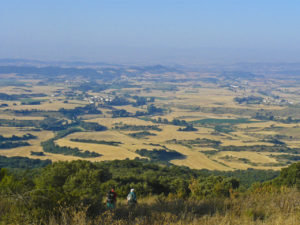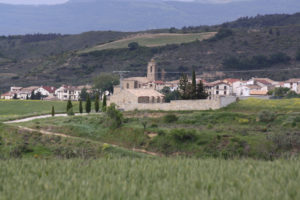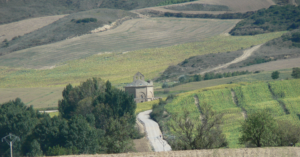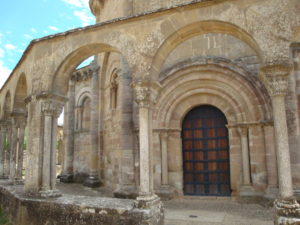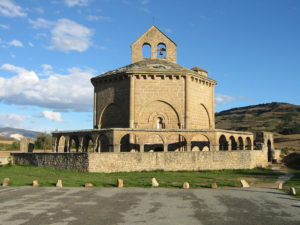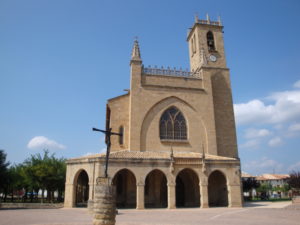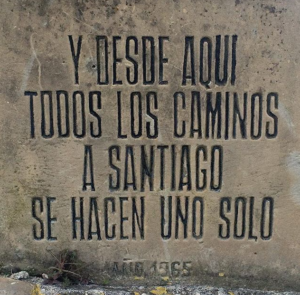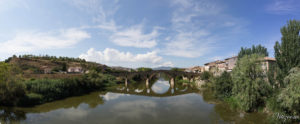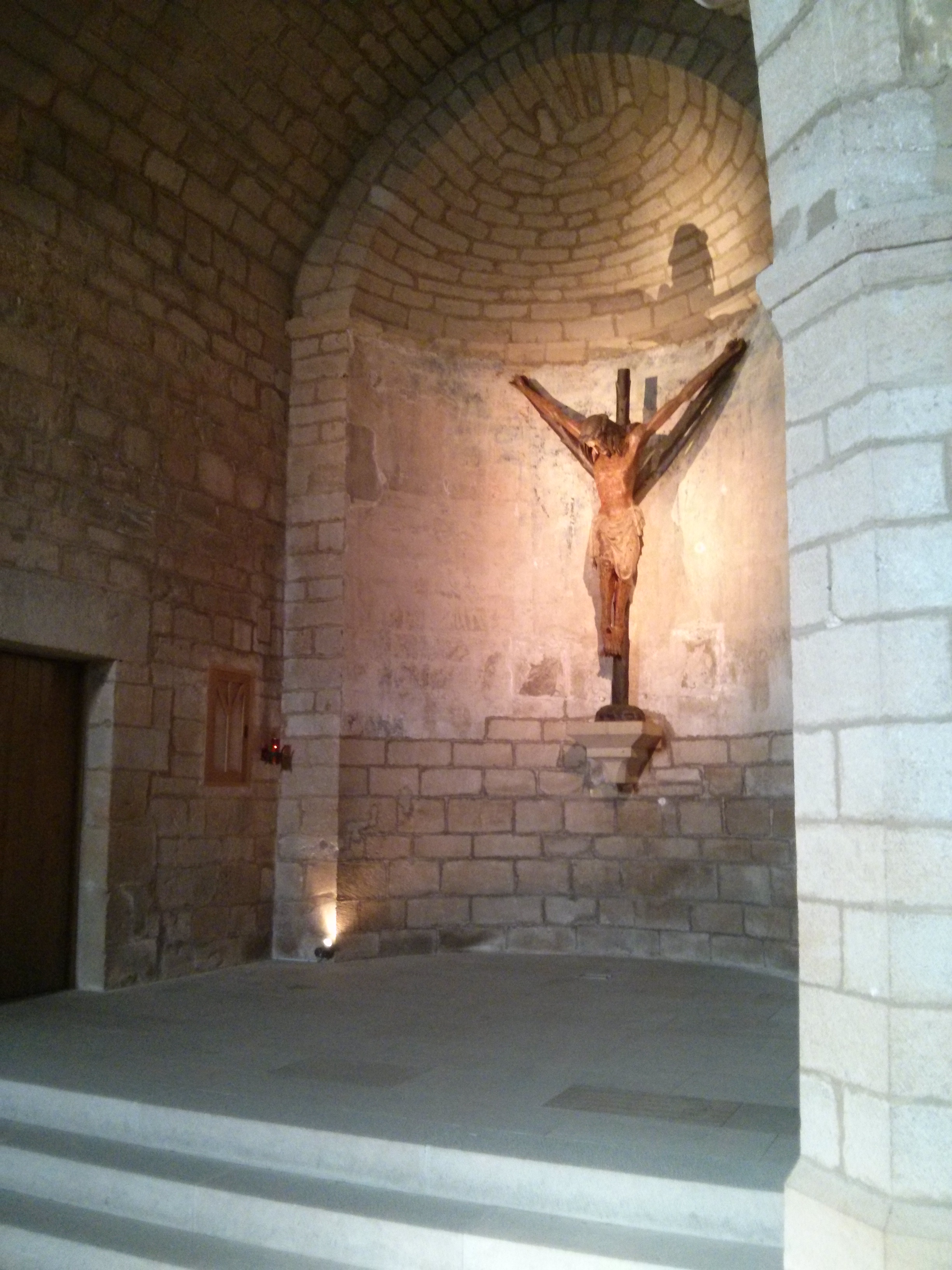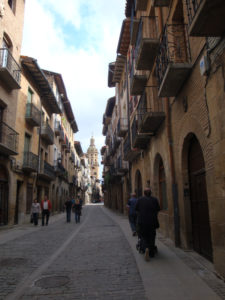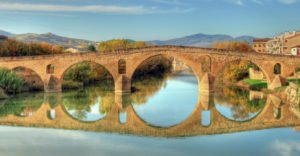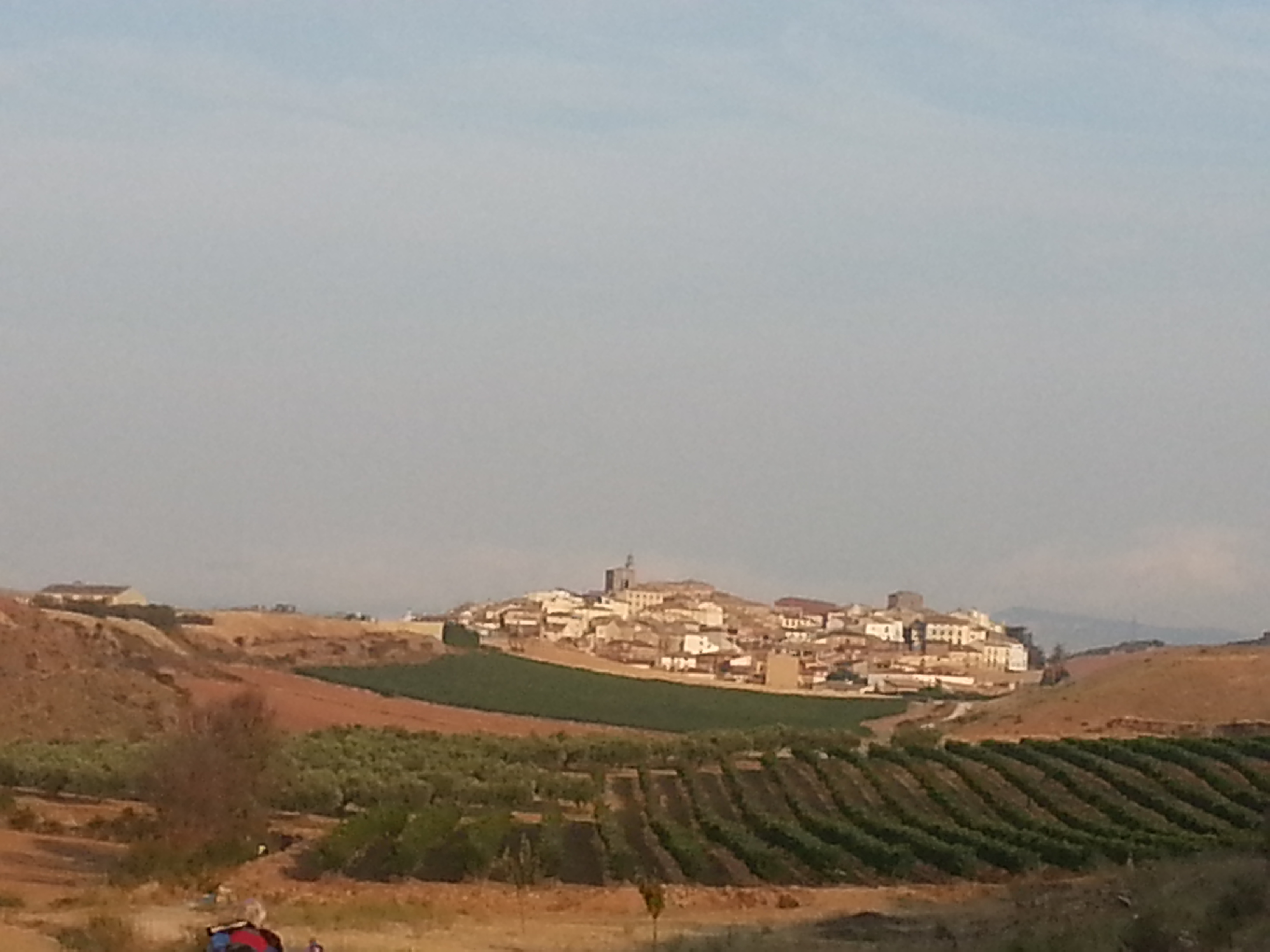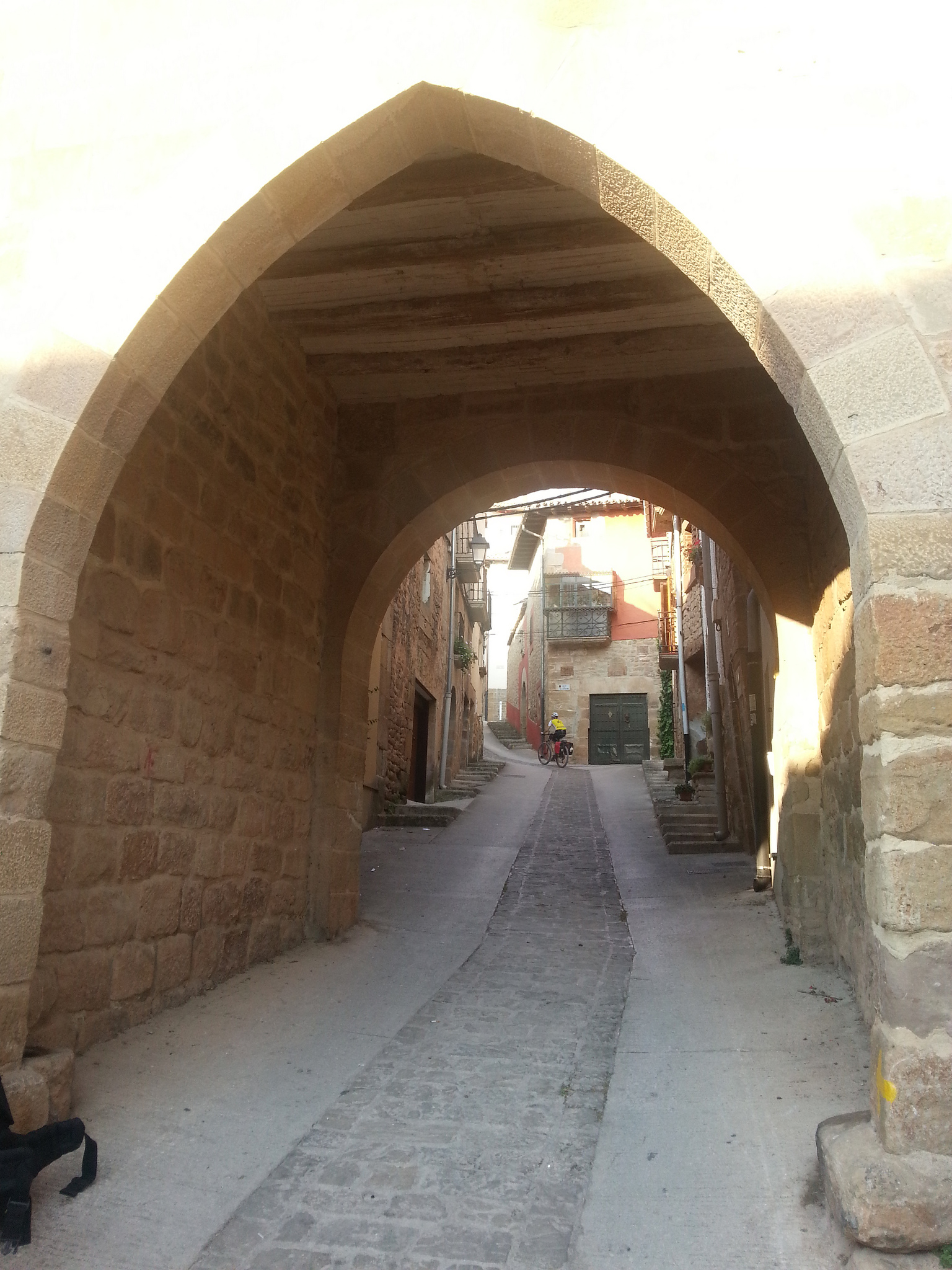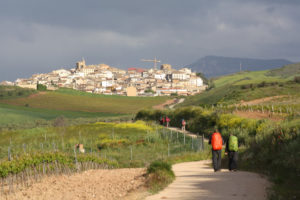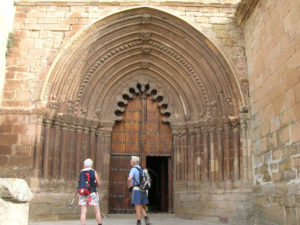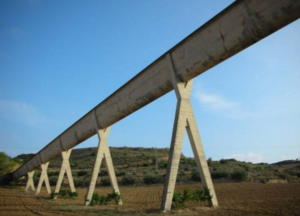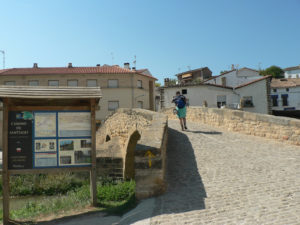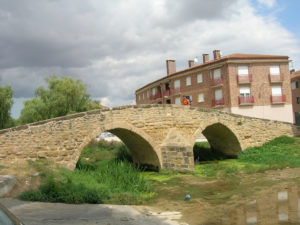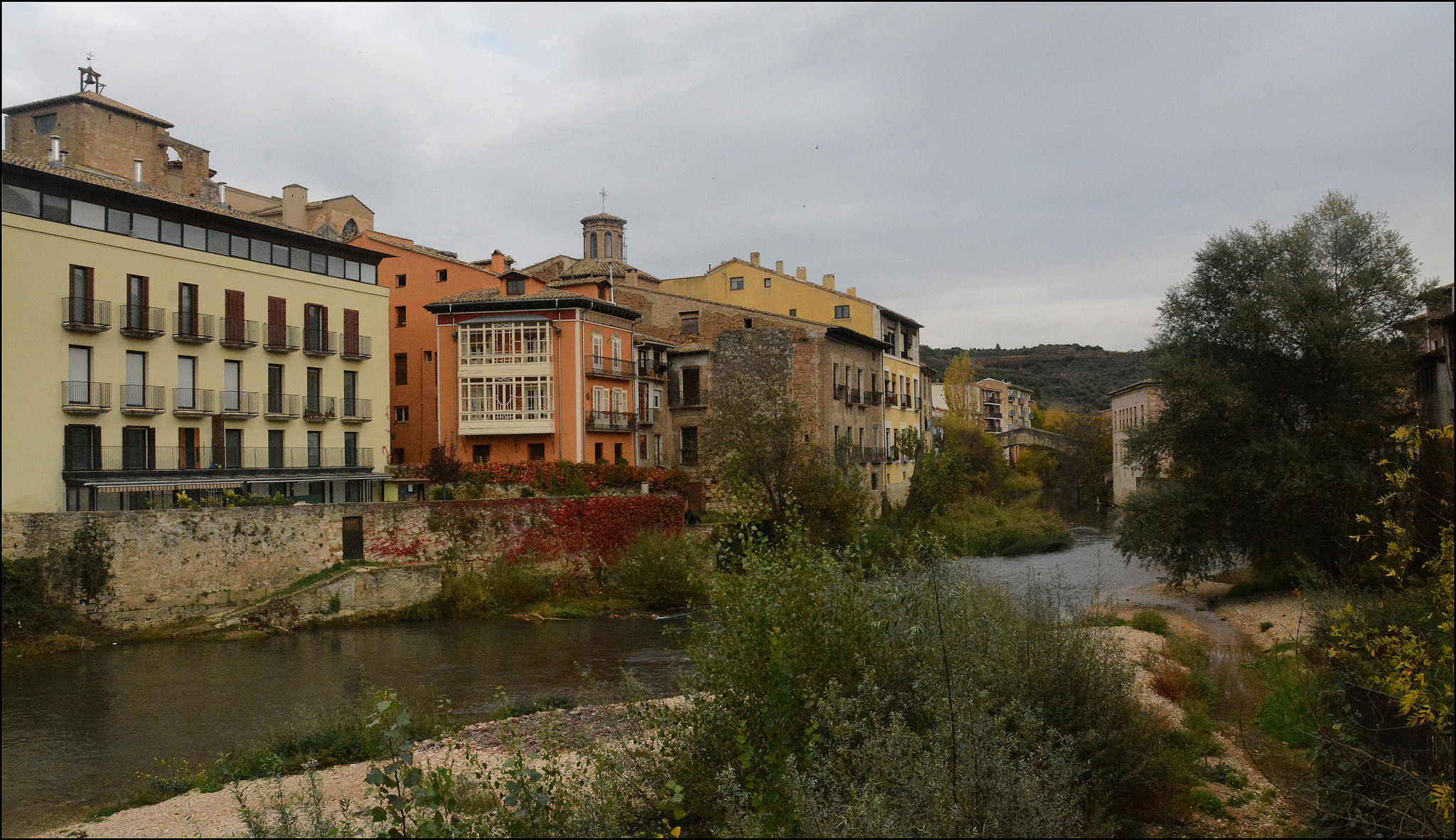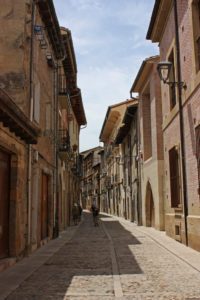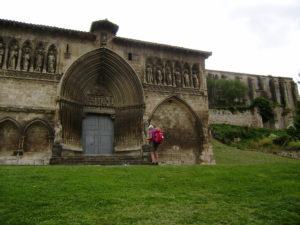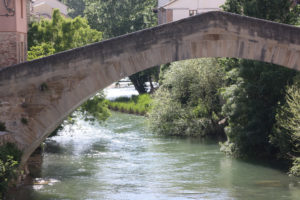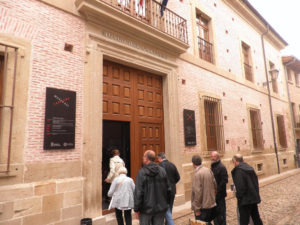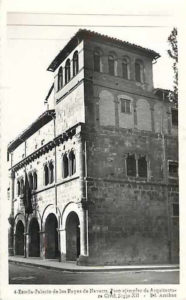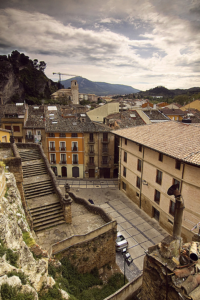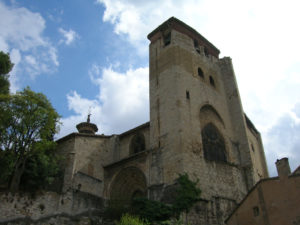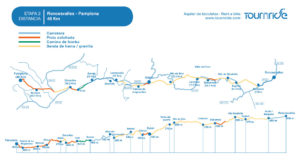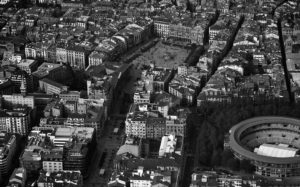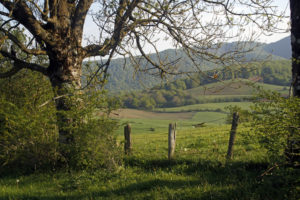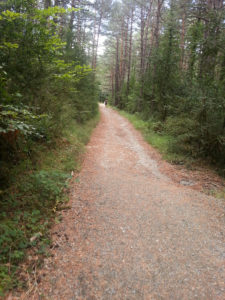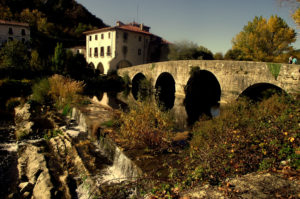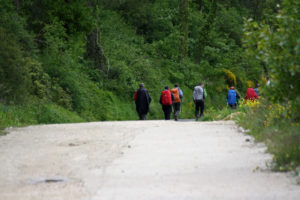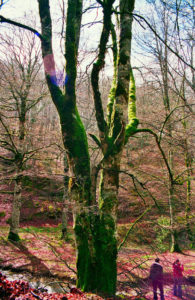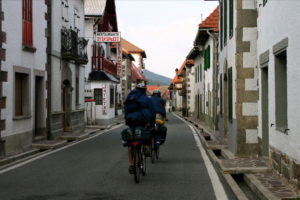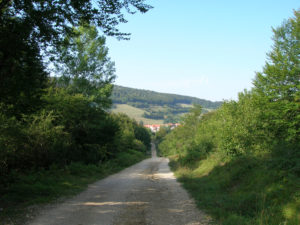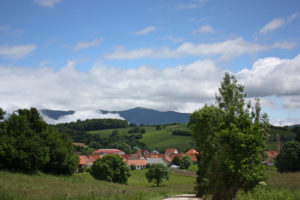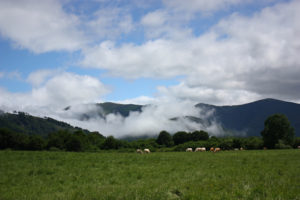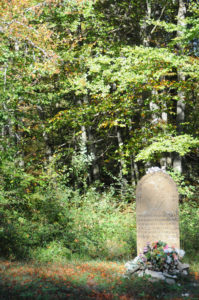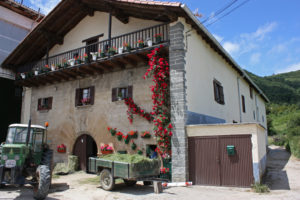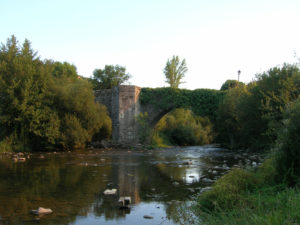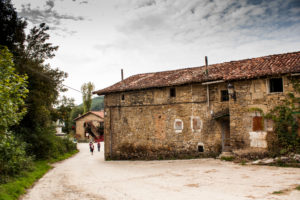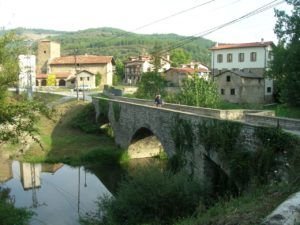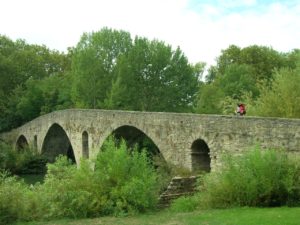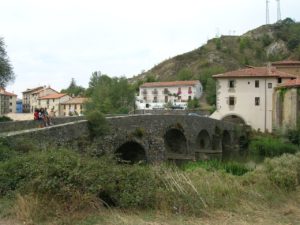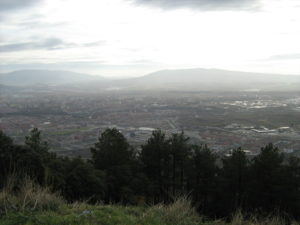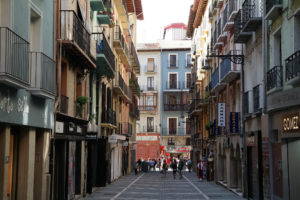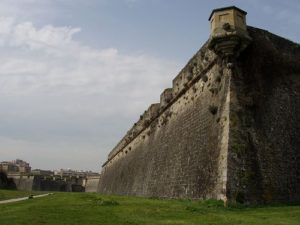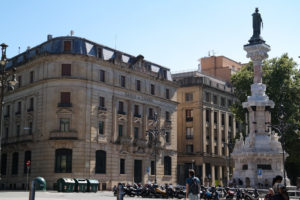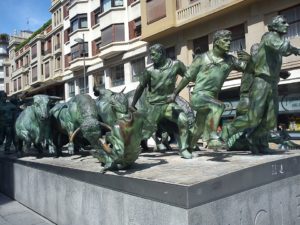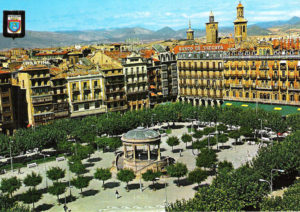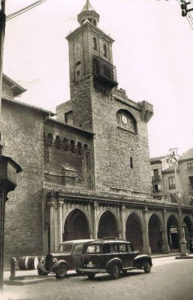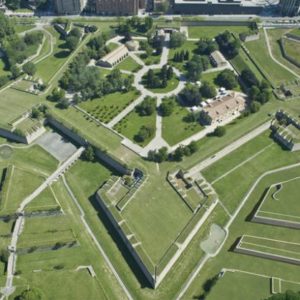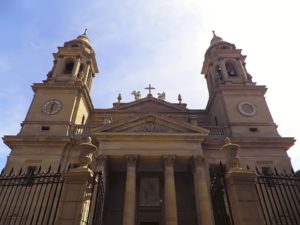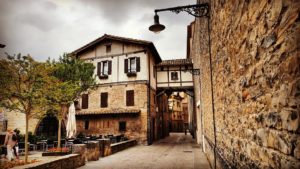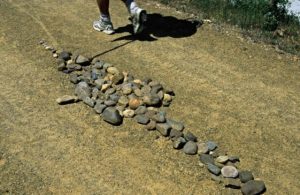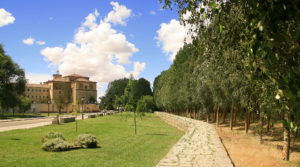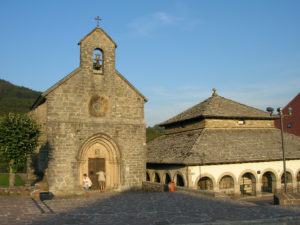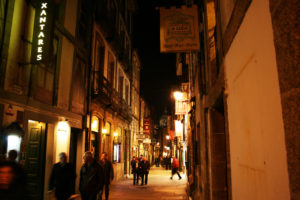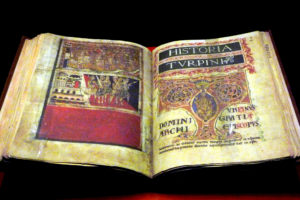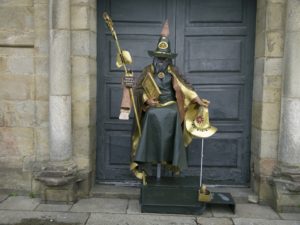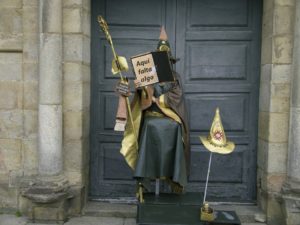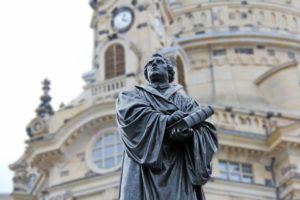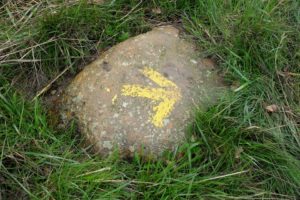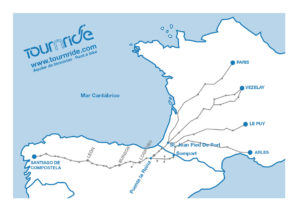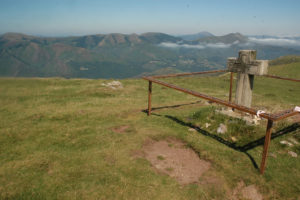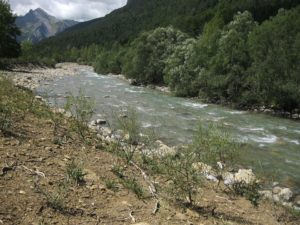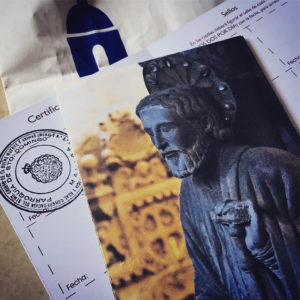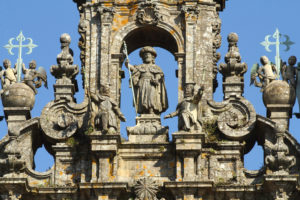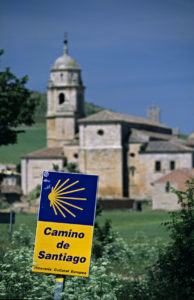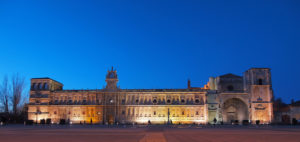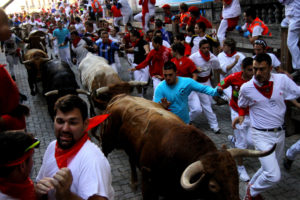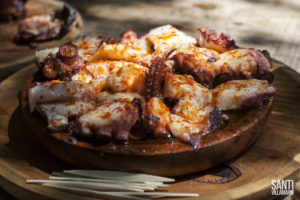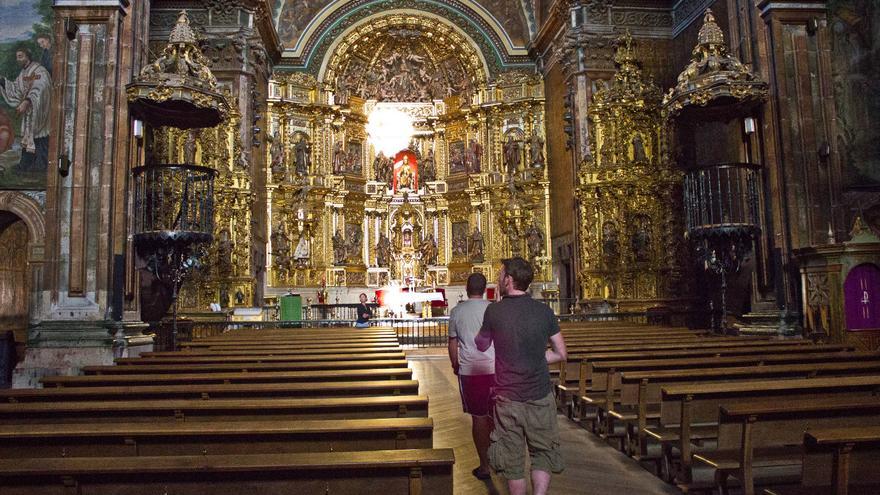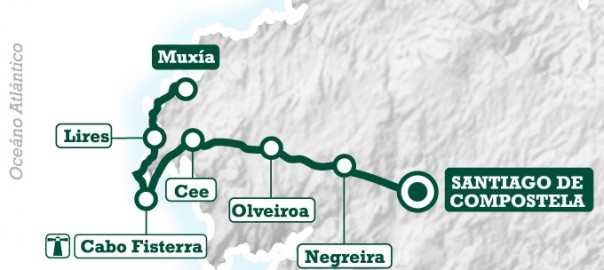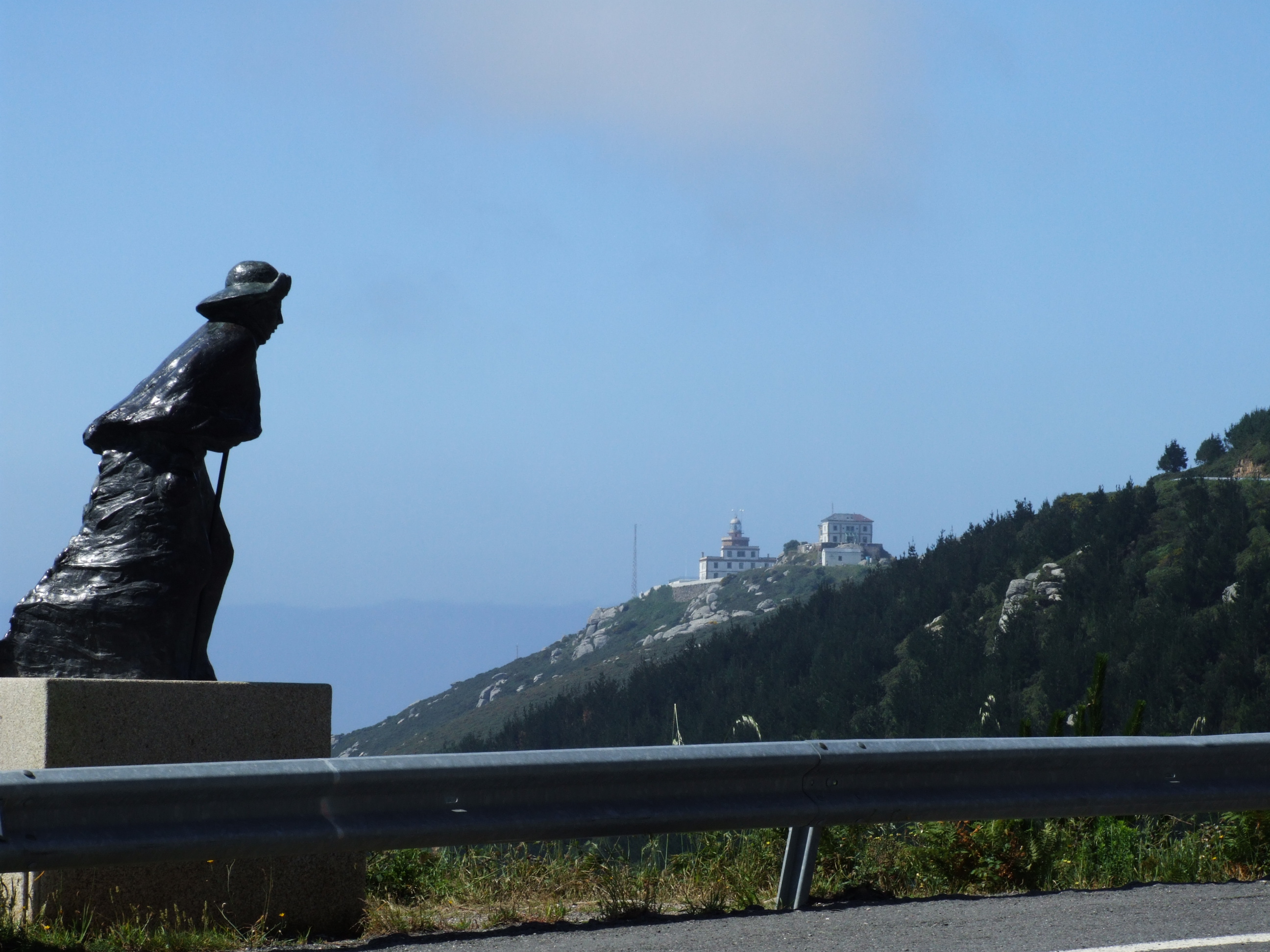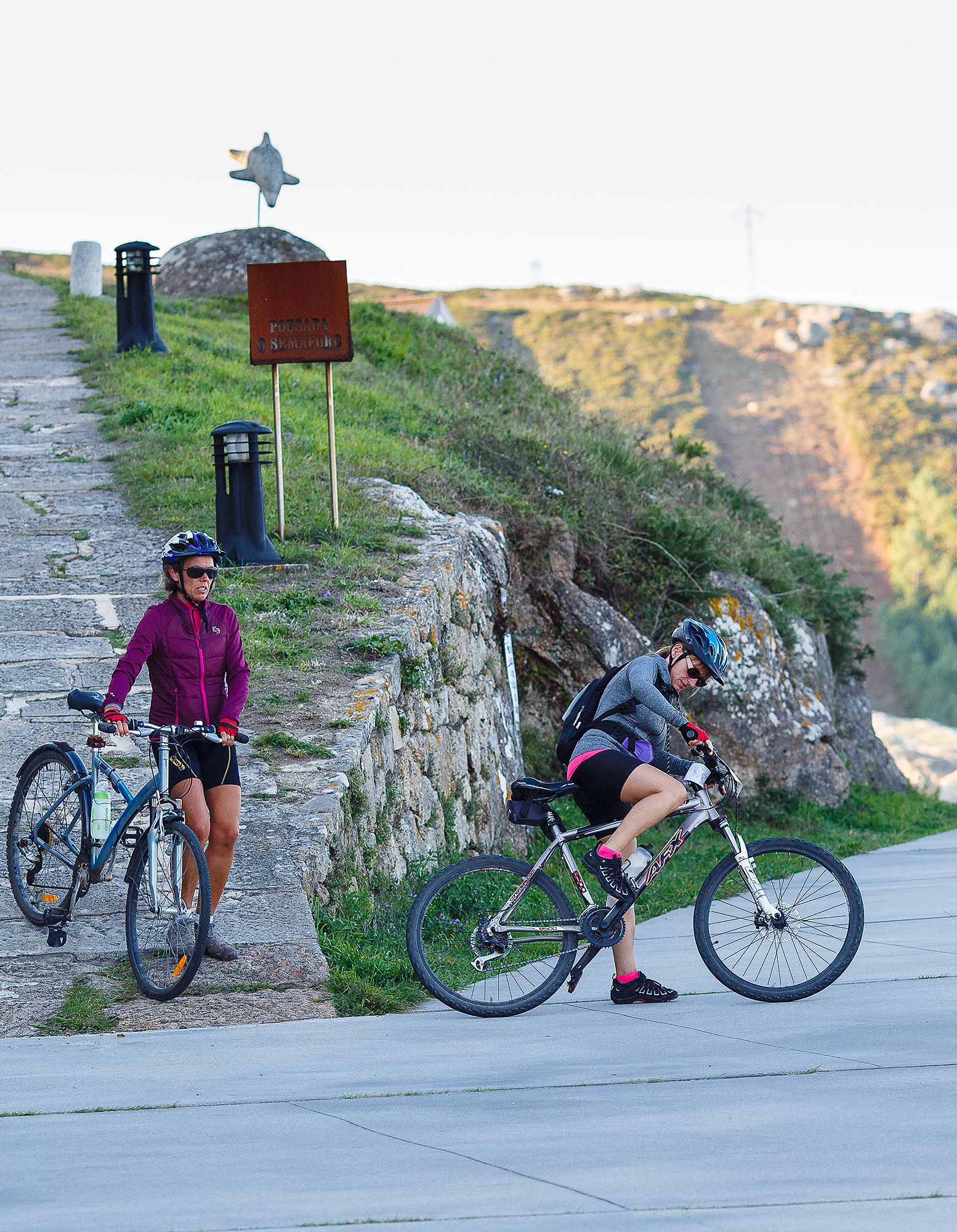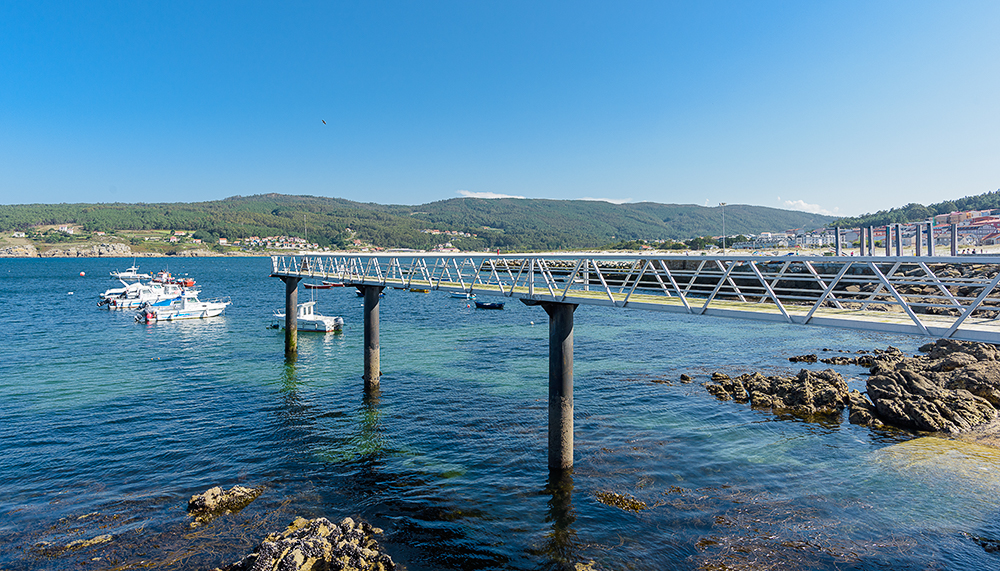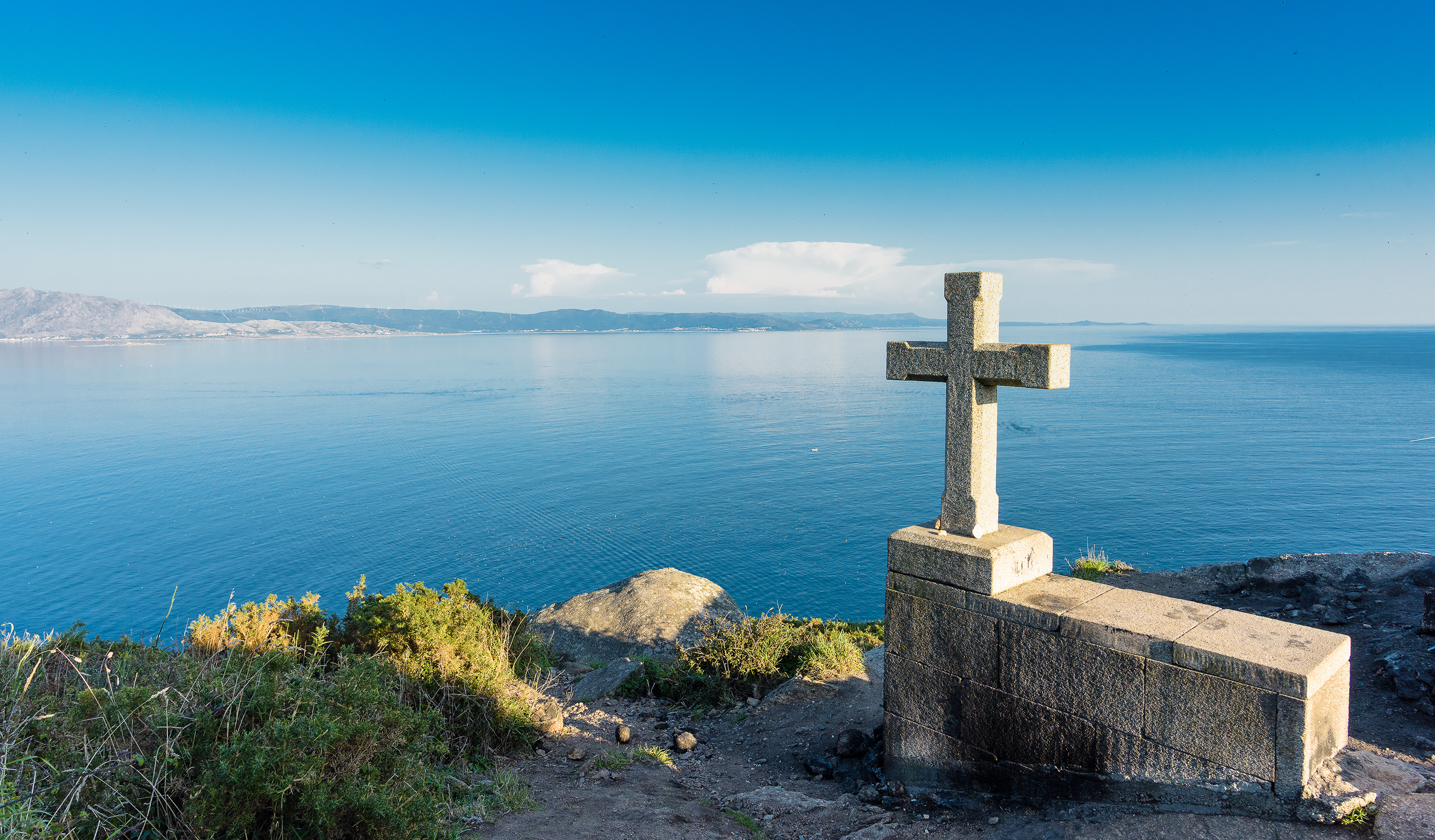Distance to Santiago: 305 km
Stage distance: 49 km
Estimated time: 4-5 hours
Minimum height: 800 m
Maximum height: 950 m
Route difficulty: Low
Places of public interest: Santuario de la Virgen del Camino, Hospital de Órbigo, Astorga
Itinerary map: To see the journey on Google Maps clik here
The exit from León can turn a little bit chaotic and also quite long, since Trobajo del Camino and the Virgen del Camino seem to be an urban external extension. After passing by this residential and industrial area, we come to two options to get to Hospital de Órbigo, which it’s the middle point of this area. The traditional way follows the course of the N-120. The alternative one is a bit longer, but gets away from traffic by some lands and second highways.
After crossing the amazing bridge of Hospital de Órbigo, the way becomes a fork again, making us choose one more time between highways or lands in order to get to the top of Toribio Cross, where we will have a panoramic view of Astorga. The entrance of Astorga is much simpler than the one from León, the only difficulty is the height change we have to surpass.
In general, the industrial character of these populations in which the traditional itinerary passes by, can make this stage a little bit heavy. If we prefer going by lands we will travel in a longer distance.
The only really hard-time we can have could be the weather conditions. If it has been raining, we recommend you to go through the N-120, because the agricultural tracks tend to get muddy. If it’s windy, the way’s height by Villares de Órbigo can turn a little harder.
¡Buen camino!
PROFILE AND STAGE’S MAIN ROUTES
Because of how confusing is the León’s exit, we will try to make the instructions simpler to the maximum. We have to leave the city by the San Marcos Bridge, right next to the parador. Once we get to the cathedral, the easiest thing to do is going down the Ancha Street and turning to Casa Botines, keeping up forward until we border San Isidoro. Turning obliquely to the left we will get to Renueva Street and Suero de Quiñones Avenue that will lead us directly to the bridge.
After crossing the San Marcos Bridge we must keep on moving forward through the Quevedo Avenue, going across a roundabout. Once we travel a kilometer or more, we will see how the avenue turns into a curve to the right, while at the front a metal walkway shows up. Both ways cross the train tracks and that’s why for cyclists, it is better to keep on going by the avenue.
Once we arrive to Trobajo del Camino, we continue going through the avenue until we get to the curve to the left. After passing that curve, we need to pay attention because we must take the first street to the right. It is a perpendicular slope that will take us to the Virgen del Camino. This vertical gradient will become soft little by little.
Going parallel to the N-120, we arrive to the Virgen del Camino (7,5 km of route). After passing it, we take the Paz Street, a left fork of the N-120. In about 500 meters away, we see how it begins to appear contradictory arrows on the ground. This is the moment when we have to decide which way we want to take in order to get to Hospital de Órbigo:
1. Traditional way: Follows the course of the N-120, so we have to go through the pedestrian paths or by the highway. It is about 24 km that go by San Martín del Camino. This profile, in general, is in a light negative slope.
Moving forward through the detour, we must cross the A-66 by a tunnel and then keep on moving parallel to the N-120 to get to Valverde de la Virgen (Km 12), San Miguel del Camino (Km 13,5), Villadangos del Páramo (Km 21) and San Martin del Camino (Km 25,5).
2. Alternative way: This doesn’t have a historical justification indeed, but it allows us to avoid the traffic on the highway. It’s around 28 Km by track and, after some initial leaps, the profile is in a light negative slope.
Turning to the right, we take the LE-5522 to get to Fresno del Camino in about 5 minutes and to Oncina de la Valdoncina in 10. Once we get to the land tracks we will go to Chozas de Abajo and, by secondary road again, we will get to La Milla del Páramo and by good firmed tracks to Villavante, there we will be in about 4 Km to get to the traditional way and entering Hospital de Órbigo.
Once we are in Hospital de Órbigo (Km 33) we cross its amazing medieval bridge and we go back on deciding which way we’re going to take next. We have two options:
1. Traditional way: It goes parallel to the N-120 until just before arriving in San Justo de la Vega, where changes course to the right in order to get to the Cruz de Toribio. It’s about 9 Km changing course and one more to get to the cross. It is a flat profile during the first 5 Km and later, it becomes a light positive slope.
2. Alternative way: It changes course to the right after passing by Hospital de Órbigo to get to Villares de Órbigo and to Santibáñez de Valdeiglesias. In total, it’s about 3 Km more to cover, but the land tracks can be muddy due to rain. The profile alternates positive and negative slopes a little bit harder than the traditional way, but they are reasonable.
Whatever the case may be, we arrive to the Cruz de Santo Toribio (Km 45), a structure located at the top that offers us magnificent views of Justo de la Vega and Astorga.
From this point, we go down through a slope of 1,5 Km with a difference in height of 73 meters, that will take us to San Justo de la Vega, where we will hook up the N-120 one more time.
In order to enter to Astorga we have to cross the train tracks. The pedestrians do it by a high walkway (with slope and without stairs), although we can also continue through the N-120 from San Justo and avoiding the walkway. After we cross straight the roundabout located at the entrance of the city and deal with another short slope that leads us to Astorga, right next to the Mayor Square.
PRACTICAL ADVICES
If you start your journey in León, we help you getting there.
- En autobús. The station is located in the Ingeniero Saenz de Miera Avenue. The company that runs the most is Alsa, because it is connected with almost the entire North of Spain. From Salamanca you can also come with Vivas and from smaller towns such as Burgos or Palencia with Abel.
- By train. León is a very important railway center. To check schedules and prices, go see the Renfe website.
- By airplane. The only permanent connection flight that the León Airport has is run by Air Nostrum.
Remember that in Tournride we leave the bikes in your lodging back in León if that’s your starting point and we can take your extra baggage so it can wait for you at the end of your Camino.
The distances between towns are short and full with services, you won’t find any problem with the supplies.
If you take this route at summer do not forget to take good sun protection and water with you. The straight lines between lands without trees are left behind already, but we’re still in León and hence the sun is still intense.
When it comes to choose the ways,it’s a matter of taste. Direct but with traffic or longer by agricultural tracks, even though the distance on bike don’t mark any difference. As an advice, if it has been raining we recommend going through the traditional way of N-120 to avoid mud.
DETAILED ITINERARY AND HISTORICAL-ARTISTIC PATRIMONY
This stage has as starting and ending points two cities charged with history and cultural patrimony. In between, we will say goodbye to the wasteland plains from León, because tomorrow the profile will get broken again in the Cruz de Ferro ascent going to Ponferrada.
The N-120 has become the spinal column of a lot of populations which name reflects the Jacobean past they carry on.. So many places of “El Camino” remind us how historical these paths are. Today, less historical alternatives have appeared but that run away from the noise and traffic created by the highway.
Even though the whole itinerary can be done more to the North or South, the only must-see point of the stage still is Hodpital de Órbigo, which we have to be thankful for. This stop gives us the chance of knowing love medieval stories and crossing its historical “Paso Honroso (Honorable Pass).”.
WE EXIT LEÓN BY INACCESSIBLE STREETS AND VISIT THE MODERN SANCTUARY OF LA VIRGEN DEL CAMINO
At León’s exit we pass by some of the places we recommended visiting on the final term of the stage through León, so if on the previous day we didn’t have the chance to admire them, we recommend you seeing them now.
Bordering the basilica of San Isidoro we get to the Parador, where we must cross the Bernesga through the gorgeous San Marcos Bridge from the XVI century. It is made of ashlars, with big starling piles that support cannon vaults. In the XX century it was necessary to expand it but they did it respecting its original form.
After crossing the bridge we will go through some streets from the residential neighborhood. To enter in Trobajo del Camino we have to cross the train tracks, whether it’s through highway or walkway. From its Jacobean past, the only things left are its name and one chapel out of four that existed before that are still standing unemotionally between concrete giants. It is dedicated to the apostle and its origins go back to the Middle Age, although what we see today is a renovation of a construction from the XVIII century.
Once we leave Trobajo del Camino behind we go into the western industrial estate of León. After crossing it, we go back to the N-120 until the Virgen del Camino, a commuter town where the highway passes by.
Despite the fact that everything in this locality screams modernity, even its unmistakable main sanctuary, the town’s name indicates it has been a pilgrim’s pass for centuries. There’s a legend that says that in the C.XVI the Virgin showed up to a pastor named Alvar, asking him to notify the bishop so he can build a church in this place. Doubting on the bishop’s word, the pastor asked the Virgin for help in his task. Mary took a slingshot and used it to throw a big stone so the bishop could see it and testify the miracle. They built a chapel right in the place where the miracle stone was located and around it they created the town, that became bigger and bigger thanks to the pilgrims’ pass.
In 1957 they began to build a new temple that it won’t be hard to recognize thanks to its marked modern character. It mixes a variety of materials such as concrete, glass, stone, or wood in a building which its horizontal marked nature breaks by a really high vertical cross as a tower. The facade sculptures are by the artist José María Subirachs and the stained glass windows were made in Chartres (France).
Passing by the temple we have to take the left position of the N-120 in order to exit town. Taking the Paz Street we have to choose, after 500 meters, which way we want to take so we can get to Hospital de Órbigo.
WE CHOOSE OUR WAY FROM THE VIRGEN DEL CAMINO TO HOSPITAL DE ÓRBIGO
As the several contradictories painted art son the ground, there is a little rivalry between both towns that are the favorite ways of pilgrims. Actually the traditional way was invade of traffic noise due to the N-120 construction, so that’s why some close populations started taking advantage to offer more peaceful alternative.
It takes 4 Km more going through the alternative way to Villar de Mazarife, which it’s practically an insignificant distance on bike, so choosing between itineraries is a matter of taste.
If you go through the traditional way you will follow the course of the N-120, having to avoid a junction of roads. By the highway shoulder we can go across without any problem, but going by the pedestrian way we have to change course a little to pass through an underground tunnel underneath the highway.
By land and concrete paths, the view allows us one more time to see the León’s wasteland with some scattered trees alternate with some industrial ships. In less than 2 Km we will get to Valverde la Virgen and in 1, 5 Km more to San Miguel del Camino, both locations have the N-120 as backbone.In San Miguel there was a pilgrim’s hospital since the C. XII and today is actually home of the most important golf club of the León providence.
Following the highway course we leave behind to the right an industrial estate and a big urbanization, and due to how close it is to the French Way it has been baptized as the one of “Camino Santiago”. That’s how we arrive to Villadangos del Páramo, which by the way the name is not that original considering how wasteland the environment is. The Jacobean tradition of this resurrect town during the Reconquest denounces the abdication of its parish church to Santiago Apóstol (C. XVII-XVIII). By its door, miracle episodes are being told, like the one about the appearance in the Batalla de Clavijo (Clavijo Battle). In order to remember this fact each July 25th a resident from town dresses himself up as Santiago Matamoros and enters to Villadangos brandishing his sword on top of a snow colored horse.
Following through the N-120 or by land path parallel to its left shoulder, we get to San Martín del Camino in a soft negative slope. In spite of not counting with excessive services or outstanding patrimony, its almost equidistant position between León and Astorga has made of it an important point of the French Way, also due to its several overnight visits.
In a continuous but light slope, we cover 7 Km separating us from Hospital de Órbigo, passing by cereal and corn fields. In a parallel land path to the right shoulder of the N-120, a Jacobean sign with the yellow scallop Shell shows us where to turn to right so we can enter into town. If we go by highway we need to be careful of not missing it.
In case you chose the alternative way from the Virgen del Camino, you had passed by land paths and secondary roads between small towns until arriving to Villar de Mazarife. Some of these paths match with some old roman streets. We recommend precaution in the N-120 cross by the roundabout just before hooking up again with the traditional way.
WITH “PASO HONROSO” WE CAN KNOW MEDEVIAL LEGENDS AND CHOOSE OUR WAY TO LA CRUZ DE SANTO TORIBIO
Hospital de Órbigo is divided by the homonymous river, over it is located the bridge that has made the whole city famous. El Puente de Órbigo (Órbigo Bridge) is one of the most important monuments of the entire stage, so we recommend pilgrims who go on bike through the highway, to change course in order to visit this bridge.
The bridge’s surface is made of cobblestone, quite uncomfortable for cyclists. The construction seems out of proportion for how the river’s flow is today, but before the Barrios de Luna reservoir was built, the torrent was a lot higher. Historically, there is proof of some structures that were built with the intention of navigating the river since roman times, because the road between León and Astorga was located there.. Besides, so many battles took place in that location, like the one of Swabians against Alans in the V century, or the one that took place against the French people during the Independence War in the XIX century.
Anyway, this place is known especially for being the setting of the “Paso Honroso” (Honorable Pass) according to some chronicle stories. An informative sign located in the middle of the bridge relates this achievement for all the visitors and that we sum up today in Tournride.
Although in the XV century, the horses jousts were practically obsolete, rumors has it that in this location a knight named Suero de Quiñones was so in love of a girl named Leonor that he asked the king to call up a tournament so he could win the lady’s admiration. The king allowed him to do it and the tournament was celebrated during July of the Jacobean year 1434. Its historical name, the “Paso Honroso”, comes from the fact that every person willing to cross over the river, must first battle in a joust, or otherwise, must swim the entire Órbigo and gain the fame of a coward. This included everyone but pilgrims.
In order to praise his participation on the tournament, Mr. Suero promised to break more than 300 spears during the whole month and carrying a huge metal ring around his neck. Once he fulfilled all of his promises, he went on a pilgrimage to Compostela and asked the apostle for Leonor’s love, telling him: “If you are not willing to take my love, there is no joy for me really”. It is said that in the actuality, the ring belongs to the gold short necklace hanging on the apostle’s reliquary in the cathedral.
The jousts of the Paso Honroso were written by many poets and put in many different chronicles. They were so famous back then that even Miguel de Cervantes talks about Suero de Quiñones on Don Quixote! El Quijote! Today, on his honor, the first day of June is the celebration of medieval jousts at Hospital de Órbigo in the Paso Honroso. It is a big medieval festival where people put on some costumes from the period, pretend to have spear fights, sell crafts, and eat in big marquees.
After crossing over the bridge, we keep on moving forward through Santiago Street. A few meters away we will see to our right the Church of San Juan Bautista from middle of the XVIII century. In the beginning it belonged to San Juan’s order, the Jerusalem knights. Inside there’s a plateresque altarpiece quite attractive.
Once we reach the end of Mayor Street from Hospital de Órbigo, we find again some double Jacobean signs, right on the second road fork of this stage. Moving straight forward, we’ll go by the N-120 until Cruz de Toribio, nearby Astorga, without passing by any locality. If we take the wide track that makes way at the right, we will get lost among fields and agricultural vegetation, visiting two more towns in about 3 Km of route.
The traditional way is the one that follows the same course of the N-120. The profile is quite simple, just by the end the slope turns into a light positive one. As an advice, we recommend you to be careful in two of the crossroads of the N-120 that we have to take so we can take the Jacobean paths that can easily go from the right to the left shoulder. If we do this by highway, we must be careful after taking the second curve to the right, because that’s where we change course to go the Crucero de Toribio (Toribio’s Cross).
The alternative way can be more recommendable, except if the weather conditions are unfavorable, especially with rain because the surface can get very muddy easily. This has way more services than the previous alternative way, the one from Villar de Mazarife.. The profile is more complicated, especially because at the end there are a couple of slopes between leaps, but it’s reasonable.
The landscape is not that wasteland, farmlands full of vegetables and reduced forest, with the Órbigo River showing up its big poplar groves in both meadows.
In less than 2 Km we reach Villares de Órbigo, this town has the same name as the municipality where less than 700 people live, who have as a job, mostly, field work. In Villares there is a church with romance origin and baroque remodeling, dedicated to the apostle but with a beautiful sculpture of the Virgen del Carmen. The town connects with Santibáñez de Valdeiglesias through a way and a local highway that we will actually pass by in a few minutes.
Santibáñez also counts with a parish church, dedicated to the Holy Trinity representing the nucleus’s center. Inside, there is a spectacular famous sculpture of San Roque and its Jacobean tradition is reflected in its iconography that appears to be dressed as a pilgrim.
Even so, this Santibáñez town is even more famous thanks to a really fun hobby that people tend to do each summer: one of the biggest corn labyrinths of the world.The tour changes each year and it’s a great attraction for pilgrims who stay the night at the town’s lodging.
Actually, the fact that in this case they choose just one labyrinth has a very symbolic meaning. In the Logroño road, of our fourth stage, in Tournride we tell you how we believe that the Game of the Goose could have been designed by the Templars, being an accurate representation of the Santiago Way. As we told you about bridges in Navarra“entre los que nos llevaba la corriente”, here the labyrinth represents the 42th square from the Game of the Goose, that would lock us up or would take us from “Labyrinth to the 30th”.
At the exit of Santibáñez the surface turns a little more complicated, with dozens of little stones. Besides, there appear the slope changes. We must avoid a couple of slopes between leaps, we almost forget about it after all the flat tracks!
Before arriving to the Cruz de Toribio we pass by the “Casa de los Dioses” (House of Gods). This project, created by the Catalan David Vidal in 2009, involved the restoration of an old industrial ship to build up a reception place and help pilgrims. They offer juice and food for free in exchange of goodwill that must stay exactly like that so future pilgrims could enjoy the place and pay in some way all they take, as David announced. At the end of 2016, they informed about the closure of this curious point of the French Way, but even though the place’s future is not certain, it’s still publically open today.
From the Casa de los Dioses, we continue moving forward by the land path and, after turning left, we arrive in about 1, 5 km to the Cruz de Toribio. Before us, a panoramic view of Astorga will open, for the first time.
WE ADMIRE ASTORGA FROM THE CRUZ DE SANTO TORIBIO AND BY SHORT SLIDES WE COME TO THE END OF THE STAGE
The cross that rules this Astorga’s views was built up in honor to Toribio, a religious man from the V century.. His saint life began when he sold everything he had so he could go on pilgrimage to Jerusalem. And later, he was named bishop of Tui and Astorga.
The chronicles say that when he was the Astorga’s bishop we wrote a letter to the Pope, showing his concern about a doctrine that was becoming popular in town. That was actually the Priscillianism, that years later would be condemned as heresy. The Pope, worried about the situation, asked Toribio to plan a meeting and gave him the power to excommunicate everyone who wouldn’t condemn Priscillianism during convention. Apparently, everyone who was excommunicated confronted Toribio and he ended up being expelled from Astorga.
Years later, Toribio was persecuted by Visigoths and, when he arrived to Astorga he asked for shelter, but they denied him the entrance. Upset, he climbed up to where the cross is and pronounced his most famous words: “De Astorga, ni el polvo”(meaning he didn’t want anything from Astorga). Today, the city actually pays tribute with this cross to one of the most historical characters of town.
After enjoying all the views offered by this cross, we go down the slide that connects with the N-120 and it takes us to San Justo de la Vega, satellite population of Astorga. To get to the end of the stage, we can continue through the N-120 or going through pedestrian paths. You must know that if you’re not going by highway, you have to pass over the train tracks using a high inclined walkway that will make you get off your bike.
After two roundabouts and a heavy slope, we enter into Astorga, the old Asturica Augusta of romans.
AN AFTERNOON PROMENADE THROUGH ASTORGA
Astorga is a simple city to go all over and with so much to offer, which make of it a perfect end for the stage. In this case, it only takes 7 minutes of walking to see the main monuments of the city. In this map that we have created you can see the location of the main monuments and museums, as well as the promenade itinerary that we propose.
Astorga is the capital of Maragatería, a region from the central part of the León province. When we visit it, the most outstanding impression of this culture is the meeting point with all the several stores that offer the famous cocido maragato(a traditional dish). In addition to gastronomy, this entire area shares other folklore elements and traditions. This unit’s origin is actually argued, people say that it may derive from a Latin expression that means “moros cautivos” (mauri capti) thanks to having some type of Berber origin. Also, as we told you in the historical summary of the city, it could also refer itself to the mule drivers’ work, as the name says it they were traders who carried merchandise on a mule through this entire area. The mule drivers went from Galicia (sea) to Madrid (where los Gatos are), that’s where the name really come from, they were going from mar-a-gatos (from sea to cats).
We encourage you to taste the delicacies from Maragatería, but also to visit a city with a glorious roman and medieval past. In order to organize yourself better, we give you the schedules and prices of the visits.
Take a good rest, pilgrims!
To begin, here’s a little bit of history…
We know most certainly that the current city of Astorga was an important roman center. What it’s not clear is what exactly was in the mountain where the city is located before they arrived. The wise roman Ptolomeo says on one of his books that there, it was located the capital of the Asturia’s tribes, so it contradicts the fact that its most important center was not located in the place where Asturias is today.
There’s not clear archeological proofs that there was something in that place before the Romans came, we only have chronicles and old texts of other populations talking about it. It seems a little strange because of the privileged position of the settlement, on a mountain and with great views of the environment.
What it is certain is that in the year 19 B.C the Legio X Gemina arrives to Astorga. In the previous stage we found out how another legio, one of those entities that divided the Roman Army, have founded León. In Astorga, they were also installed with the purpose of controlling the conquered territory and the benefits of the gold mines of las Médulas.
The huge importance that this center was gaining made it into a capital of one of the roman “conventus”, which today would be the same as province. Thanks to its political and administrative function there is a legacy of a great forum, underneath the Mayor Square.
With the arrival of Christianity and the Barbarian invasions that caused the defeat of the Empire, the city finds a way to improve its defensive system building up some huge walls. These big walls from the IV century were restored in the Middle Age and even today there are still some remains in good estate of preservation. /span>
After a tumultuous period of Arabic attacks, since the year 1000 the city becomes again a permanent settlement. That’s how its medieval evolution starts, and that’s when it starts to lose the reticulated designs originated from the Roman beginnings, and appearing its big cathedral among small intersected alleys.
During the Middle Age, Astorga had different government periods and methods; most of them concentrated all the power in one person from an important family asked by the king’s cession. During the XIII century it belonged to an echelon and in the XV century, when Henry IV took control over the throne, a marquis from Osorio’s family took over the power. That’s how the city became a marquis place where the Osorio promoted a lot the commercial sector and the urban growth. The former roman cathedral disappeared in pro of the big construction we see today and other important religious organizations, like the Poor Clare Sisters or the Franciscans settled themselves down in Astorga.
In the XVII century the commercial sector of the city starts to grow. Principally, because the main cause of this was the importance that has been growing since XVI century for mule drivers, a method of transportation for food using a donkey or a mule. They took many items to Galicia and that’s how some important commercial relations were established. With all the cocoa seeds brought by mule drivers from the commercial ports connected to America, appeared different companies that elaborated hand-made chocolate that we still can savor today.
The city continues growing until XIX century, when a variety of epidemic diseases and the Independence War against Napoleon forced the population to go down. Also, some emblematic buildings were demolished, like the medieval castle and a big part of the wall
Besides, at the end of XIX century the train was built in the city. This affected a lot the commercial organization of Astorga, because the mule drivers disappeared and the handicraft production of the companies increased a lot, so they had to use other industrial methods. The city really grew extending territories outside the old medieval fence’s walls.
In the actuality Astorga is a modern city that has kept its traditional facts that have left a mark on its culture. We will find there all the services that we need, and at the same time we can taste the same chocolate they used to eat in the XVII century and go for a walk through the medieval streets or some parts of its glorious past.
First it was Asturica Augusta: from the forum to the current Mayor Square
In Astorga there still are some roman ruins, for example the roman sewers and baths. It’s very interesting to know the place that was the old roman forum, better known as “la plaza” (the square) a political center where the government used to have their meetings, it’s now the same place where the Mayor Square and the City Council are located.
The Forum of Astorga was a squared space, surrounded by a columned portico. In one of the sides a big apse opens up with a marble pavement, which it’s preserved today. It’s named Aedes Augusti and this place is so special that has made people believe this was a temple dedicated to the roman emperor.
There is a street located right on the same spot where the City Council was before; today is the location of the Roman Museum. It takes up the building of the “Ergástula”, a construction which belonged to the old forum. People think that it would surely be part of a u-shaped portico, where a high temple was located on the center. Regarding to its function, we don’t really know what it was. There are some researchers who believe it served as a slave prison who were exploited on the gold mines from las Médulas and Monte Teleno.
In 1999, the City Council got to recover the property and created a superior structure in order to transform it into the Roman Museum of the city. Inside of it we can find a lot of archeological ruins that make the visitors understand how life was during the last moments of the Roman Empire. The Museum’s webpage is also very didactic. We can not only find the schedules and prices for each visit but also we can learn a little bit more about Romans.
If we’re interested of knowing more about the roman past of Astorga, we can visit the roman sewers and baths called “Domus del Mosaico del Oso y los Pájaros”, an old Patrician house where a mosaic on the ground is preserved. The best part is, having to make the “Roman Route”, a promoted initiative by the City Council since 2005. The Roman baths, the sewers and the Aedes Augusti can only be visited doing that route. All the things left can be visited for free or pay separately. On this page you can find all the information..
In the actuality, the Mayor Square still is the life’s center of Astorga’s government. The City Council building is one of the biggest examples of civil baroque from the León providence. During the “Siglo de las Luces” (The Lights Century), they promoted the construction of a lot civil buildings, because this illustration gave room to a political debate and the civil government. That’s why many civil buildings from Spain are baroques, mainly because at the end of XVII century and during the XVII that was the most popular style.
The building is completely symmetrical, it’s organized with two stages, the upper one has a forging balustrade. The two big sided-towers are connected to the central bell gable by some kind of balustrade sculpture that resembles as a flying buttress. From the upper part of its clock we can appreciate Colás and Zancuda, two sculptures from Maragatería that ring the bells with a mallet right on each hour from the XVIII.
We are heading to the big medieval monument of Astorga… The Cathedral of Santa María
We go out from the Mayor Square by a pedestrian Street called Pío Gullón, on the opposite side of the City Council. After two crossroads, we must go across a pedestrian crossing and, by taking the obliquely street to our right, we will get to Los Sitios Street, which it’s wider and will lead us to the cathedral in few meters, but before passing by the Palace of Gaudí.
CAs we said previously, before this monumental cathedral was opened back in the XV century, there was another one but smaller with a roman style. It was demolished with the purpose of building a new one that actually lasted about 3 centuries to be finished. This delay on the construction made the architecture’s evolution to be captured through the cathedral during those three centuries, as if it were a time line sculptured on stone. The building’s construction always began with the apse, considered as the most sacred part and they always finished with the western facade. That’s why the inside of the building and its apse are in a late Gothic style (C. XV), its South cover is from the Renaissance (C. XVI) and its western facade is baroque (C. XVIII)).
The inside is divided in three ships, which the main one is the highest and the widest, with big pointy arches as separators. Above them, it’s located the elevation’s second level, an arches’ clerestory also pointed. In these windows we don’t find colorful stained windows, like the ones back in León, but we see the natural light coming through the temple in abundance, a little bit broken by the thin decorative traceries of the windows.
The Cathedral’s vaults of Astroga are a delight. On them, the pillars tend to intertwine themselves creating complicated stars forms, that we can actually admire without getting interrupted: the clean light of the clerestory lights up the pillars, lacking of decoration, standing out all these beautiful symmetrical drawings.
In the outside, the most outstanding part is the western facade, profusely decorated. A high level piece of the baroque from León, it resembles some kind of altarpiece, like the one we will find at the inside of the building – with the exception that that one is gold and from the C.XVI-. In the down part there are three splayed covers, maybe being an imitation of the one in León, because the central one is much bigger. Next to them, at not above them, two huge towers are built up connected to the central body by some flying buttress in the upper part.
Regarding the decoration, there are scenes sculpted about Christ’s life and Santiago also appears dressed as a pilgrim, being proof of the mark left by the Jacobean pass on Astorga’s history.
Exiting the cathedral we only have to go back a few steps to find right in our front the Episcopal Palace of Astorga, the so-called Palacio Gaudí. As we mentioned before in the previous stage when we visit the casa Botines of León, the great modern architect only made a few projects outside Cataluña, including this one. The assignment appears when the former episcopal palace of the city gets burned up in 1886 and the bishop asks Gaudí to design and create a new residency.
As we see the construction a lot of references come up to our heads, from Disney to Gothic Cathedrals. Gaudí made this palace as a reinterpretation of several historical elements, using different elements and styles. We must keep on mind that in the original design there wasn’t the external fence that we can see today, made of granite and iron and that doesn’t allow us to come close to the palace if it’s closed.
From the main facade, quite ahead, without doubt the lower portico stands up. Four big splayed arches where big keystones leave a mark, they support a cupola over pendentive. In addition, each lateral facade of the building is put in frame with big fortified towers. Three of them are similar and just one is higher. The head of the building, at the opposite part of the façade, resembles a Gothic apse, like a big ambulatory.
Although it has the appearance of a cathedral, the building’s shape isn’t a regular one, because it’s actually a Greek cross. The roof is made of slate and gable. The palace has four floors, including the basement which it is shown on the moat that surrounds the building, exactly like the medieval castles.
There are many influences on this architecture’s original masterpiece, but that one that stands out the most and calls people’s attention is the Cathedral of León: all the stained church windows are full with stained glass ones, elaborated by some prestigious studios. The drawings’ designs shown resemble the ones from the Saint Chapelle of París.
The Gaudí Palace operates in the actuality as the Museo de los Caminos. Inside of it we can see art pieces related to pilgrimage, while we walk through the different rooms that were supposed to be a residency, but it never really functioned like that.
We choose if we want to keep on visiting Astorga and taste its popular gastronomy
In Tournride we understand that after an intense day of pilgrimage, extending the touristic visits can be tiring. That’s why we end up here our journey, but we leave you with some notes about other things you can appreciate in Astorga.
As we mentioned before, it is possible to get to know profusely the roman past of Astorga making the Roman Route: roman baths, sewers, old temples, houses, museums, etc. If we’re interested more in medieval art, at the Church of San Bartolomé (C. XI) we will see a superposition of styles that can be very interesting.
For the ones who enjoy food the most, we recommend the visit to the Chocolate Museum of the city. We will learn everything about the chocolate tradition of Astorga, due to its location with cold weather it allowed an excellent preservation of this subtle material. It only takes four rooms to go all over the museum.
Whether we visit these monuments or not, we can’t leave Astorga without tasting its emblematic dish: el cocido maragato (The Maragato stew). Thanks to the difficult weather that Maragatería had there appeared a strong and satiating popular gastronomy. Thanks to the difficult weather that Maragatería had there appeared a strong and satiating popular gastronomy. The popular legend says that we have to eat el cocido maragato backwards, first the meat, then the vegetables and last the soup, because of the saying “de sobrar, que sobre sopa” (If something has to be the leftover, let it be the soup).. Astorga is full with restaurants that offer you the typical dish, so you won’t have any trouble finding the place to taste it.
Besides the stew, la cecina is also typical, just like in León. And, for deserts, this city is a Paradise: besides chocolates, milkshakes and sweet breads are hand-made. This is a treat for your palate.
You will have to recover energy because tomorrow we have the climb of the Cruz de Ferro. We get closer to Galicia already…
¡Buen camino, pilgrims!
